Chiang Rai was a name that we had heard but never really paid attention to. It kinda followed Chiang Mai as places to see but never really struck us as a place to go. When you are doing your planning and do a quick what’s there search you will find the White Temple, The Blue Temple and the Black House Museum.
From there if you click through to images the White temple will blow you away. From that point alone we figured that we had to go.
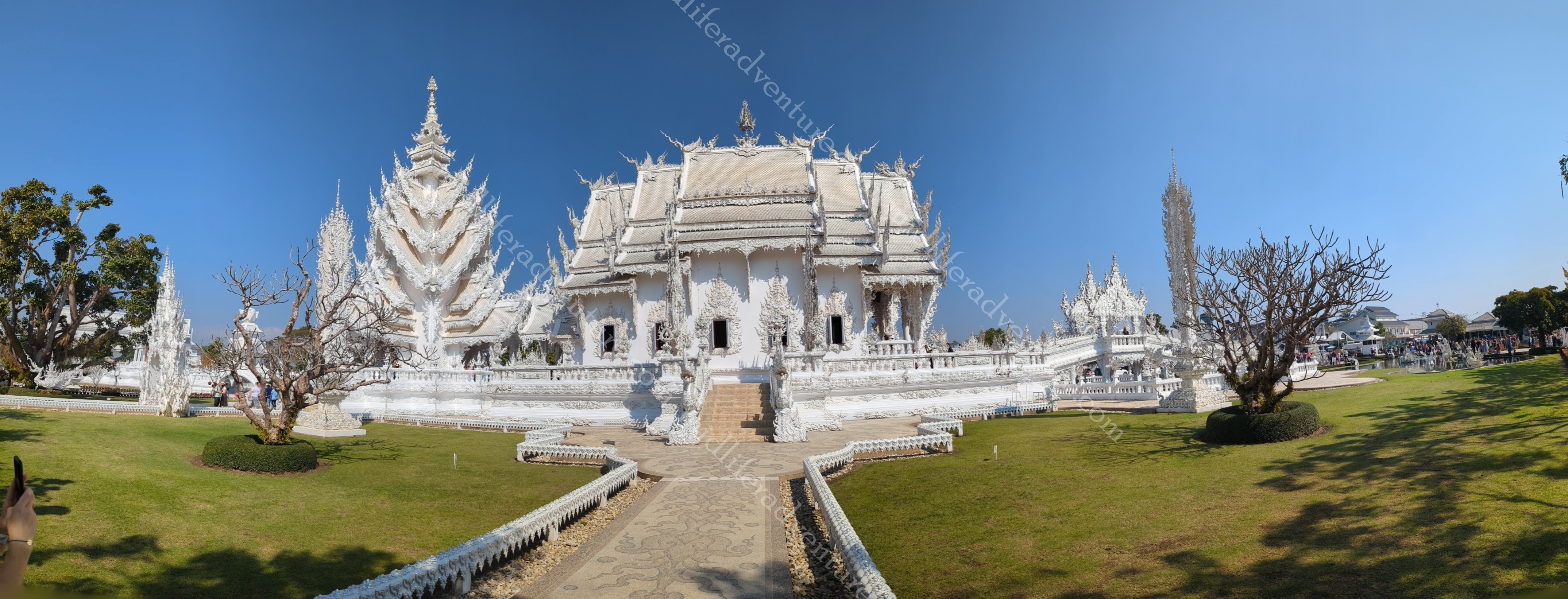
The two cities are only a 3 hr drive apart and as such a general search of things to do will roll the Chiang Mai and Chiang Rai attractions together. In fact, there are return day trips from both cities to see each other’s attractions – albeit a pretty long day.
Getting to Chiang Rai
This bit was pretty easy as from Chiang Mai there are loads of options. We opted for the bus. We paid top dollar for the first class bus 300 baht ($15 each) but the bus was delayed and then merged with another route so we got downgraded to a lesser bus and was refunded 100 baht each as we boarded the bus. Either way, the bus we got was perfectly reasonable so sit down, stare out the window and 3 hours later you are being delivered to the heart of town.
You could have paid more and taken a private car but the time would have virtually been the same and the air-conditioned bus was comfortable enough for such a short trip. That said I don’t think I would want to go much further in a bus.
Chiang Rai Central
Our first 5 minutes in Chiang Rai put us back in the Thailand we remembered – right in the midst of the girly bars. This is something we did not see once in Chiang Mai ( I did google it later – they were there we just didn’t see them). But within 300 meters of our hotel there they were, scantily clad and asking all of the usual questions. As it turned out this had more to do with where we were living as really this scene in Chiang Rai is fairly small. Oh yes, and the weed is still everywhere.
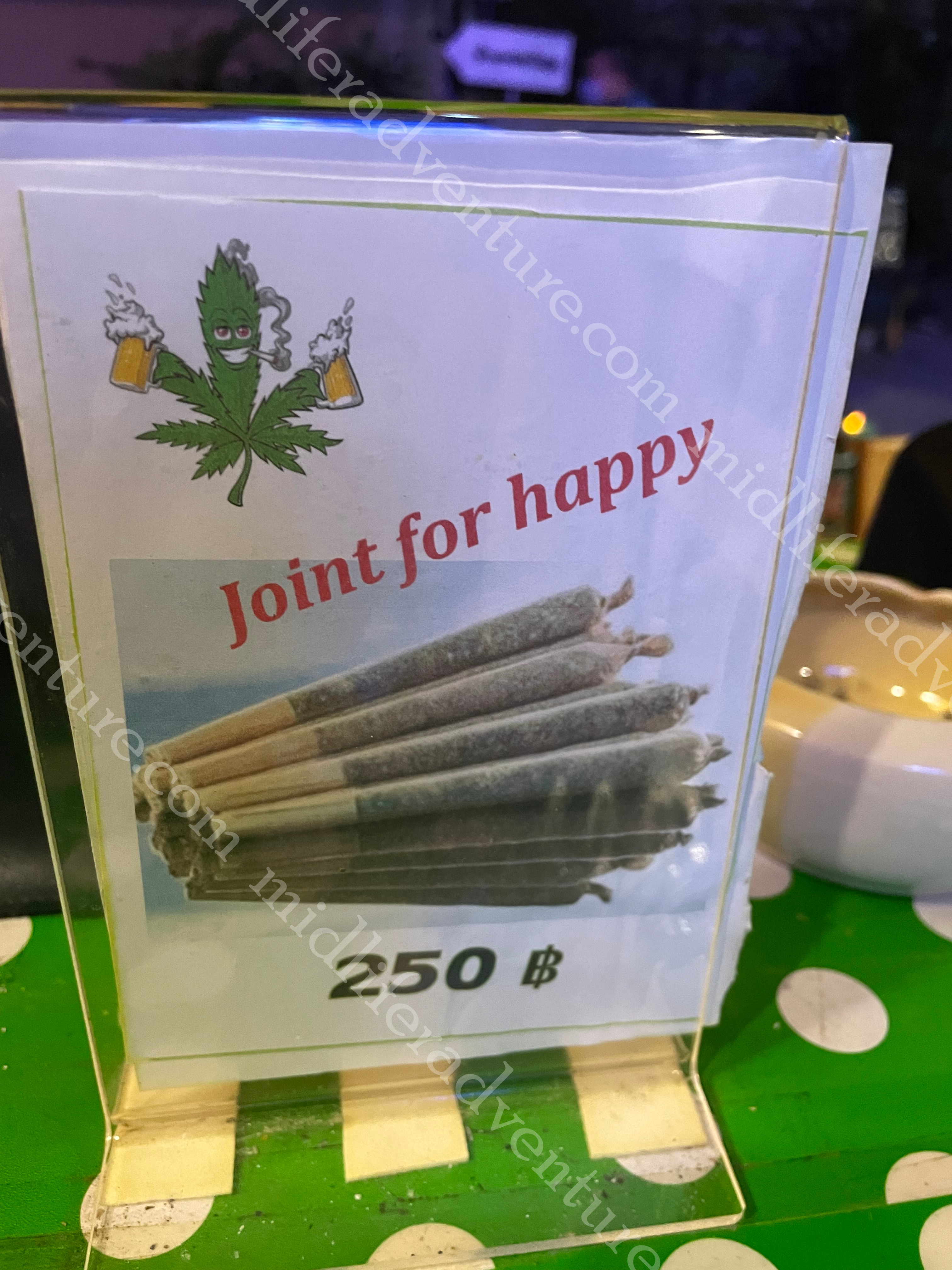
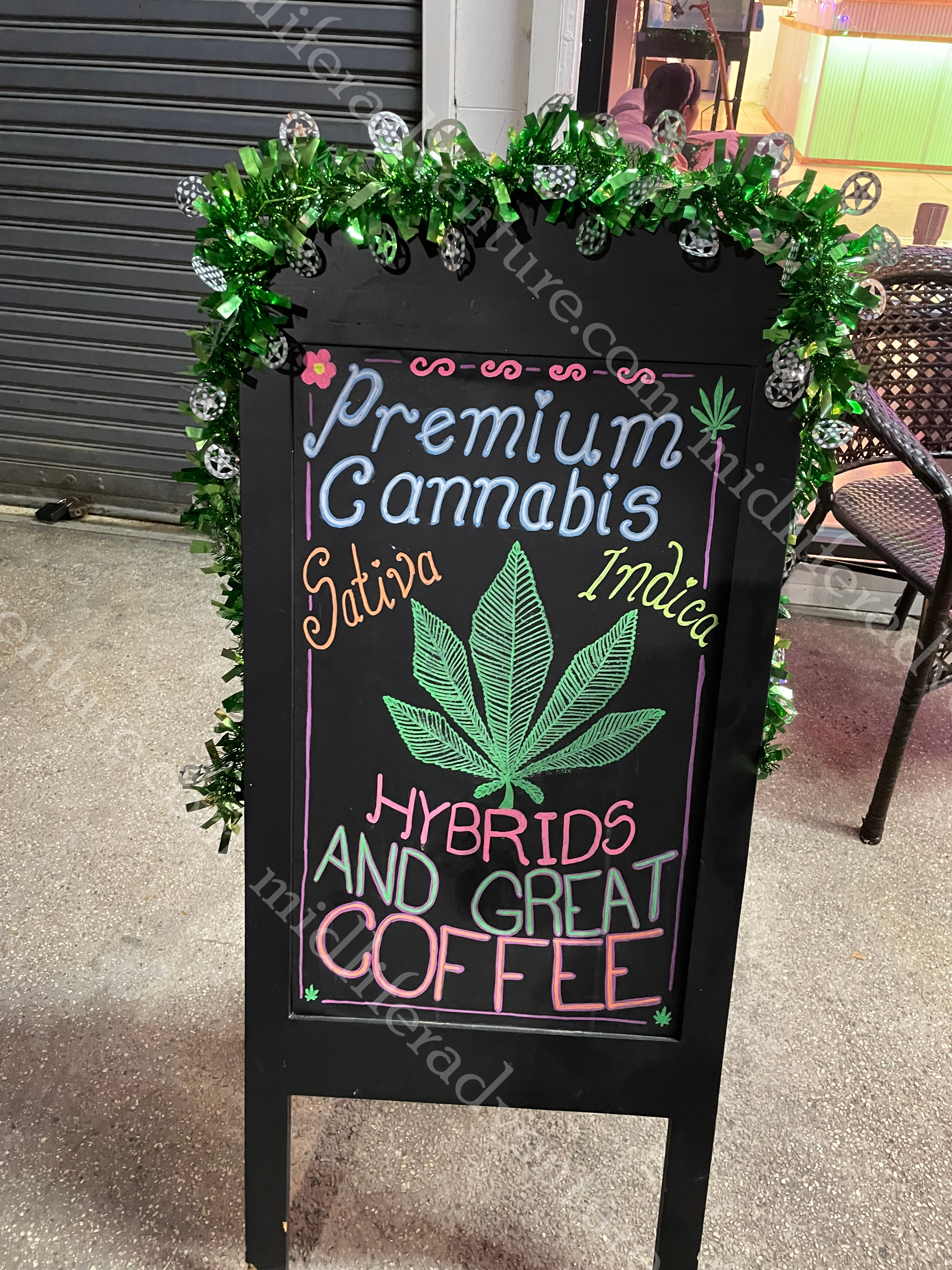
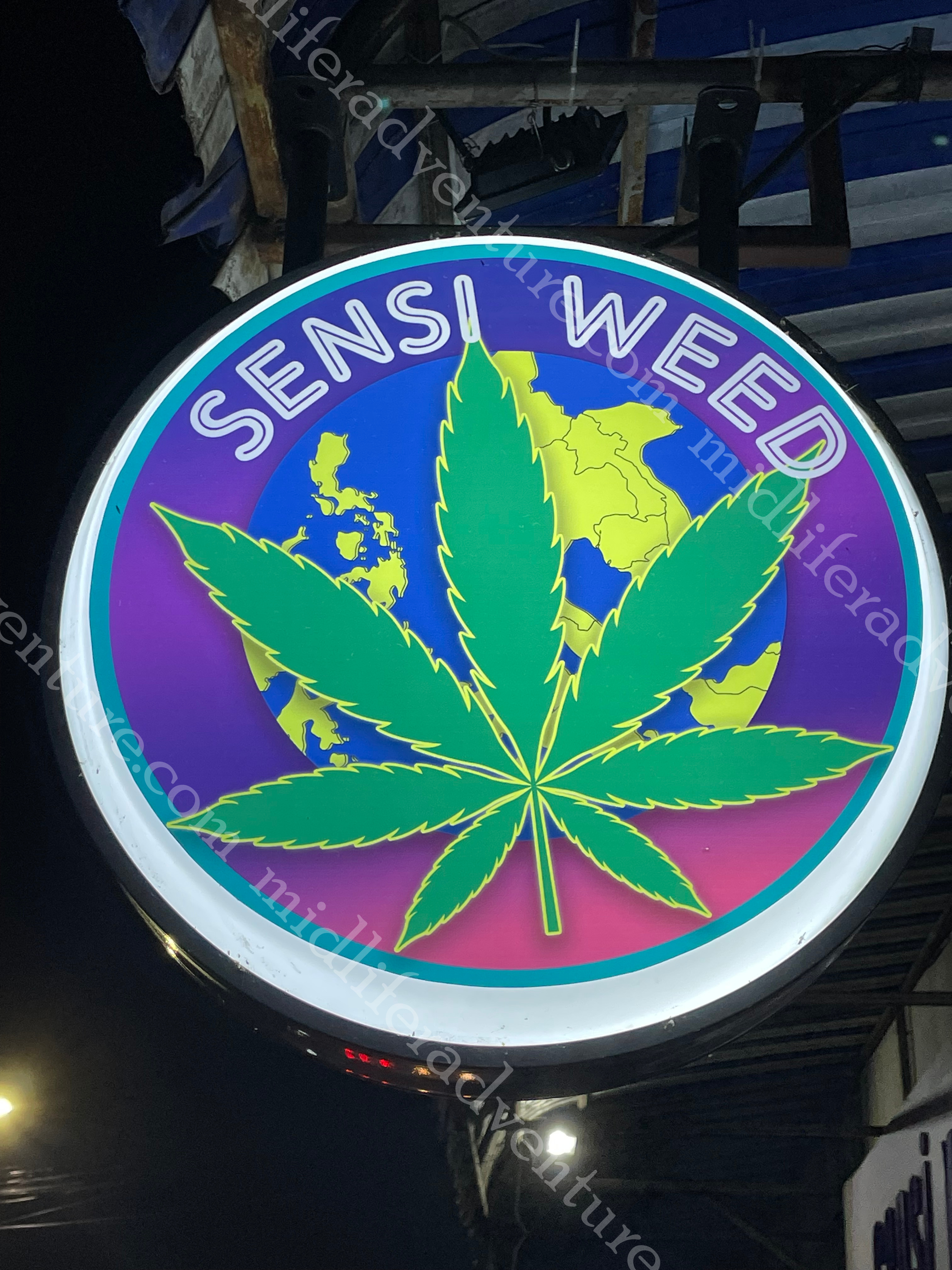
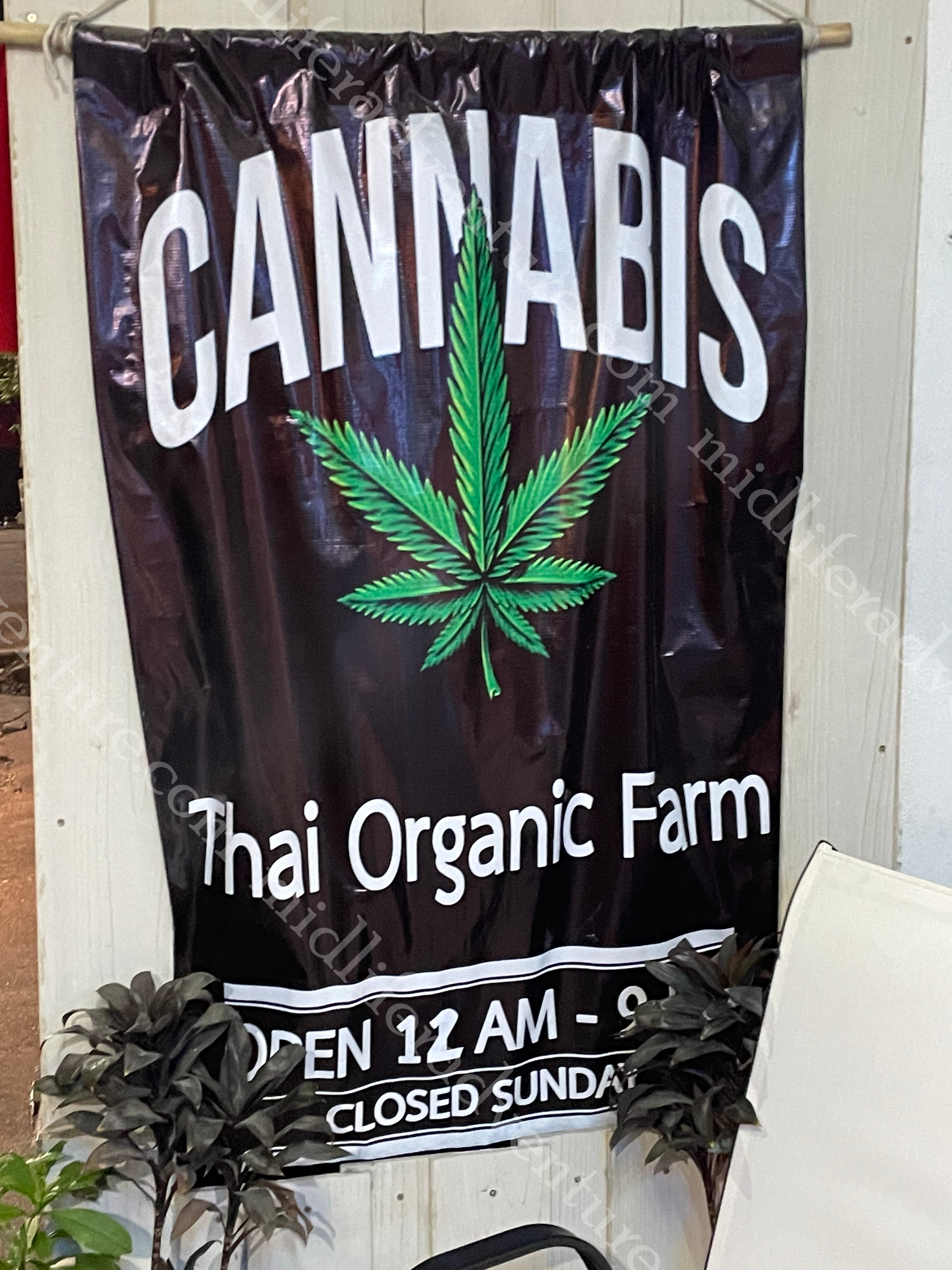
The center of Chiang Rai is actually pretty small and it is easy to get around just about anywhere on foot (notwithstanding the state of the footpaths). There are some Wats, some lesser-known and smaller attractions within easy walking distance and some a few kilometers from town that may warrant a tuk-tuk. Things like the clocktower, hilltribe museum, Mae Fah Luang Art and Cultural Park (see temple artifacts, botanical gardens, and traditional teakwood houses) the Oub Kham Museum (artifacts of the Thai royal family).
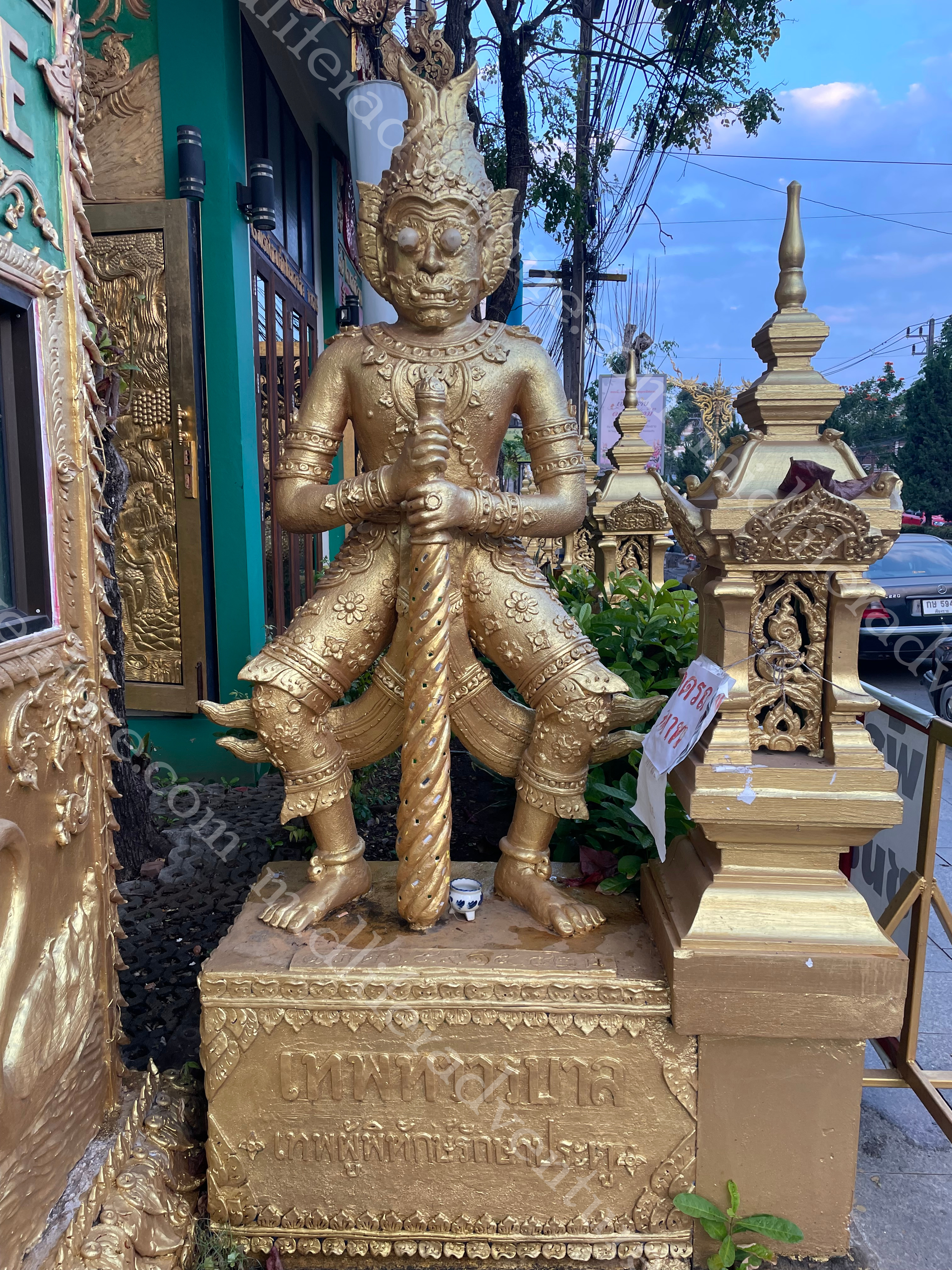
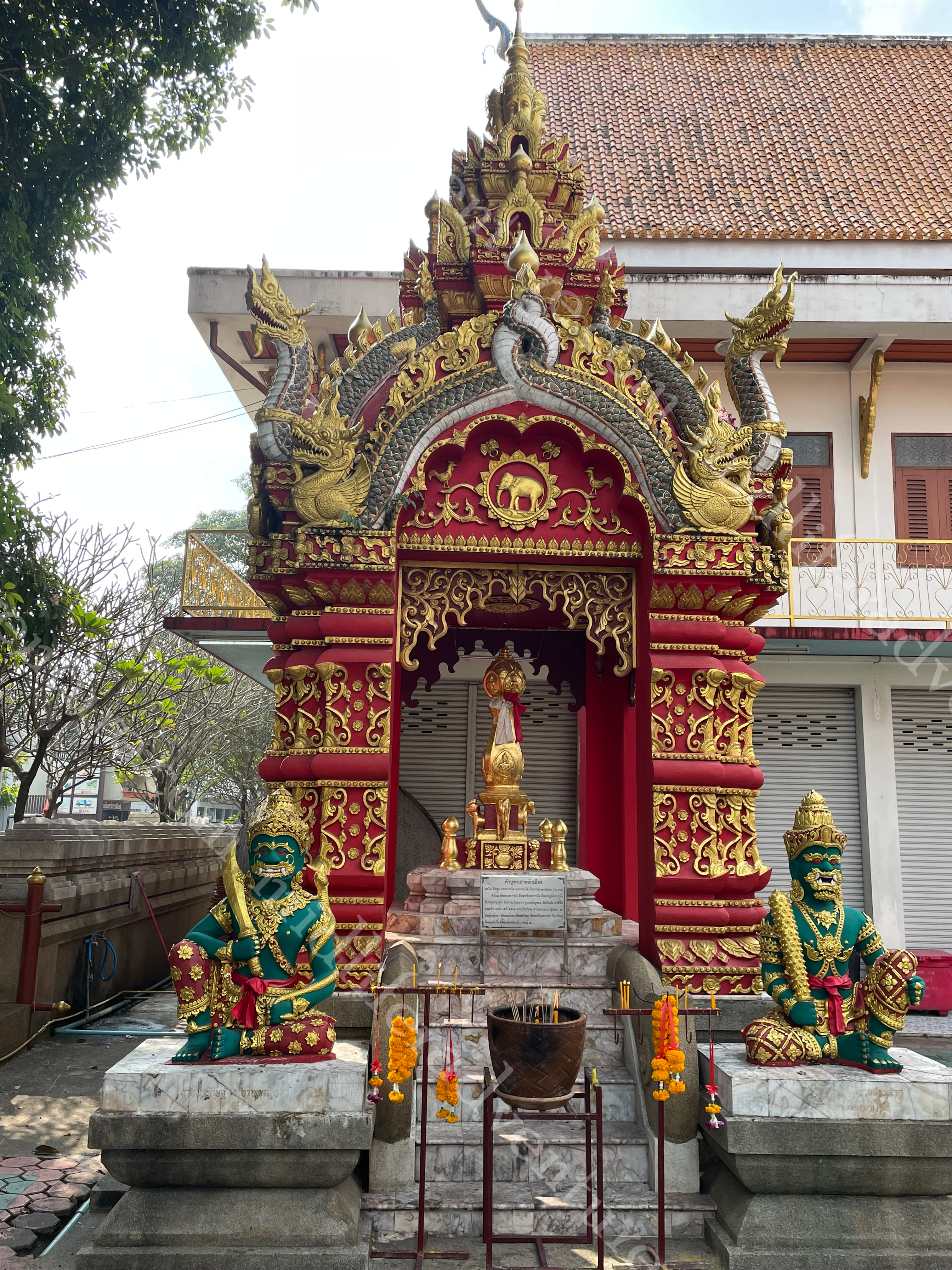
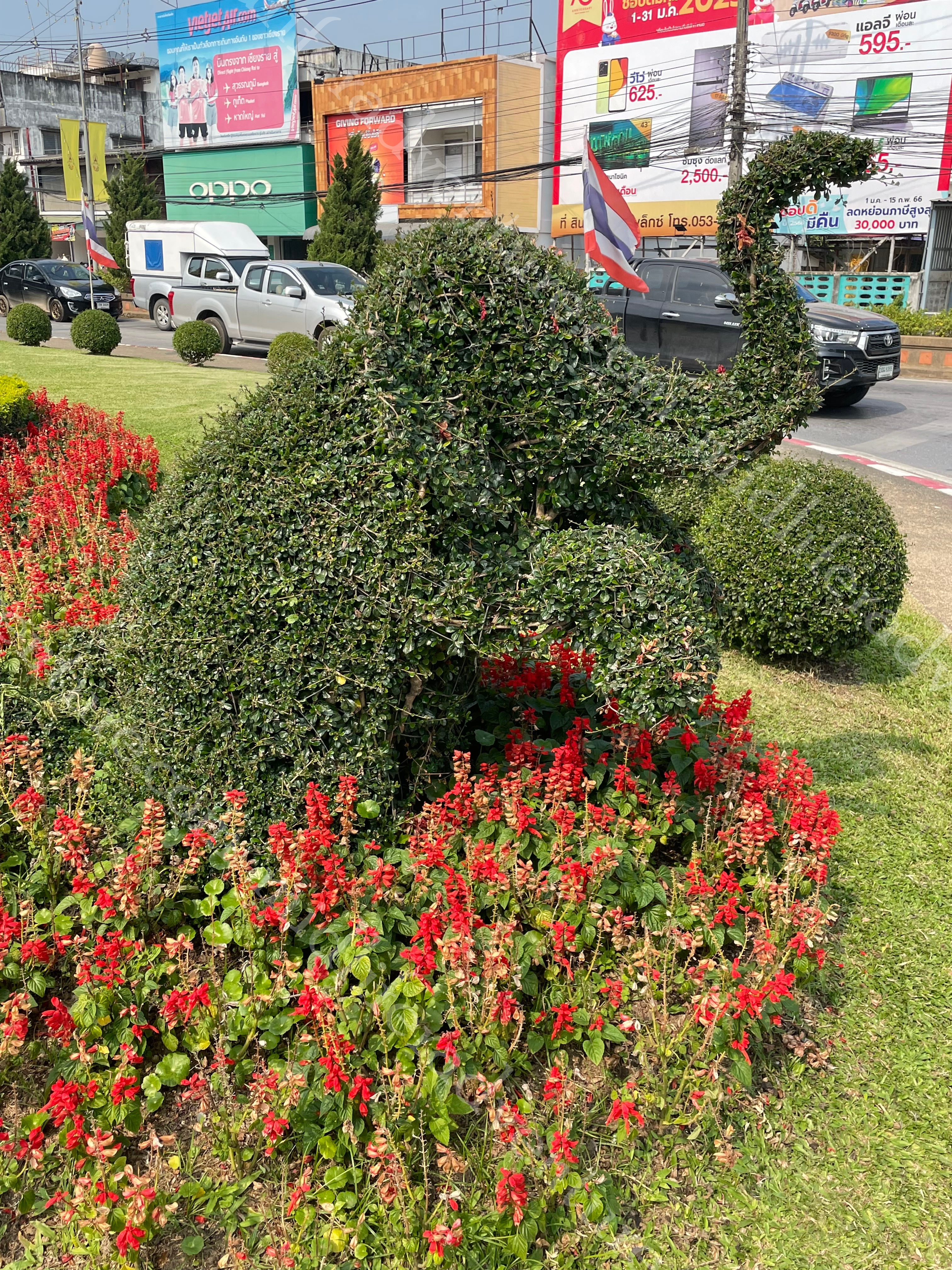
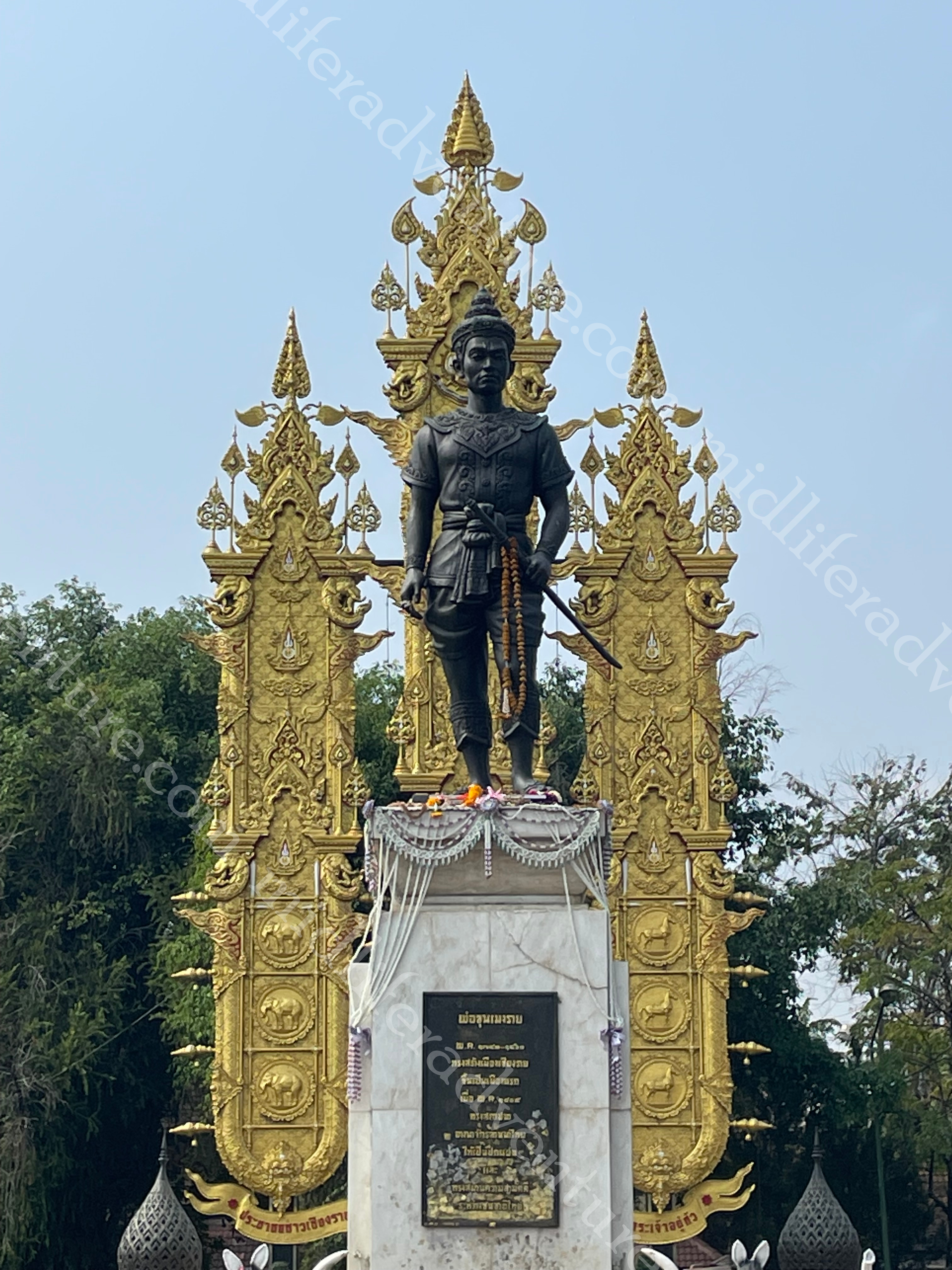
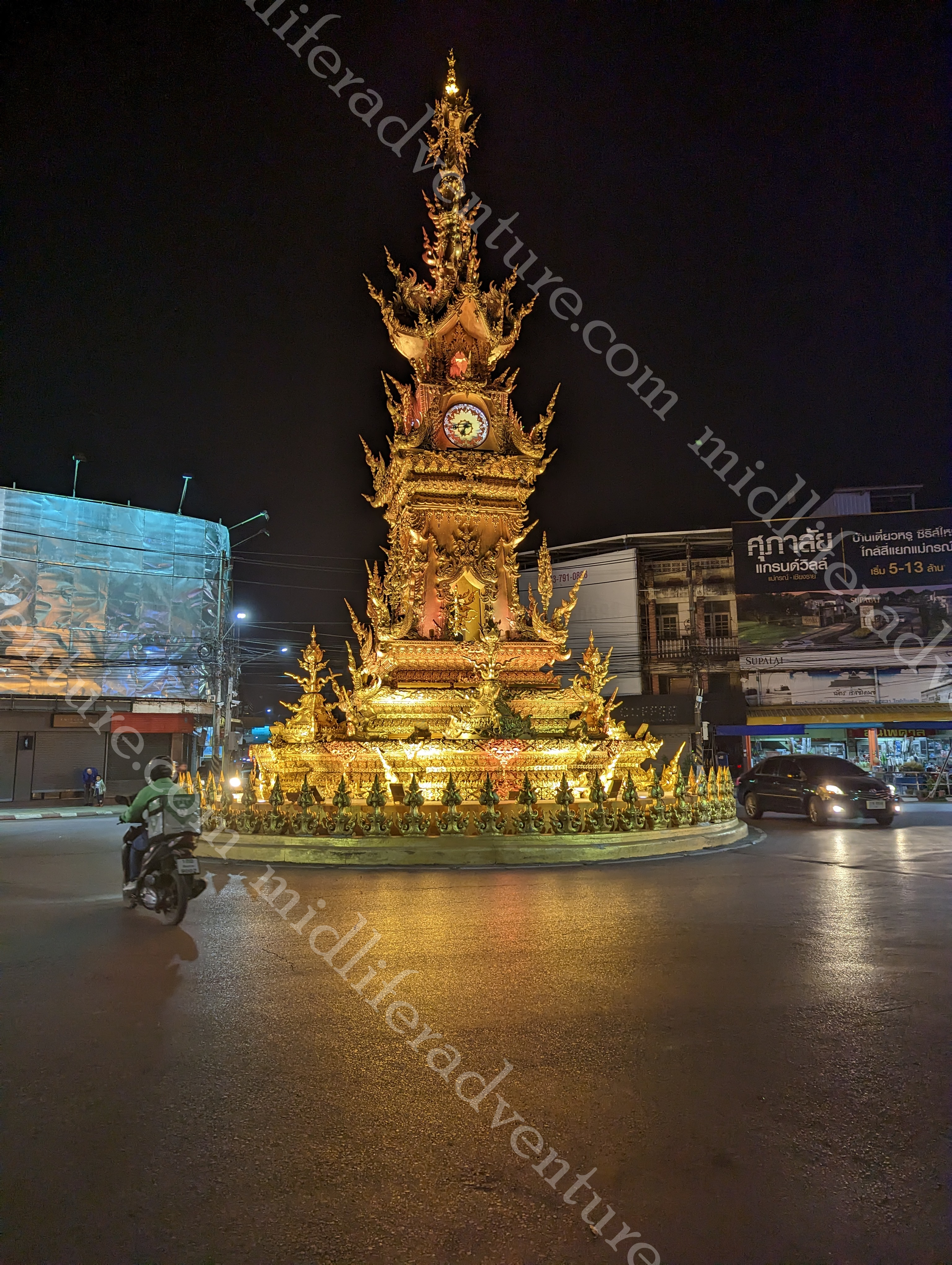
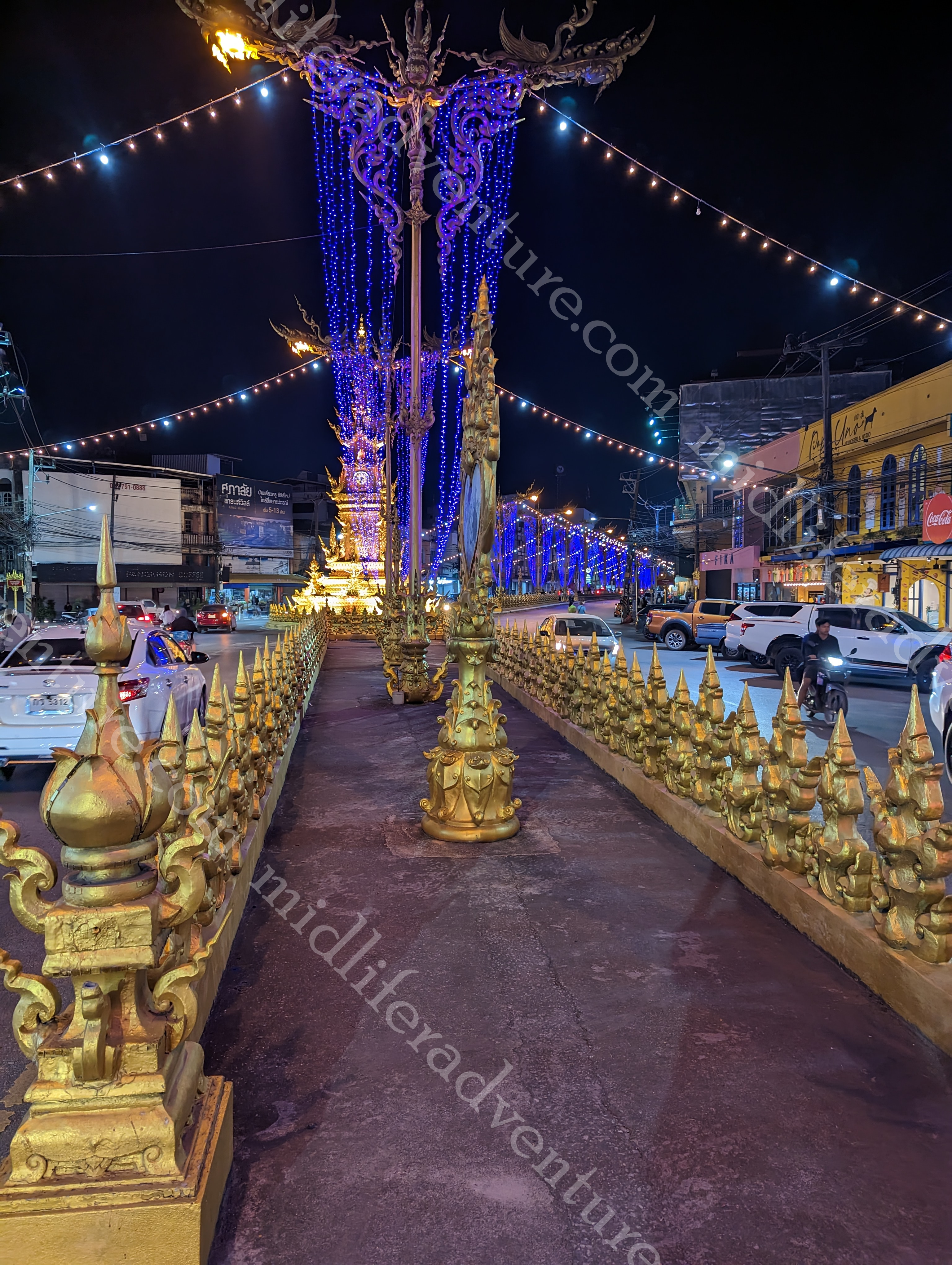
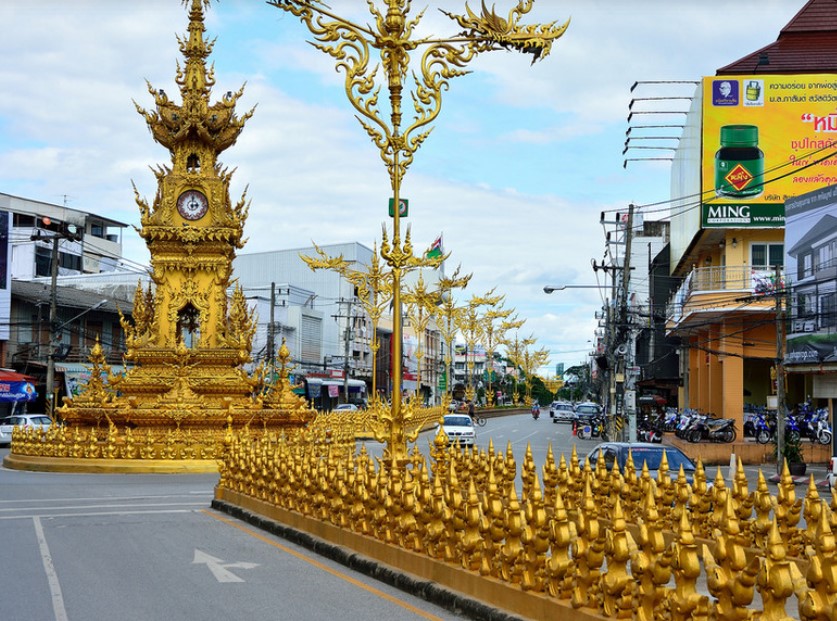
The clocktower is at the centre of a roundabout near the heart of town. It was built in 2005 by a local artist to honour Queen Sirikit. This thing is seriously ornate and the street is lined with ornate railings. If you come at night there is a light show that starts on the hour (7pm, 8pm and 9pm) and goes for 5 mins.
The Night Bazaar
The night market is a lively place just behind the bus terminal. It has a variety of options for eating and drinking with the usual tourist trinket fare available for purchase. There are lots of shops around that sell everything from clothing, hats, toys, shoes, glasses, etc. There are even a few breakout areas where you can sit and listen to music and have a drink.

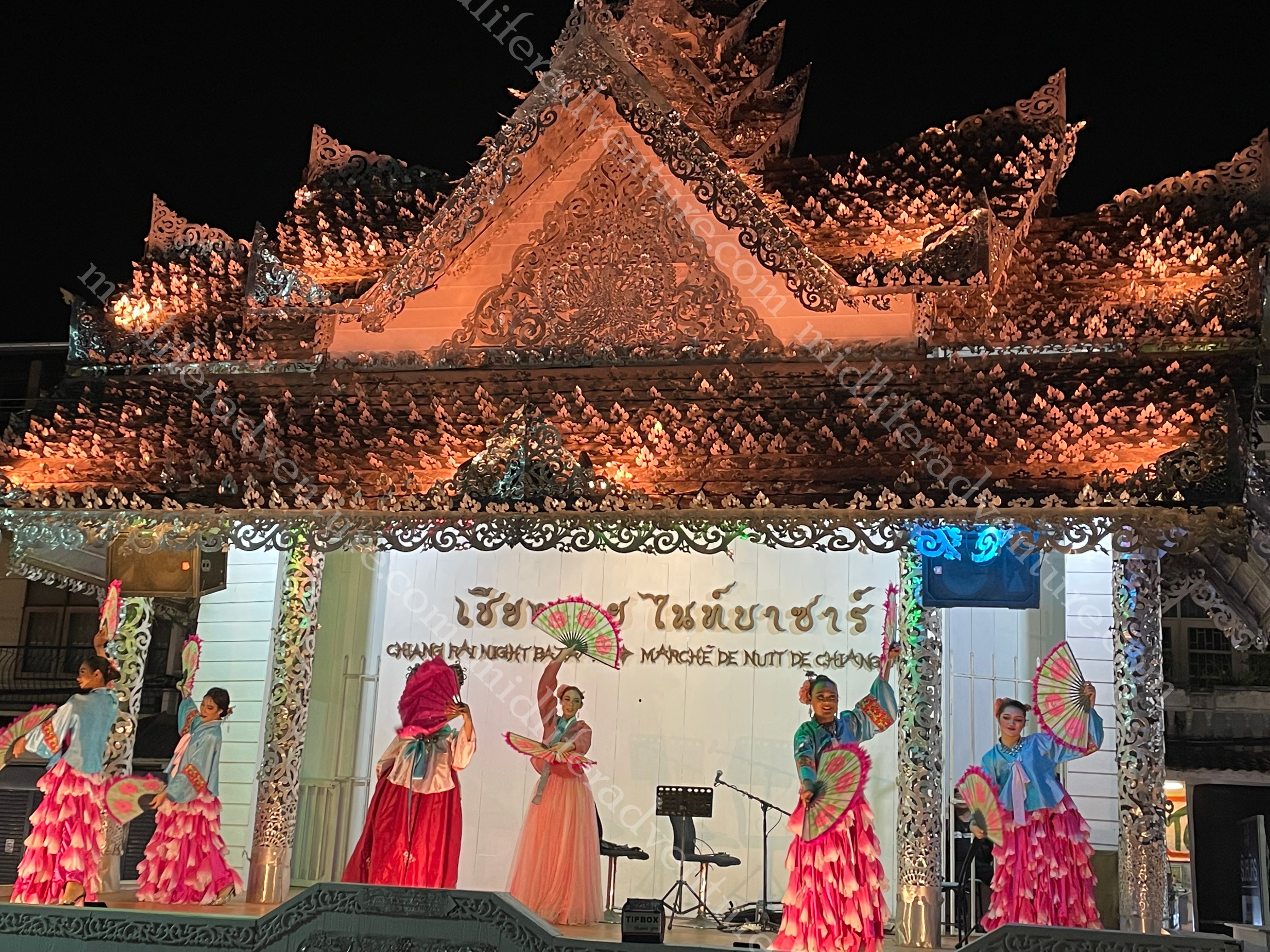
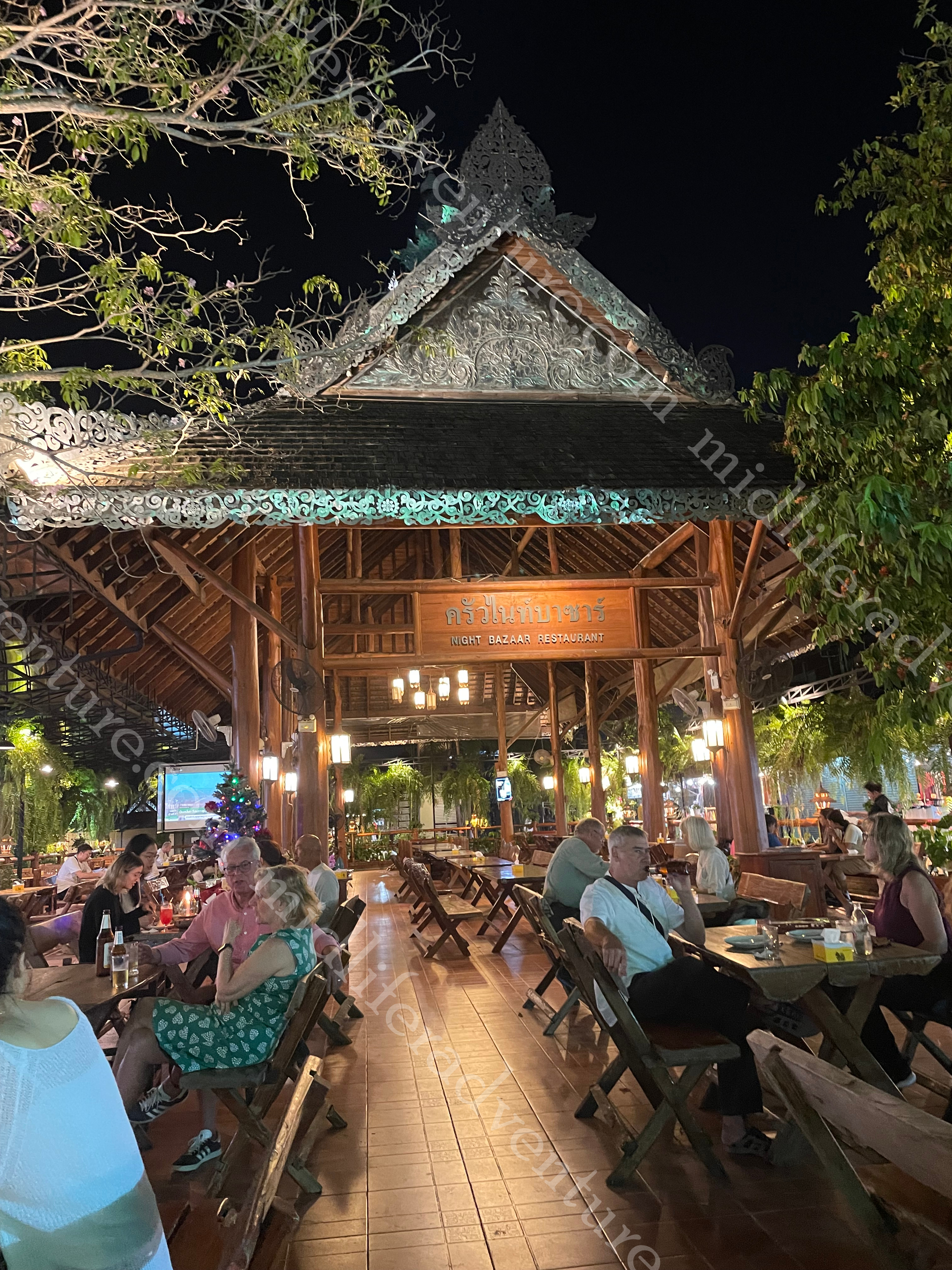
The White Temple – Wat Rong Khun
Well, this is the main reason for everybody coming to Chiang Rai and I must say, it does not disappoint. It is phenomenal. The masses of people are a challenge but that aside, this place deserves its place as the top tourist attraction.
By way of background this place was getting pretty run down so in the late 1990s a local artist from Chiang Rai (Chalermchai Kositpipat) bought it and decided to completely rebuild the temple and fund the project with his own money. Most of the symbolism blurb below has been drawn from the tourist spiel that is available everywhere.
The main building at the white temple is reached by crossing a bridge over a small lake. In front of the bridge are hundreds of outreaching hands that symbolize unrestrained desire. The bridge proclaims that the way to happiness is by foregoing temptation, greed, and desire.
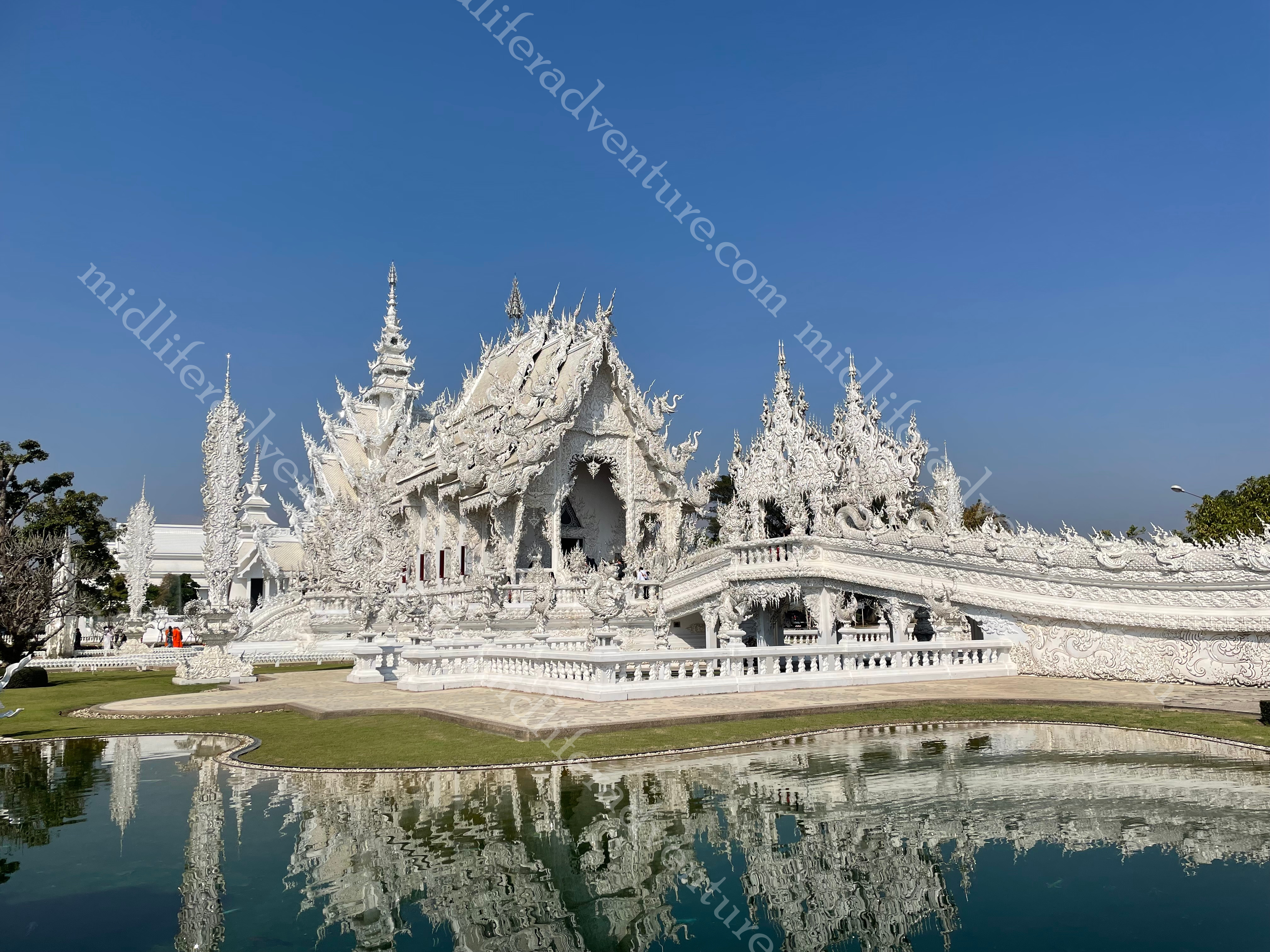
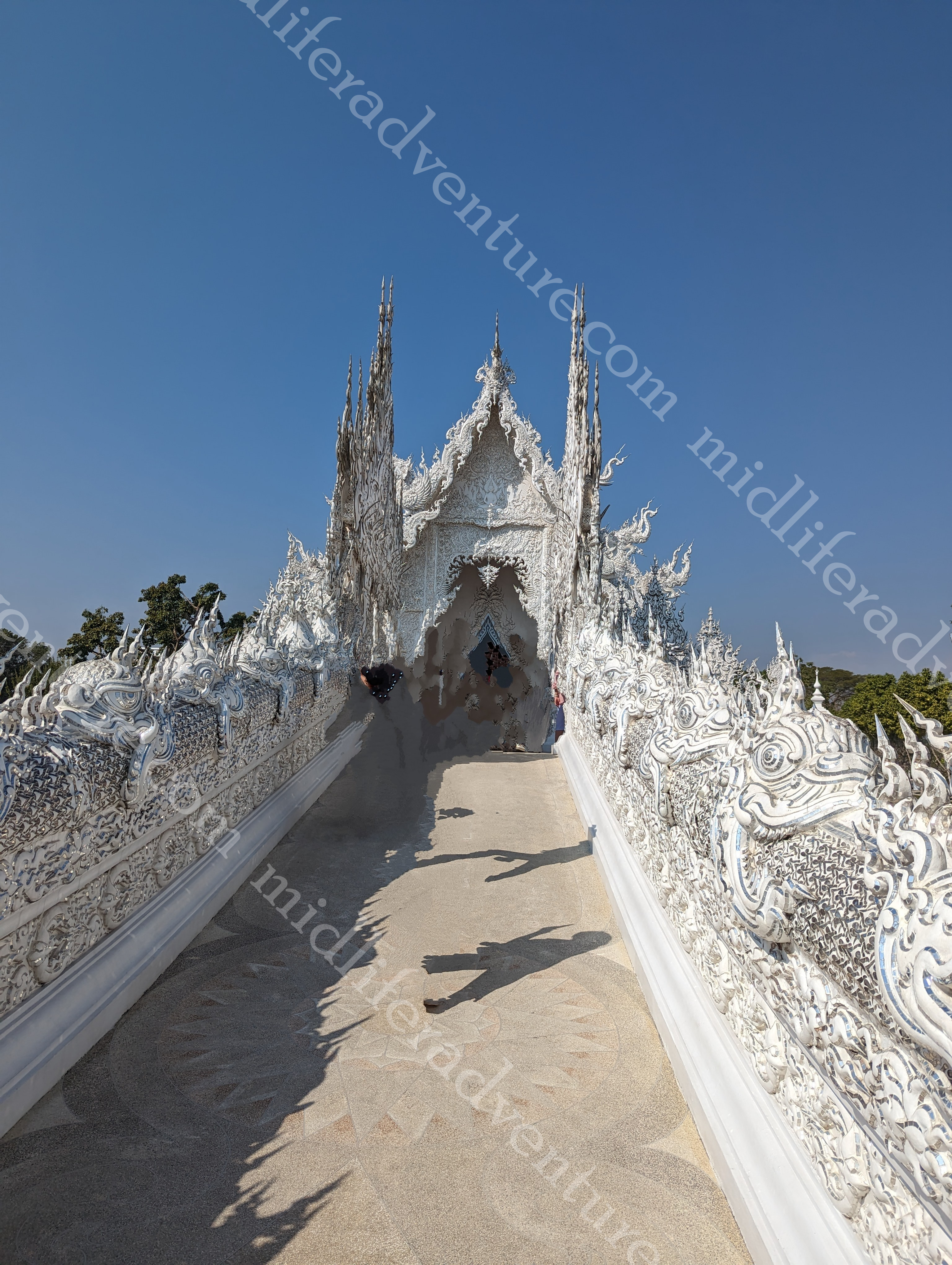
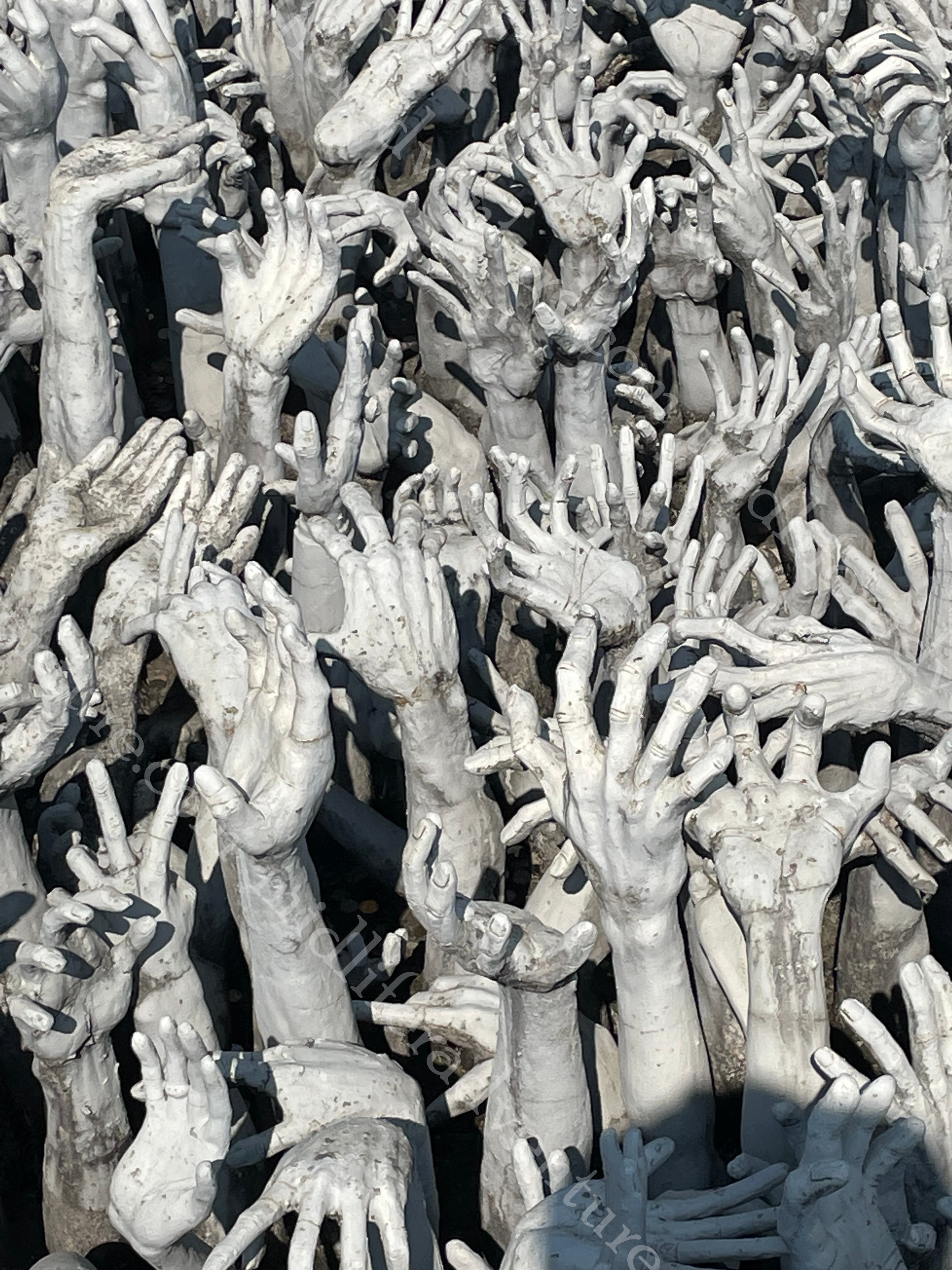
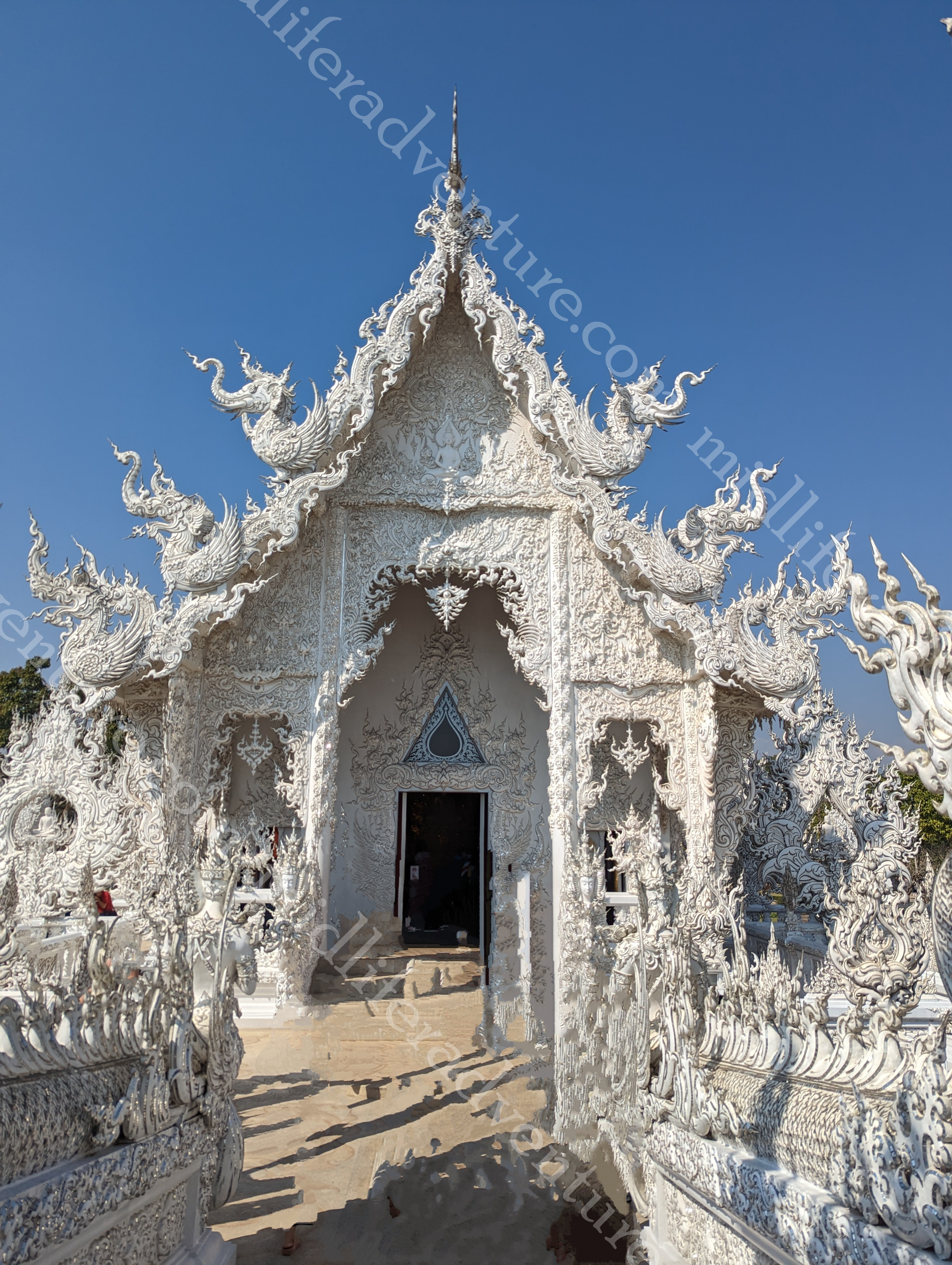
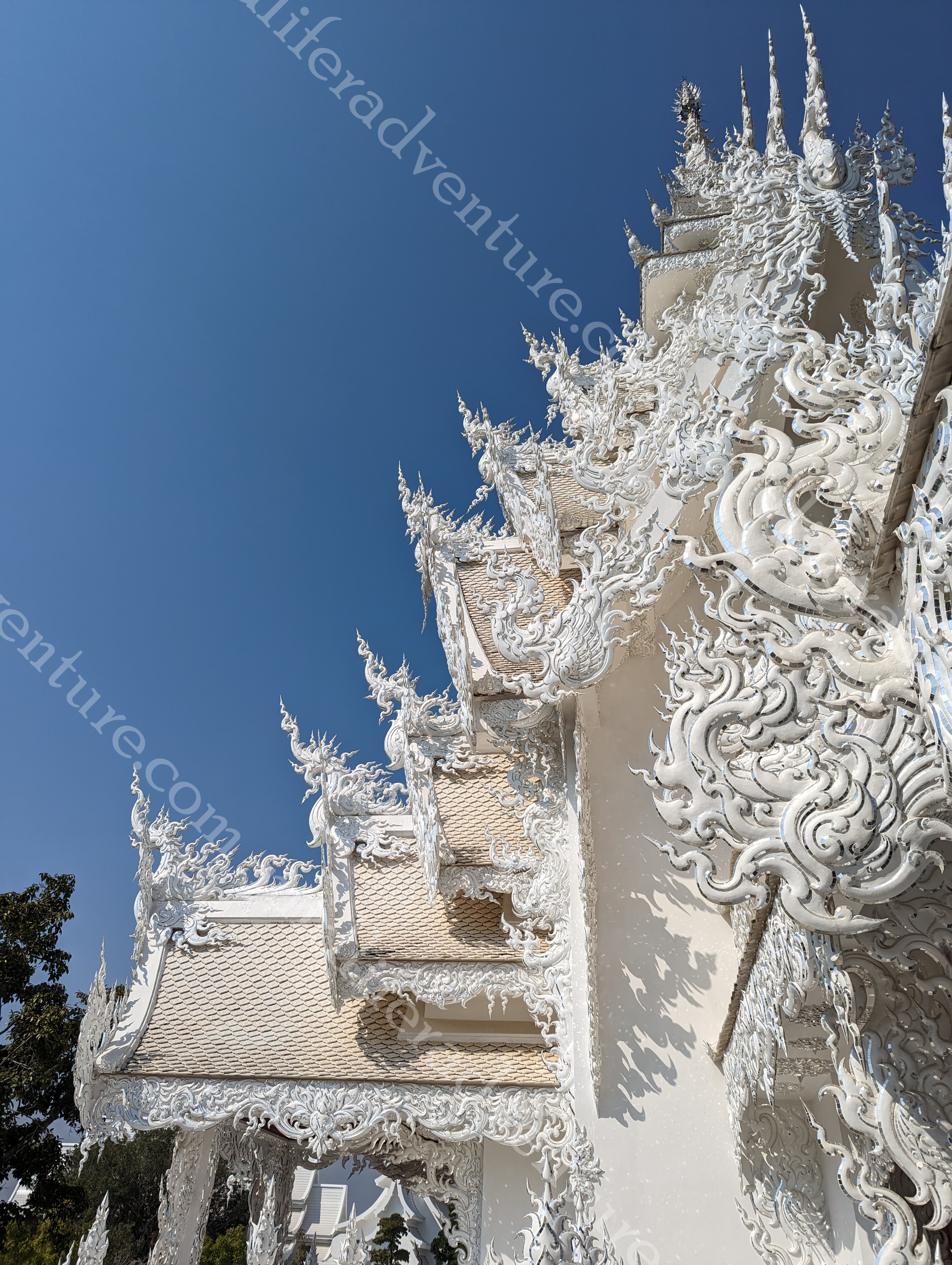
Next to the lake stand two very elegant Kinnaree, half-human, half-bird creatures from Buddhist mythology.
After crossing the bridge, the visitor arrives at the “gate of heaven”, guarded by two creatures representing Death and Rahu, who decide the fate of the dead.
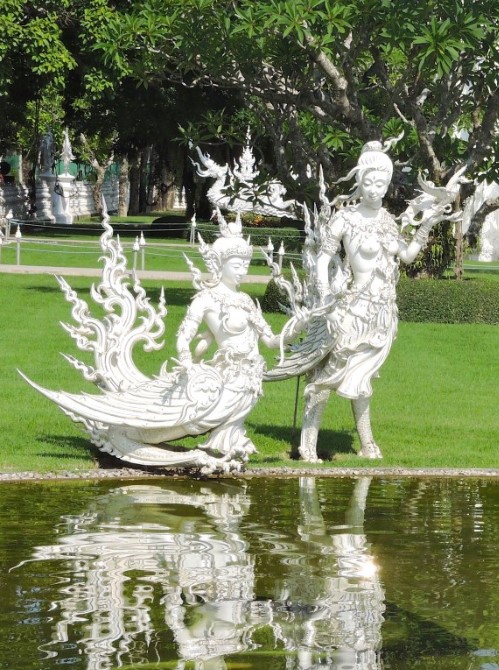
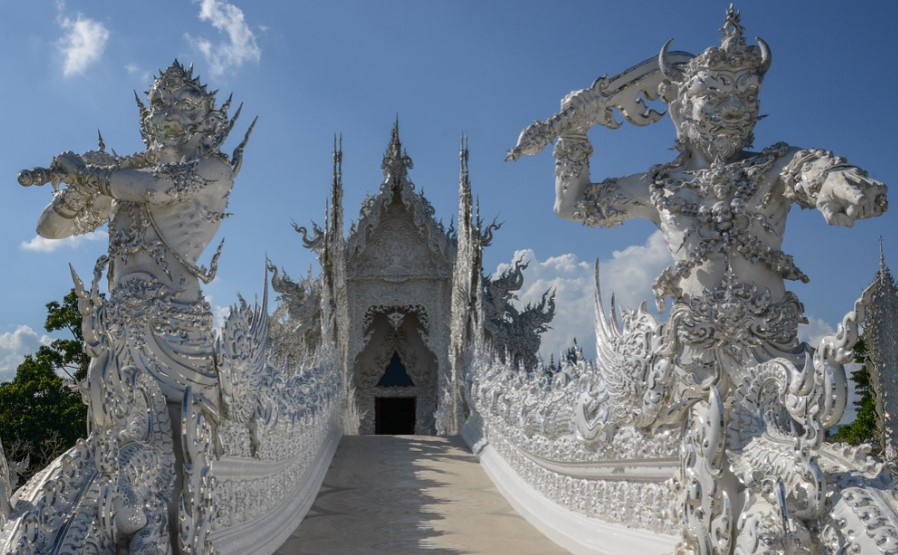
Having been judged, you cross the bridge representing “the cycle of rebirth”. This is meant to signify the crossing over from the cycle of death and rebirth into a state free of suffering. It symbolises the way to happiness by overcoming worldly things as temptations, greed and desire.
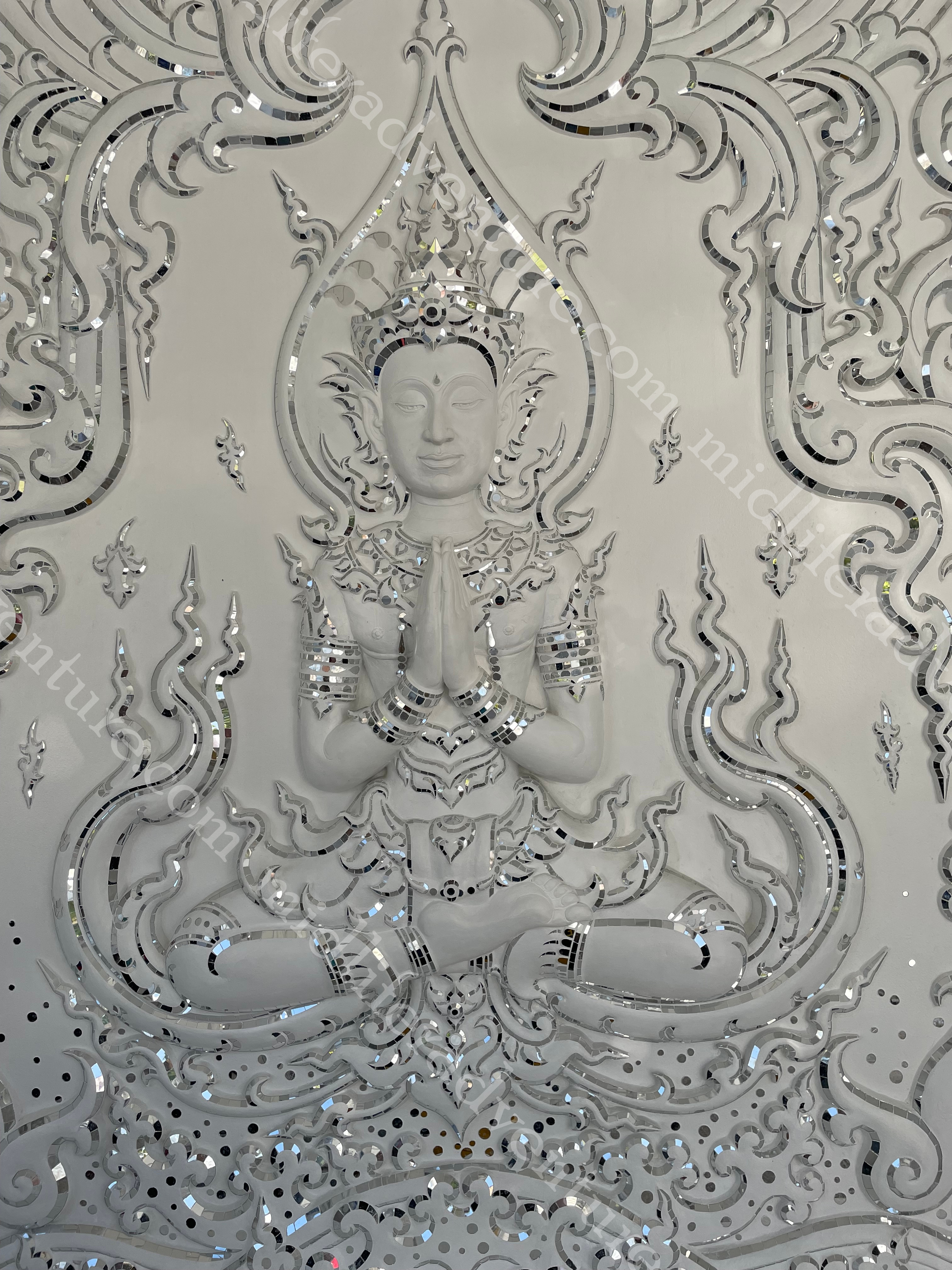
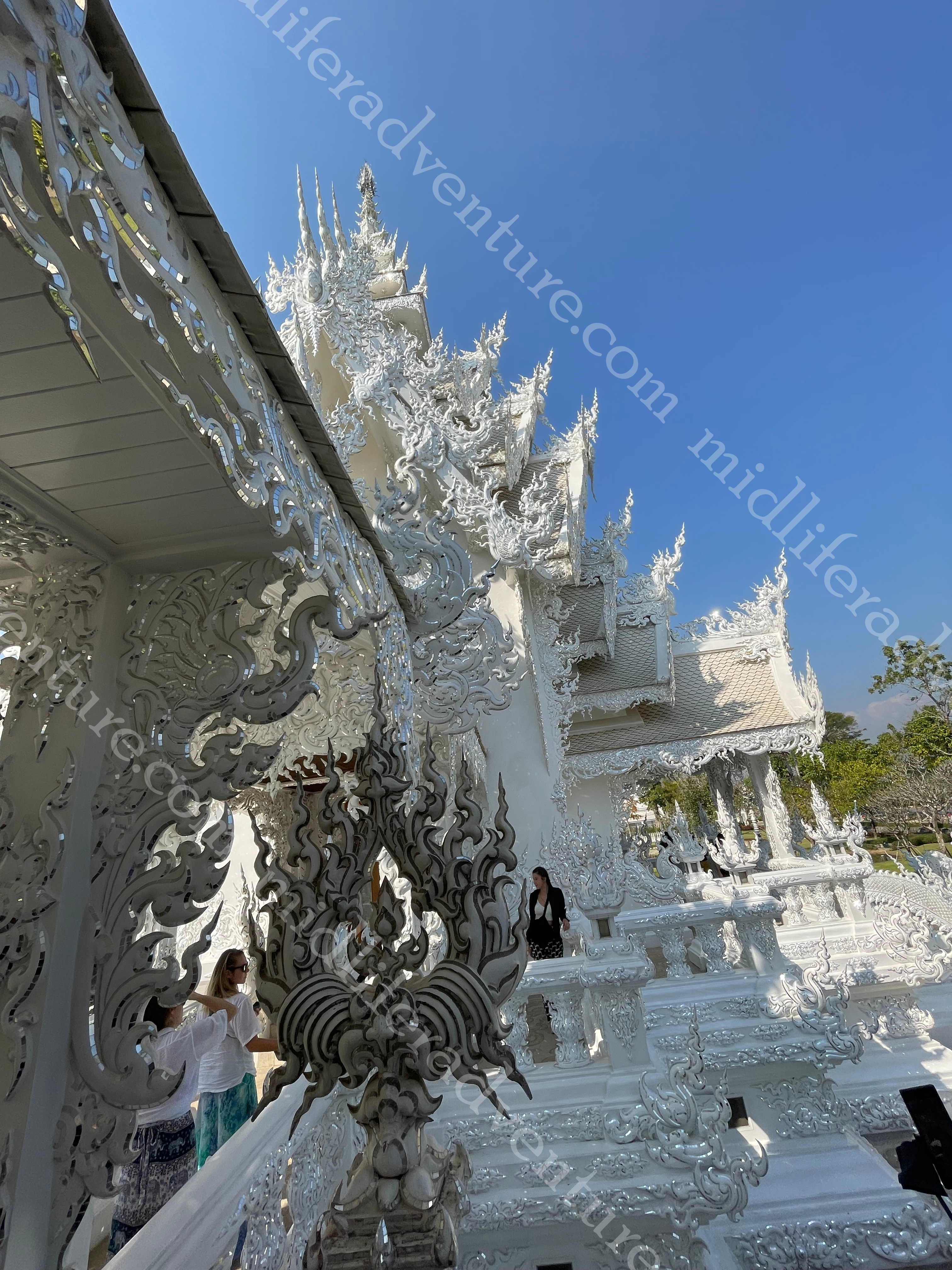
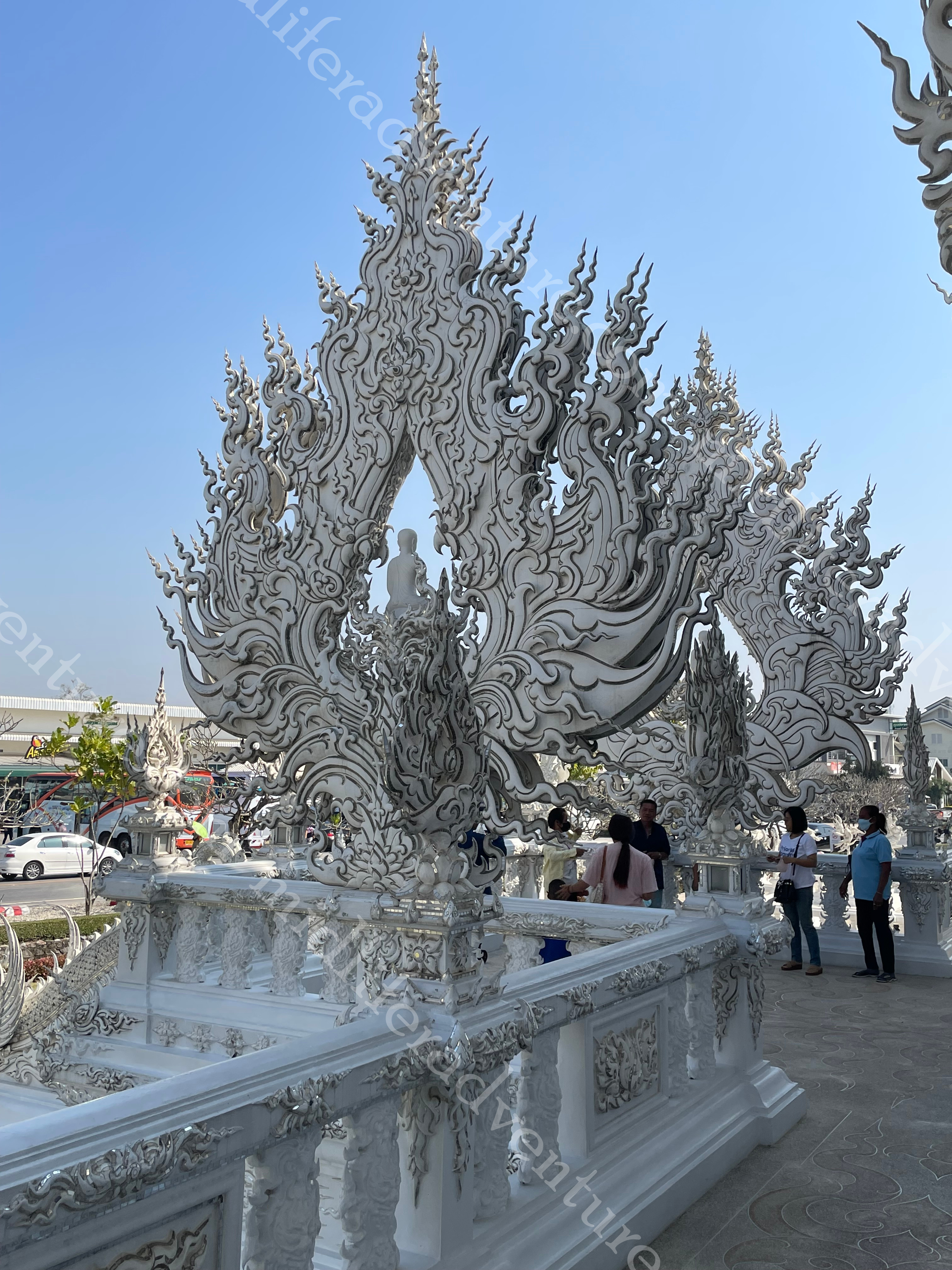
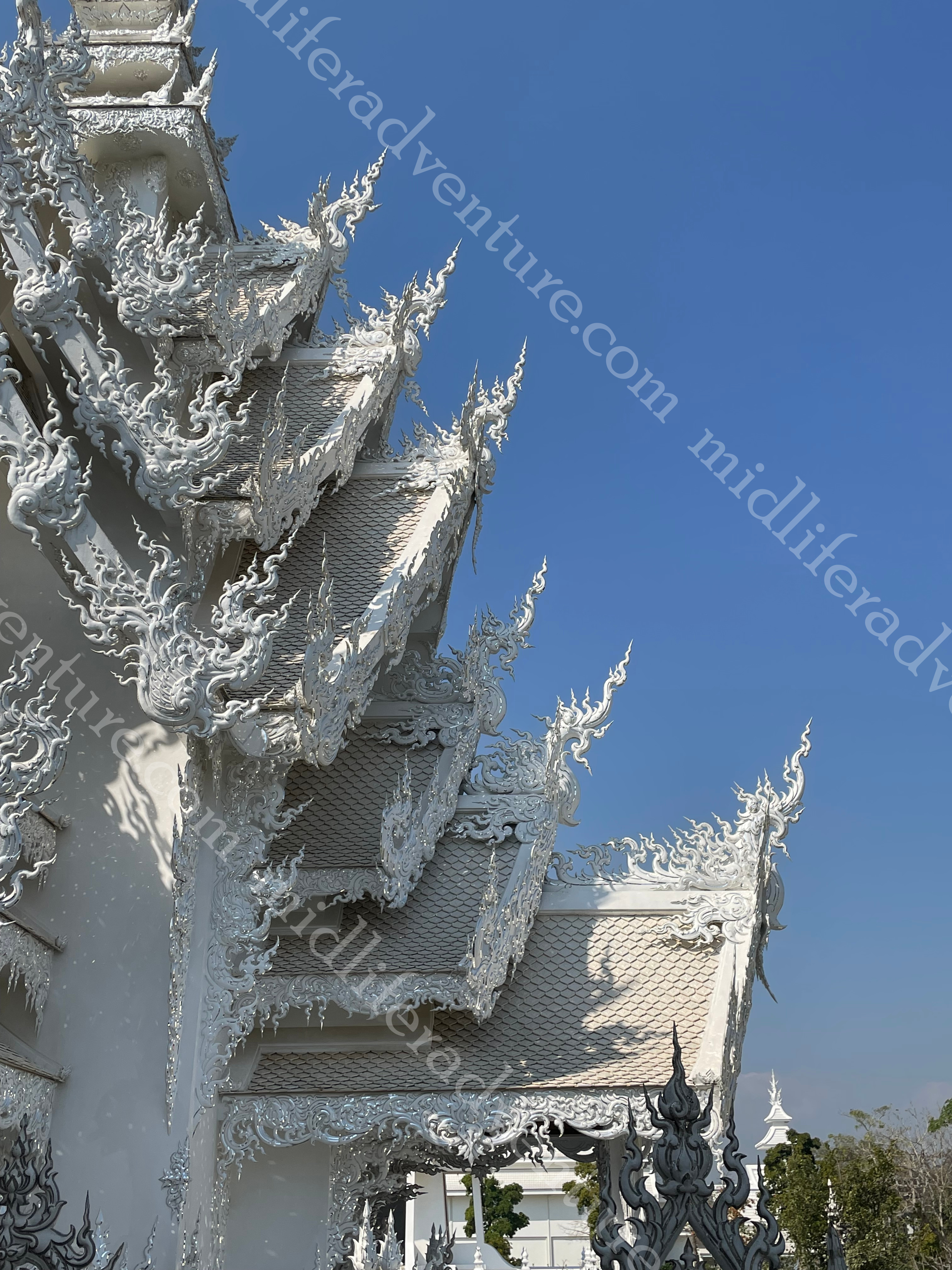
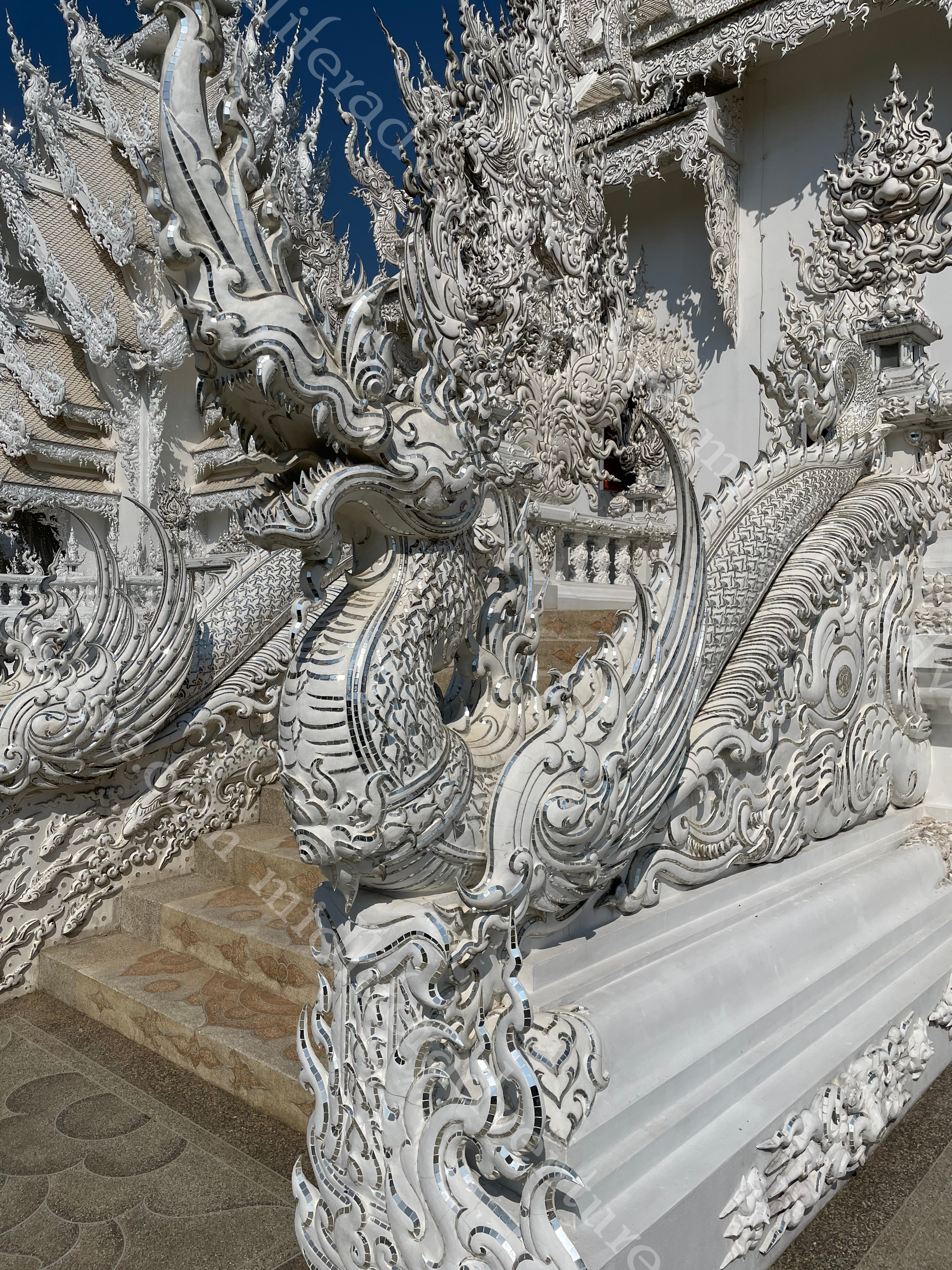
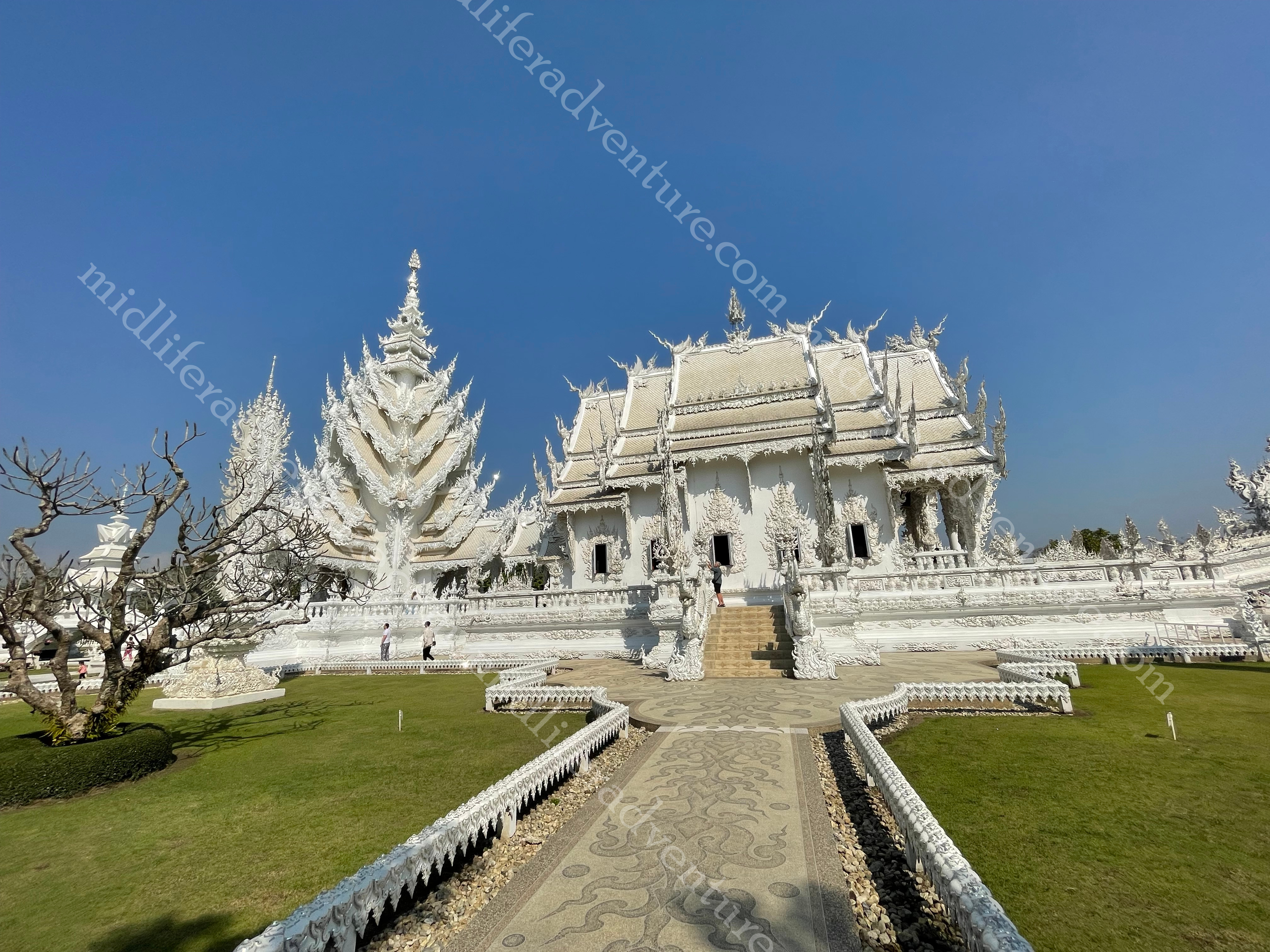
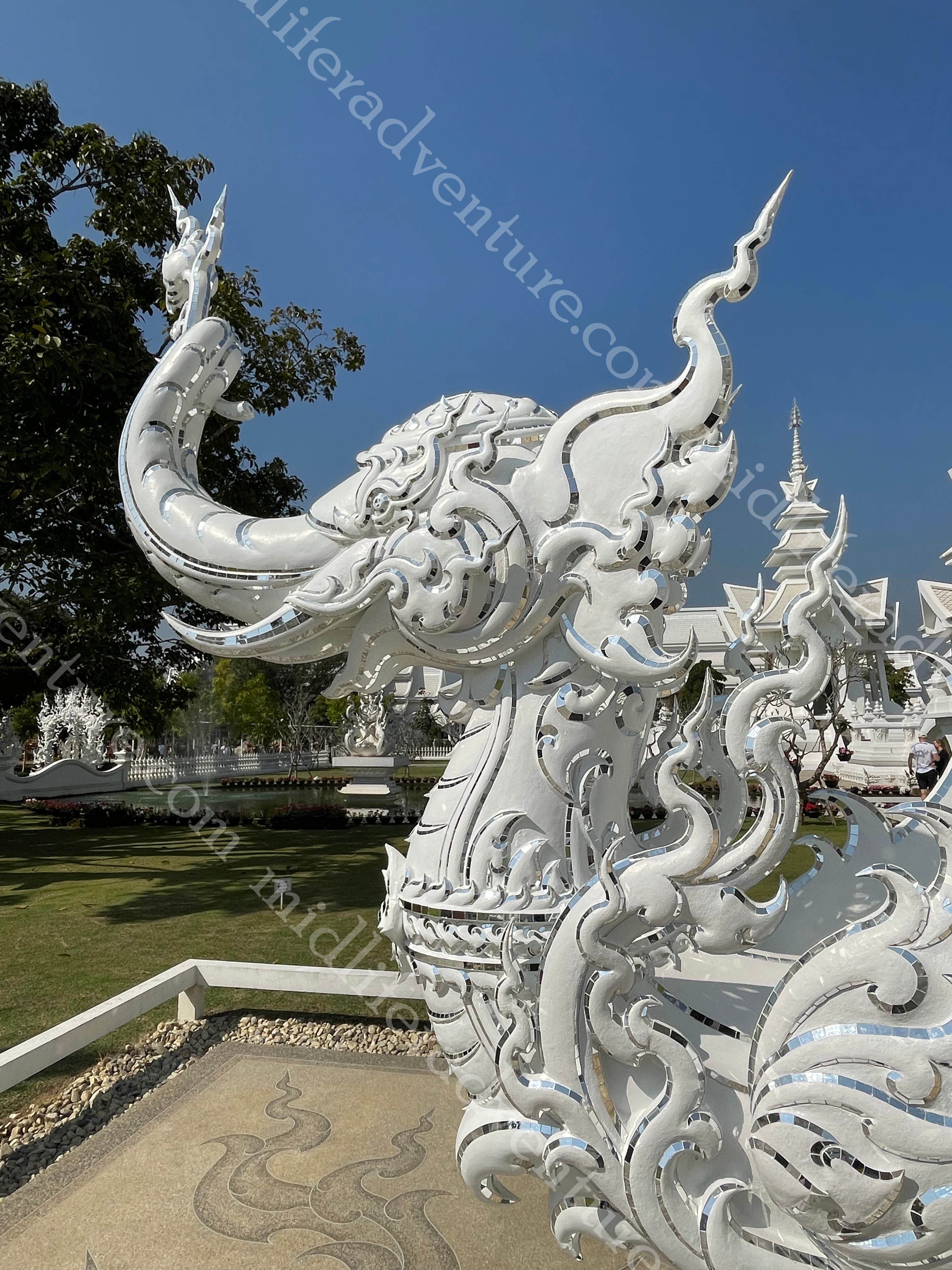
From here you enter the temple (no photos allowed) and are then free to tour the expansive grounds. Where you will find all sorts of interesting features many of which will be highly unexpected. The area adjacent to the temple is intended to house, the centre of learning and meditation and help people benefit from the teachings of Buddhism.
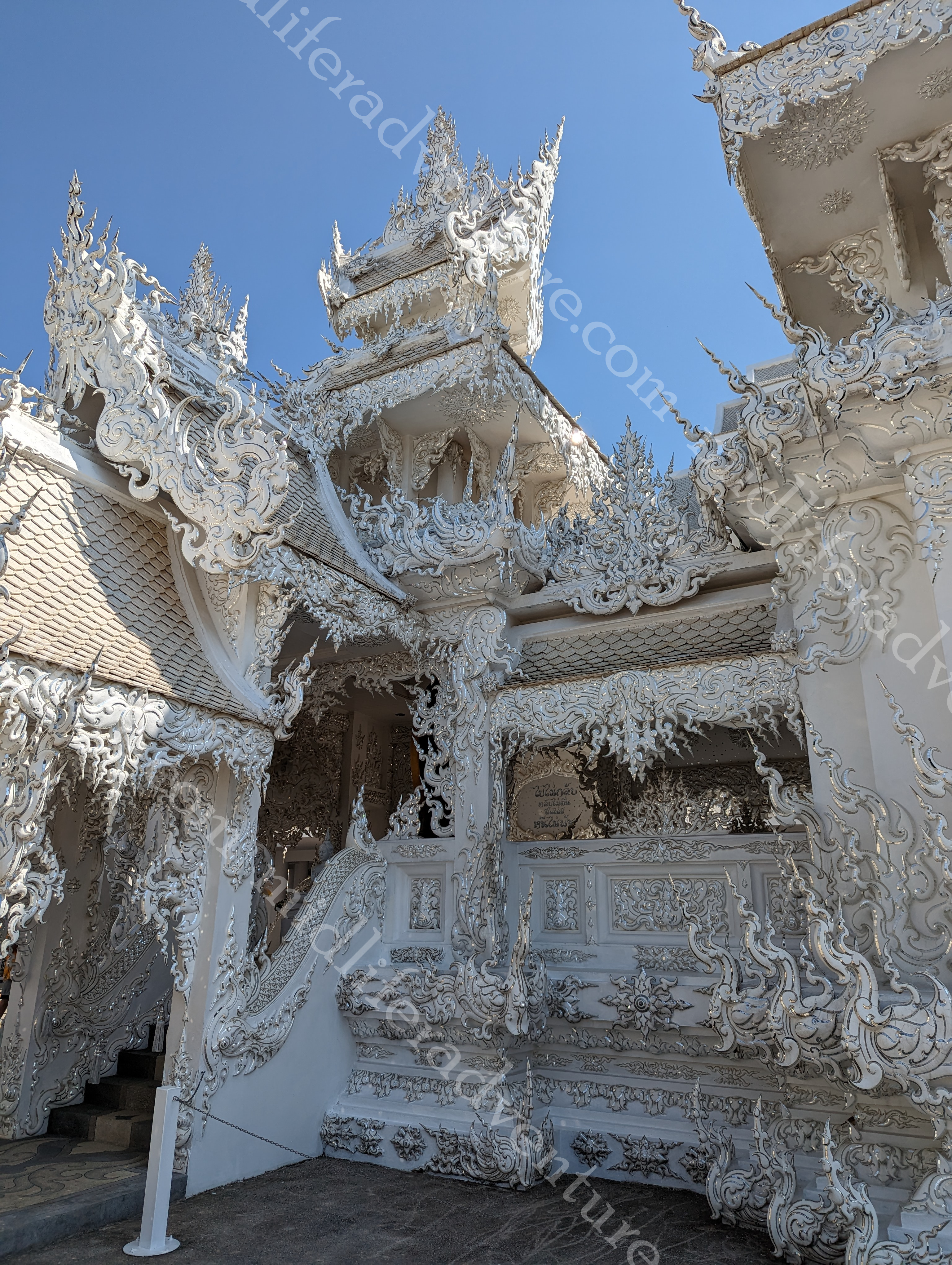

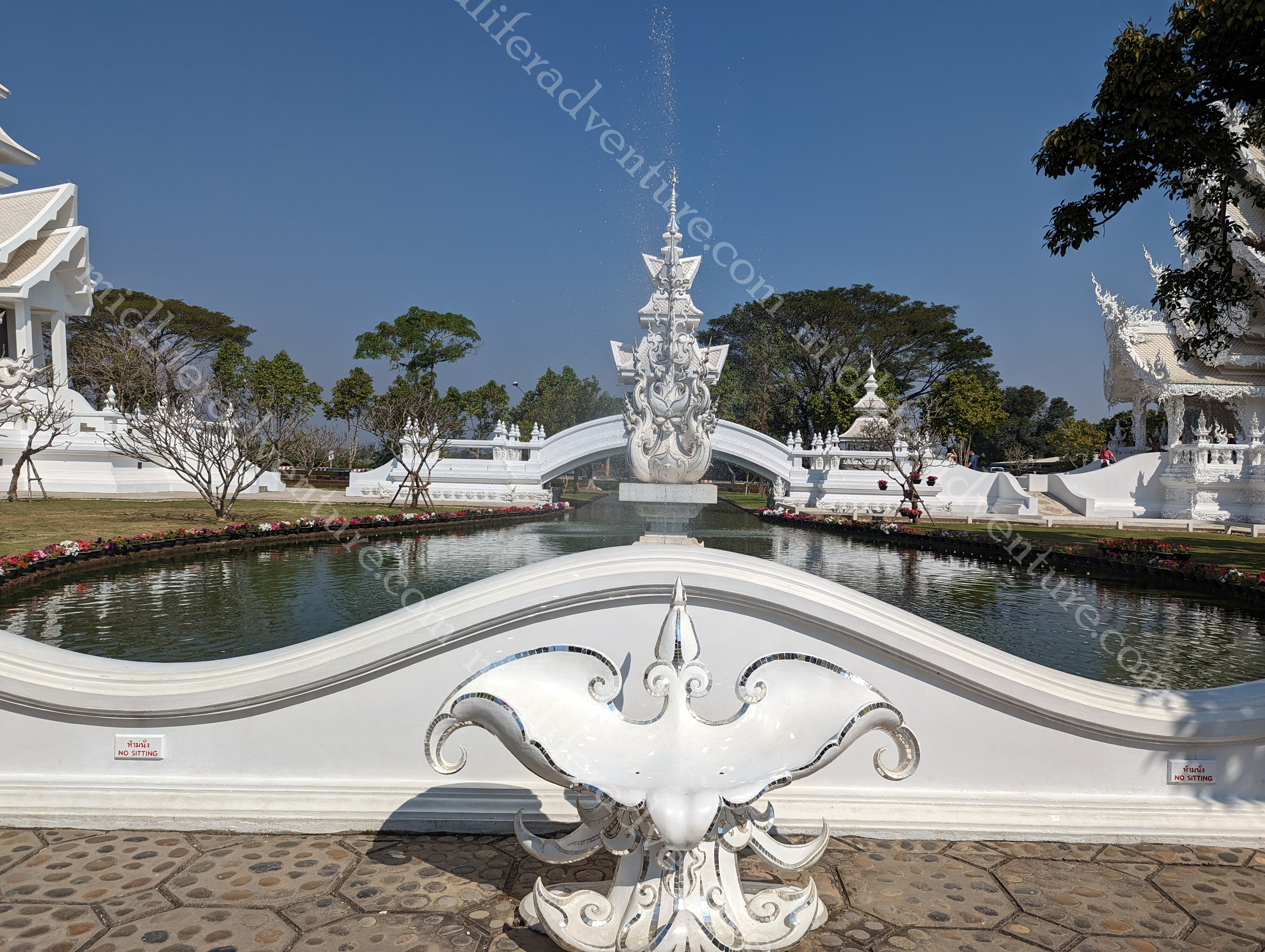


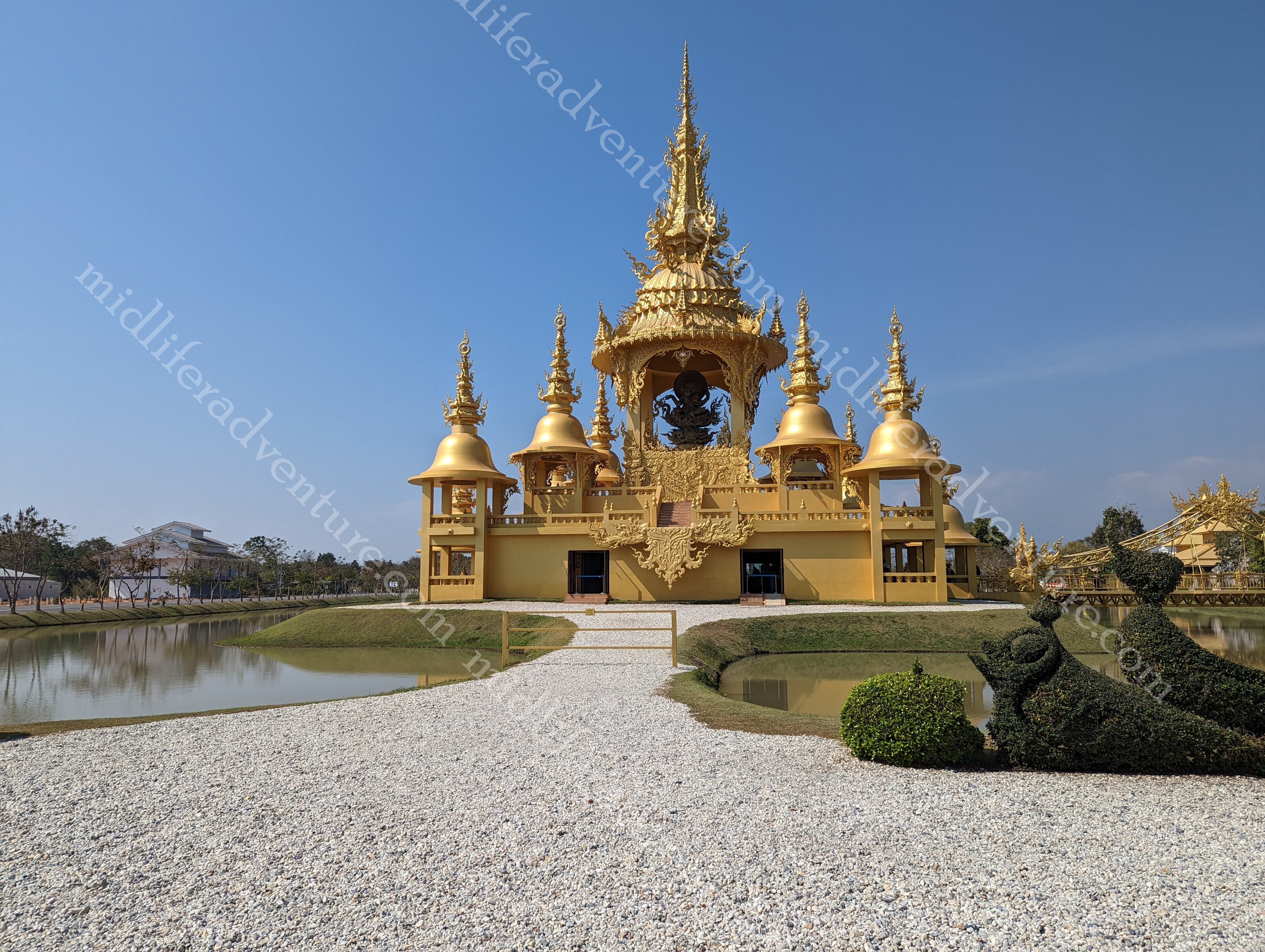
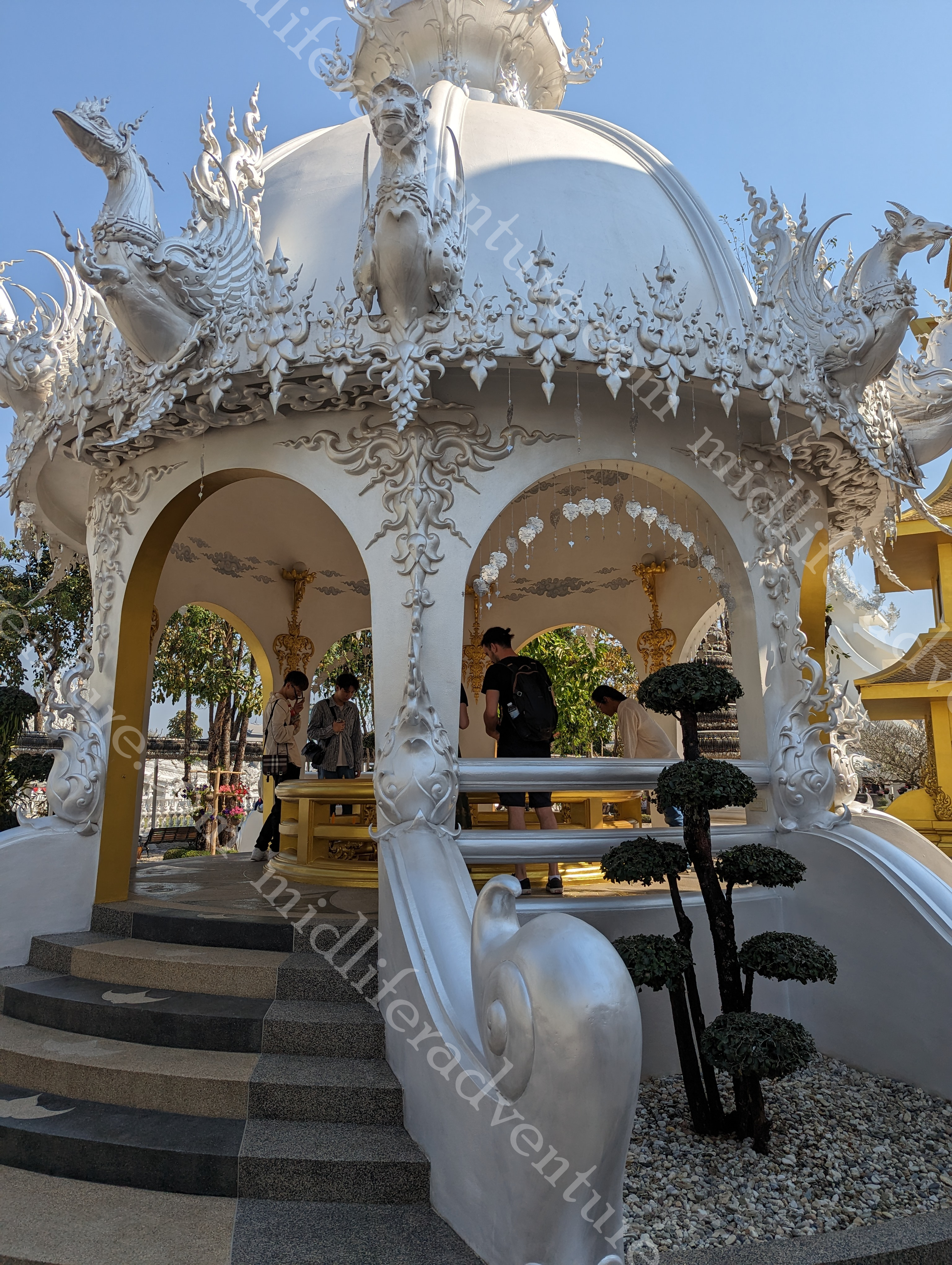
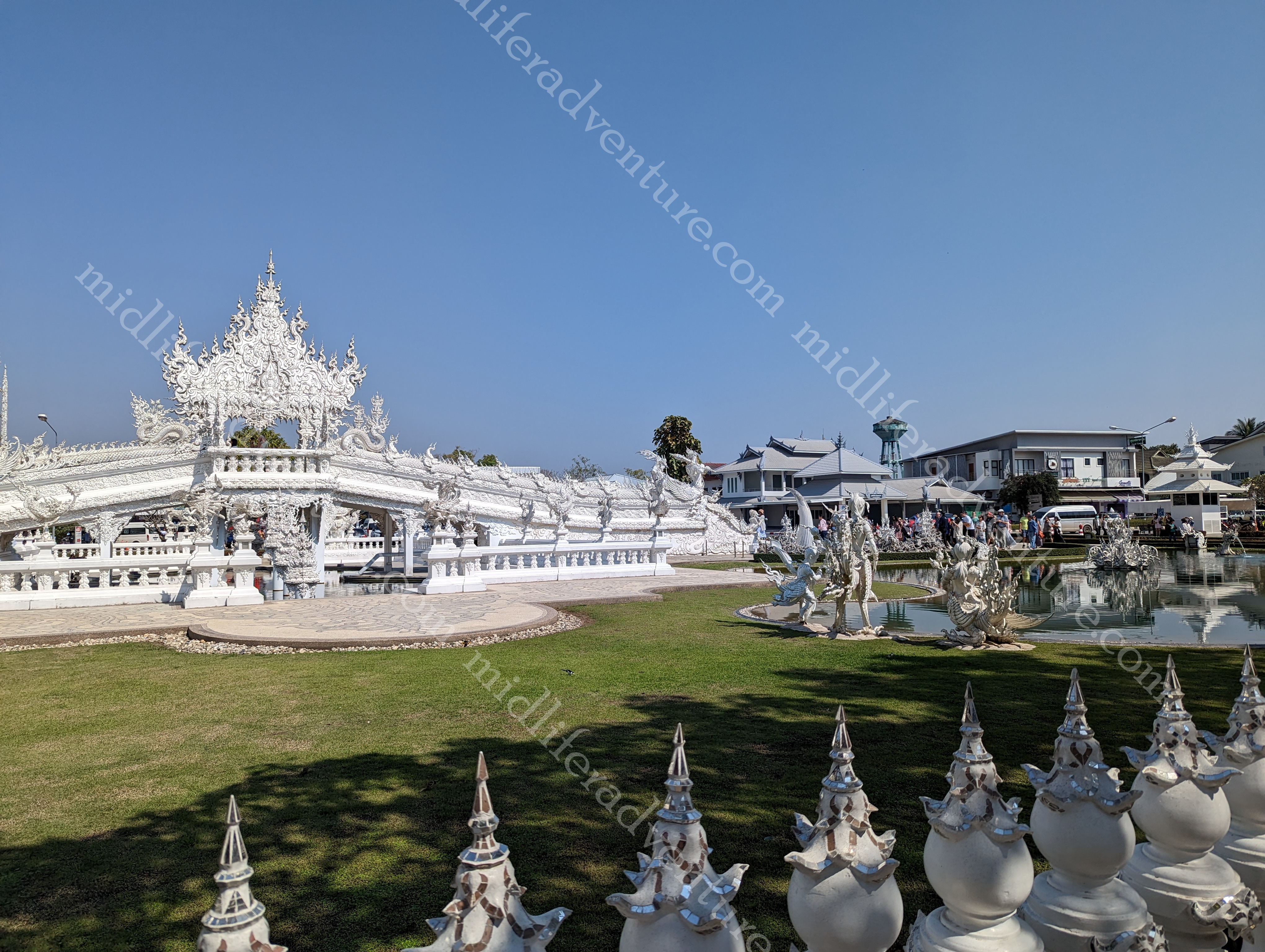
Around the temple grounds are several concrete “trees” with thousands of medallions hanging down from them (Bohdi Leaves). For 30 Baht you can add yours with your name written on it. With all of the visitors that have done this, it has now spilled out from the trees and there is a long walkway the ceiling of which is made up of these medallions.
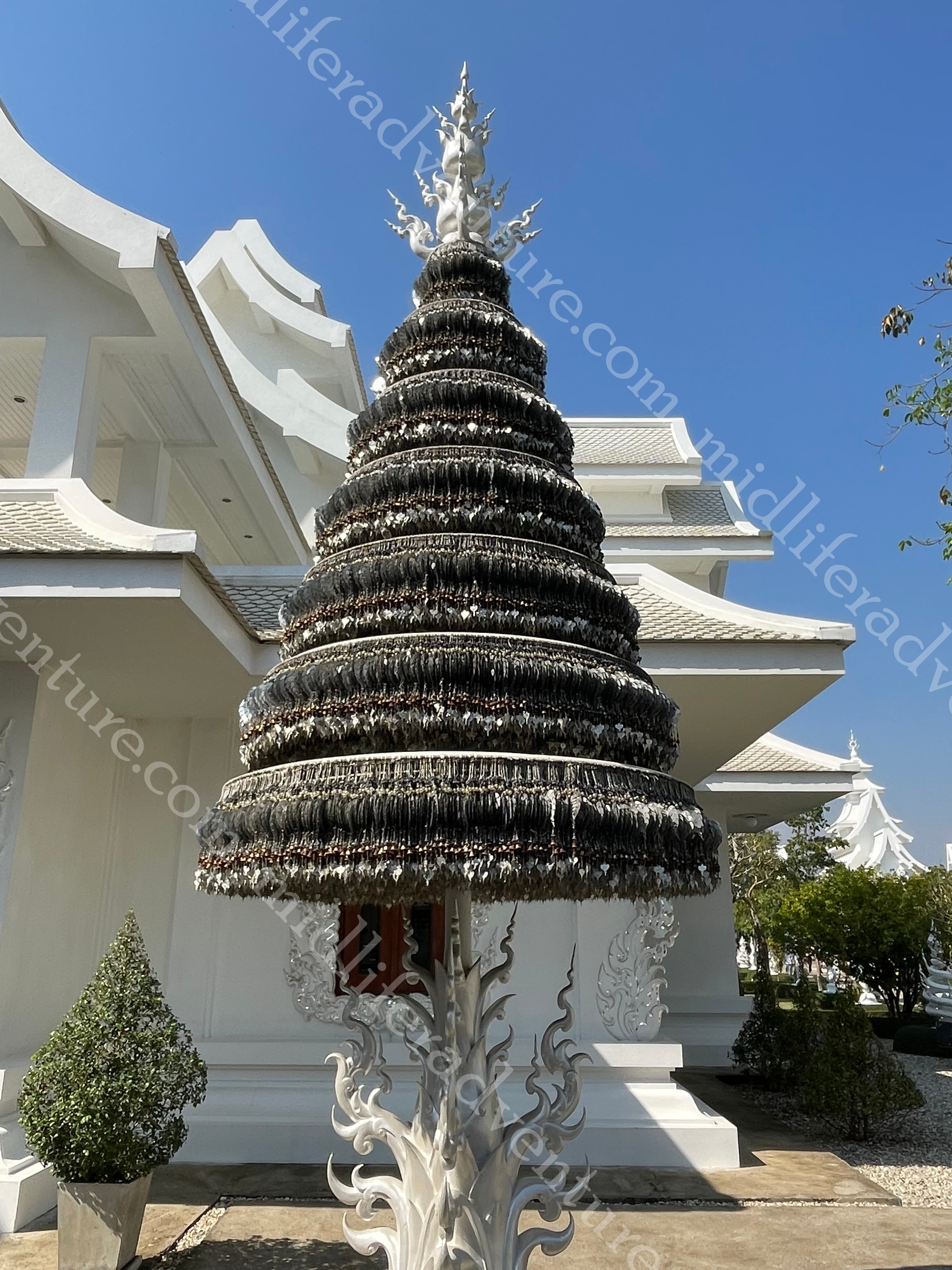
All around the grounds of the white temple you will find an eclectic mix of paintings, sculptures and murals that depict modern representations of good and evil.
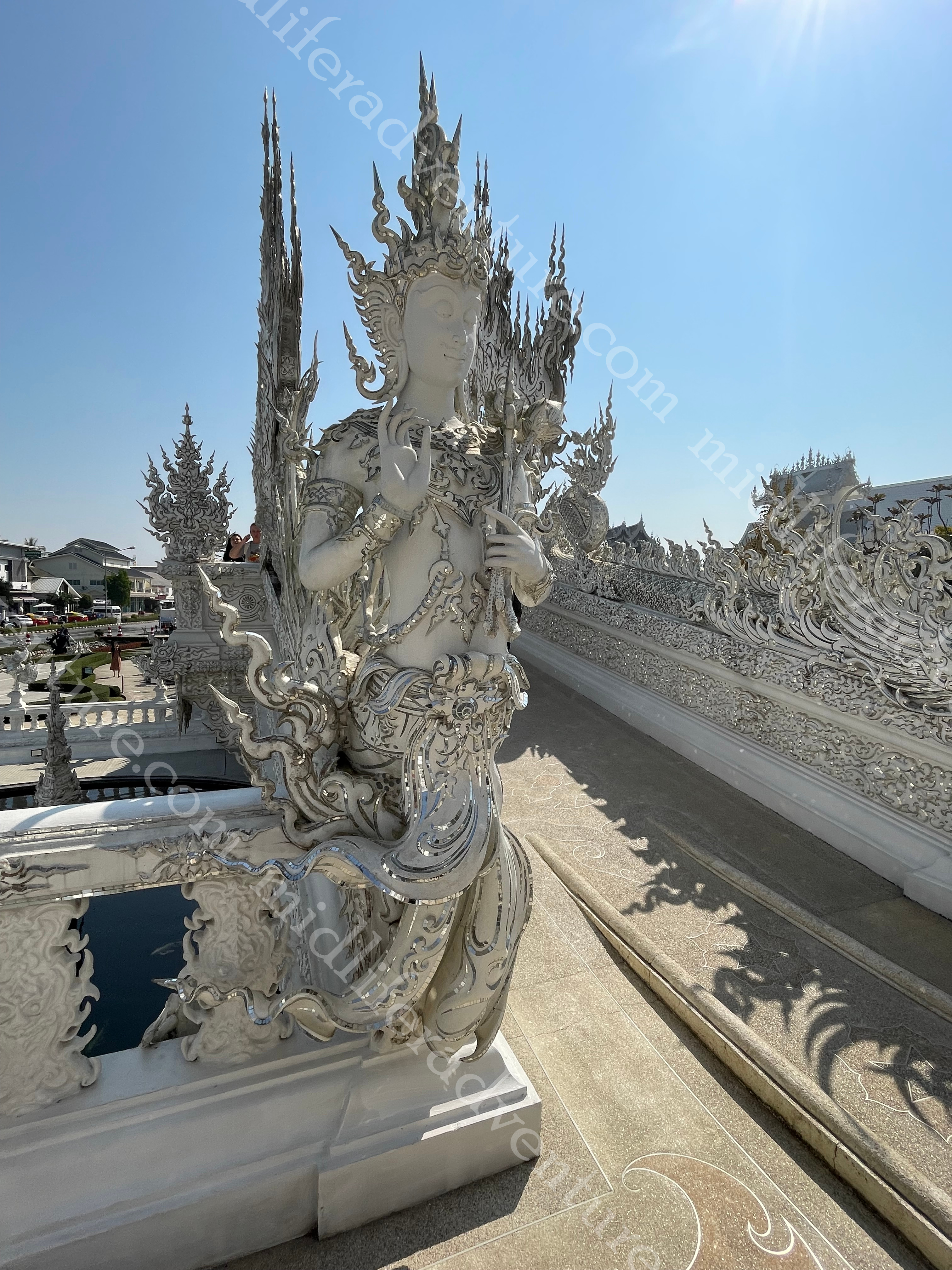
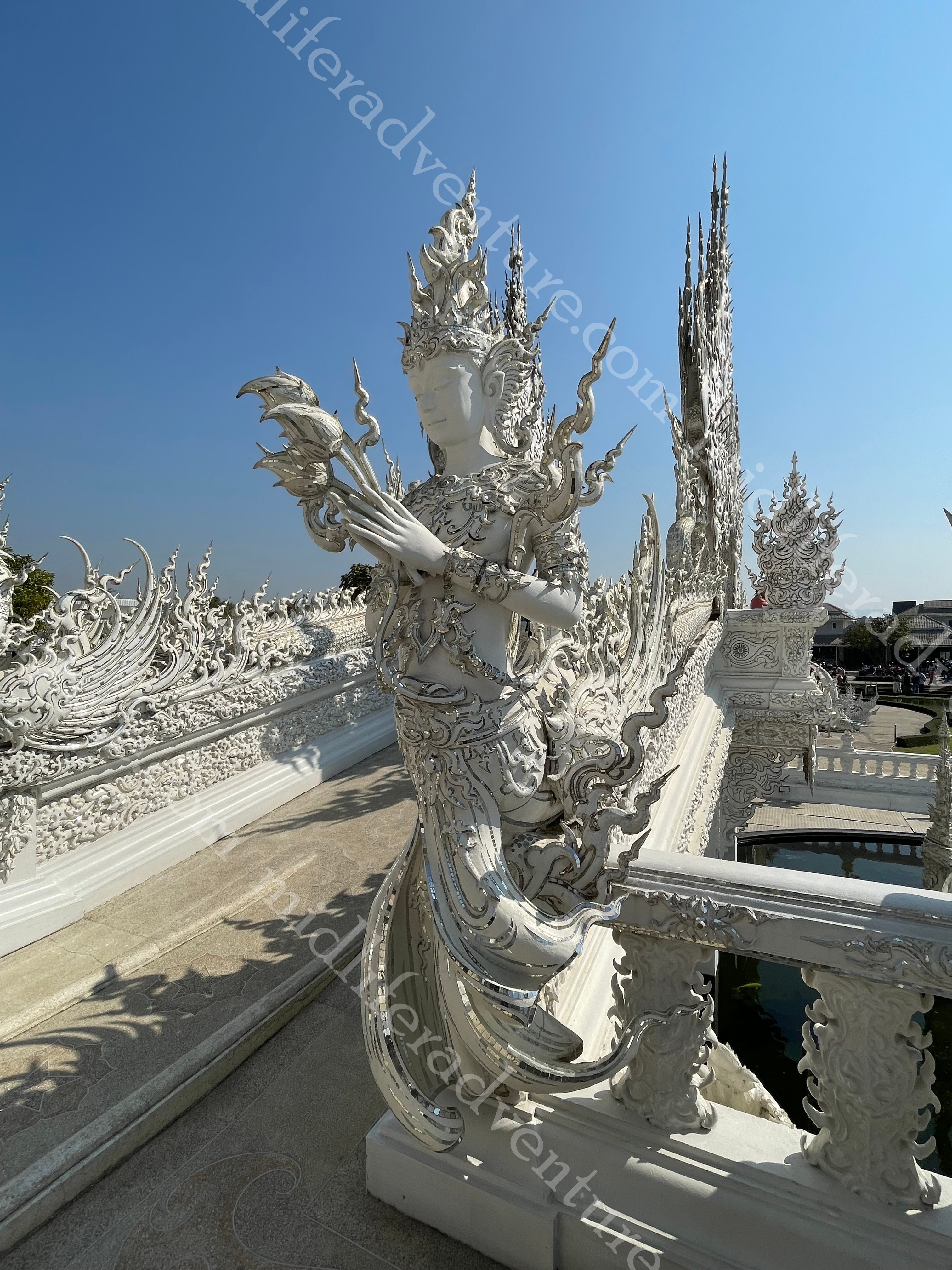
The best game that can be played is to try and find and identify the sculptures representing good and evil. We found many but I am certain that there were many more that we never even saw.
Even hidden in a waterfall you will find a heap of these figures and sculptures. Figures like Batman, Spiderman, Elvis, ninja turtles, the predator, venom – villains and superheroes from movies and comics.
But you really need to look or you could miss them
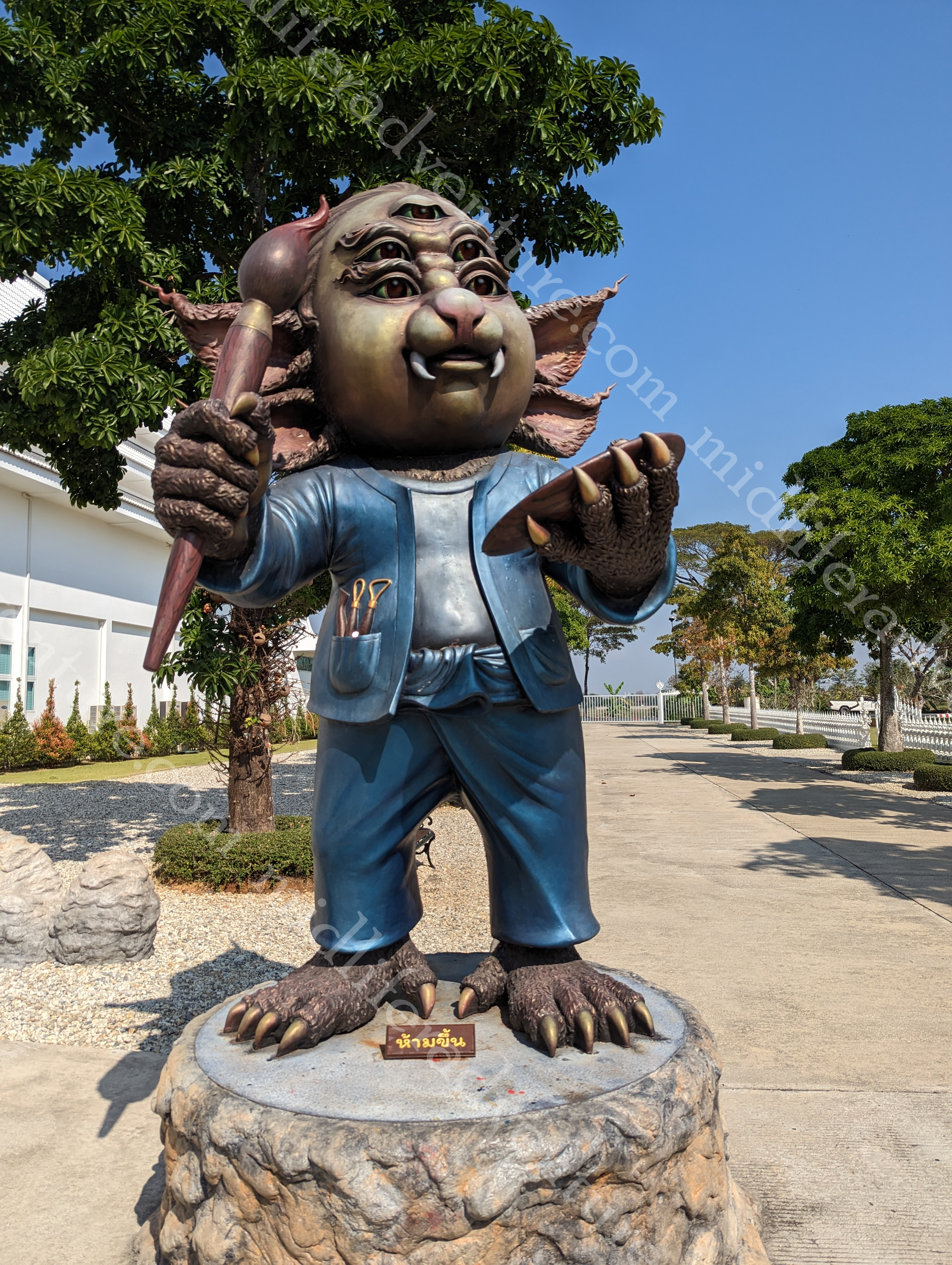
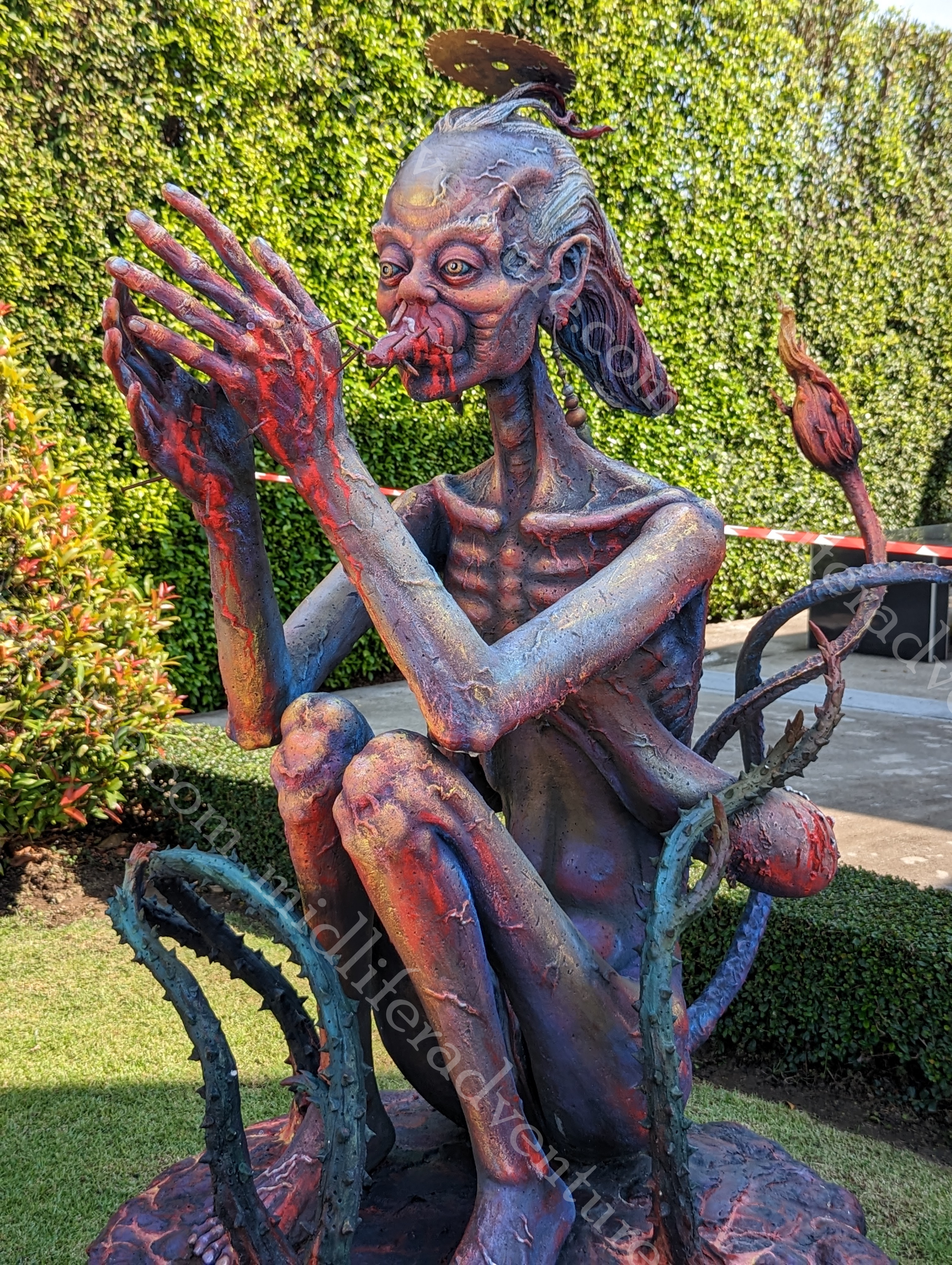
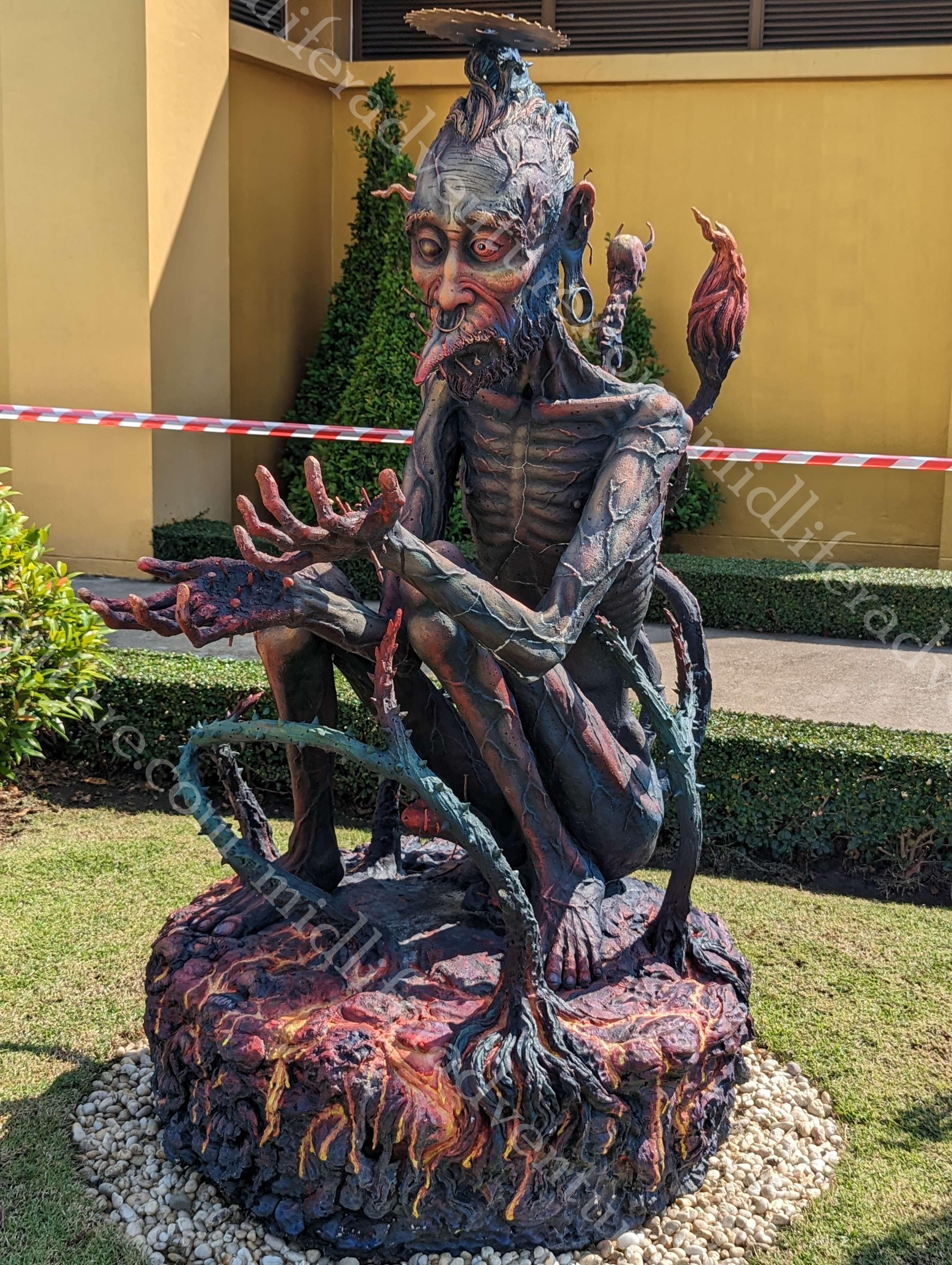

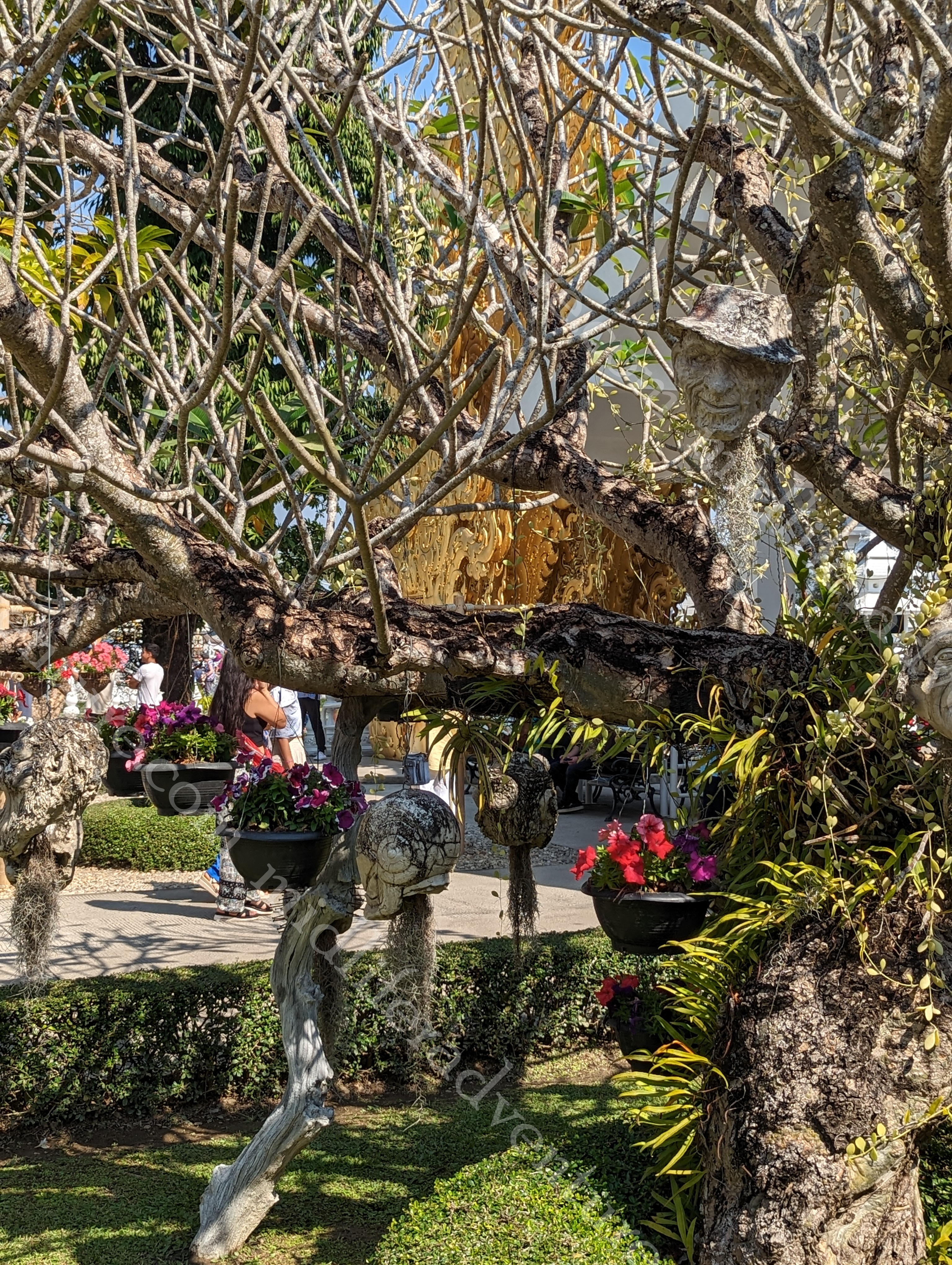

One of the most heavily photographed buildings there is this golden pavilion. Swarms of people are constantly posing in front of its beauty. Believe it or not…it is just the public toilet.

The Blue Temple – Wat Rong Sear Tean
Like the White Temple, this temple is totally different from almost every other that you will see throughout Thailand. It is about 4km from the heart of town, so a short tuk tuk ride – but in our case a fairly decent walk. Unsurprisingly the Blue Temple is blue a colour symbolically associated with purity, wisdom, and the lack of materialism that Buddhists aspire to. The name translates to mean the temple of the dancing tiger.
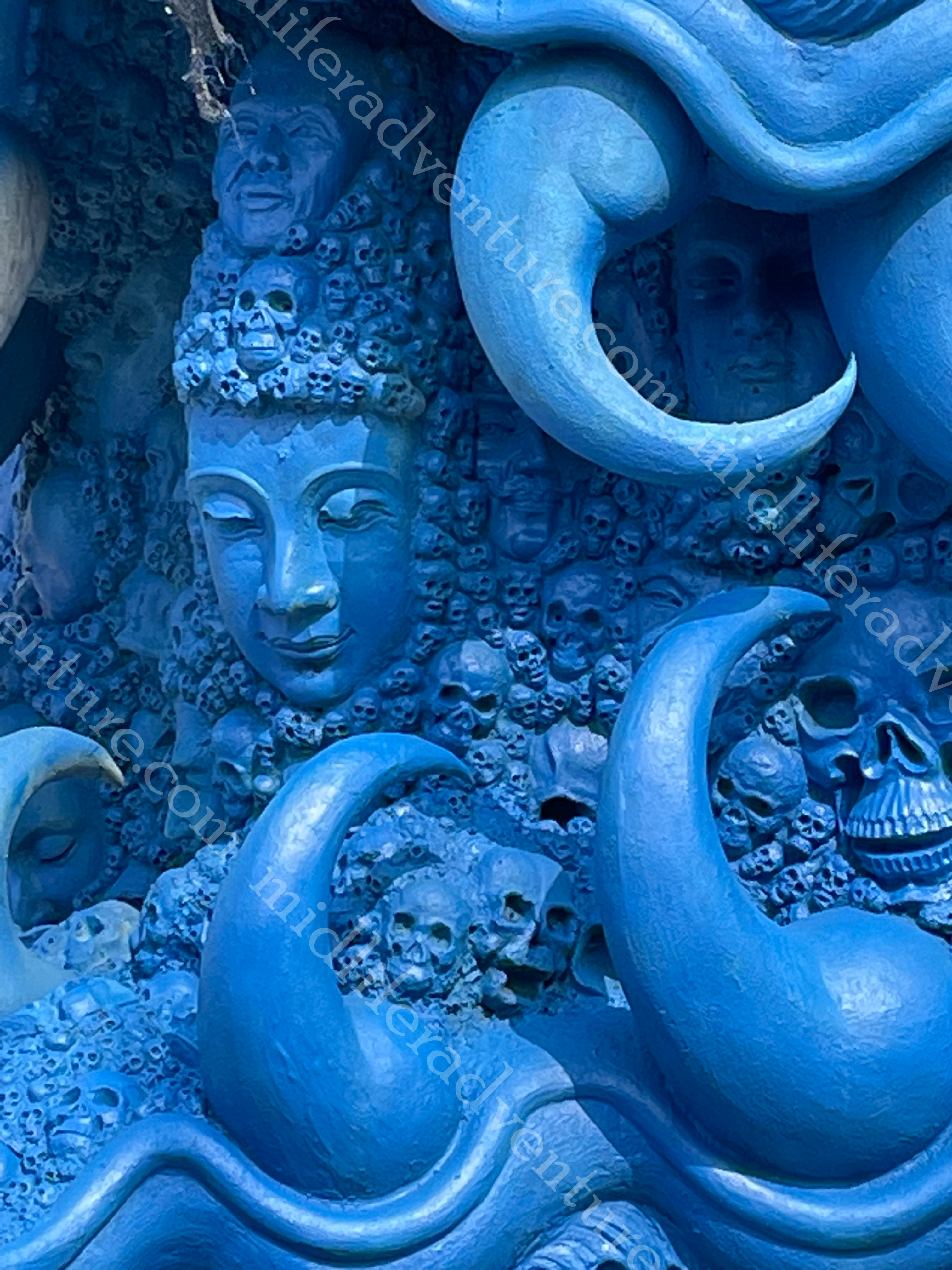
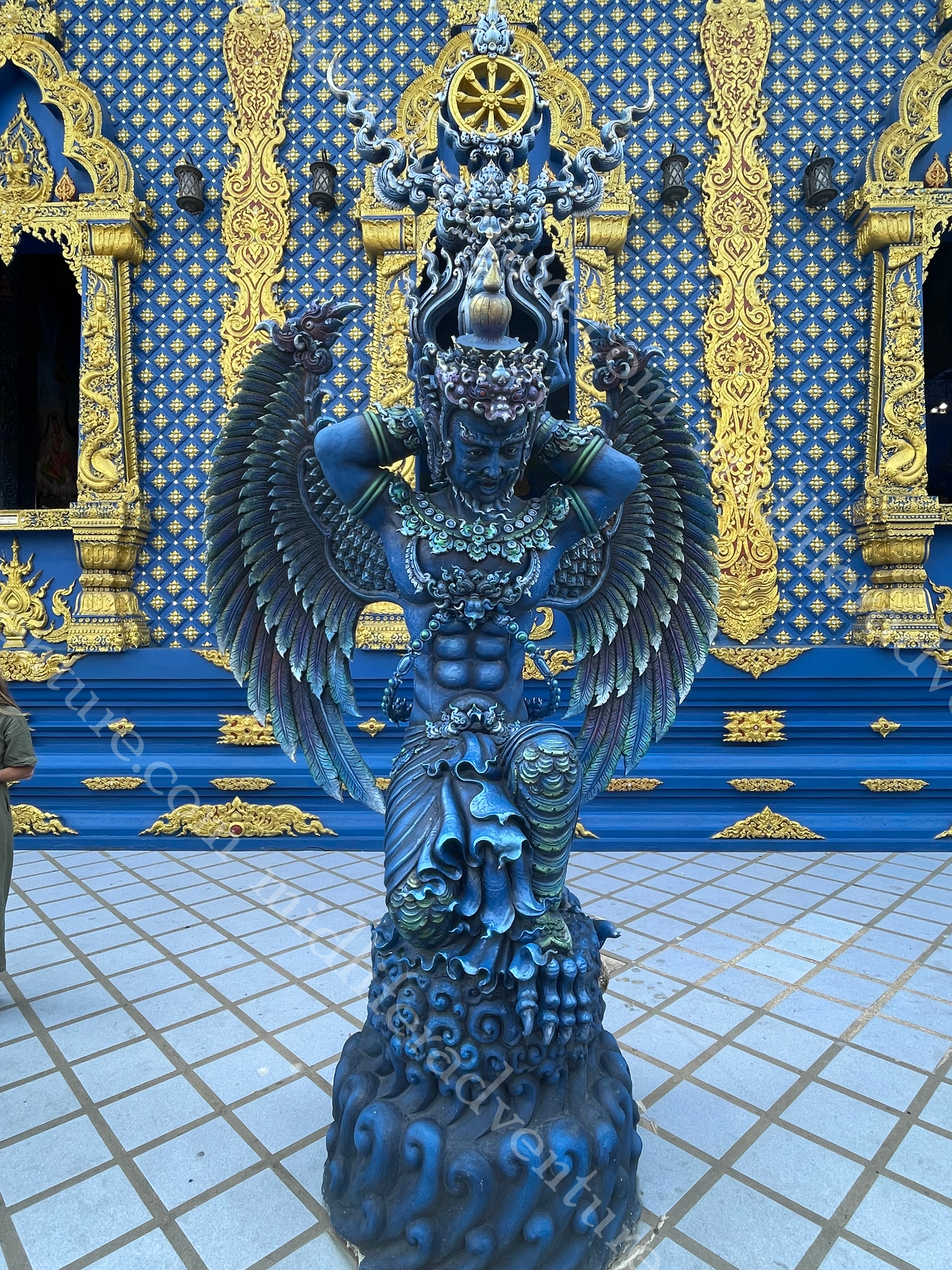
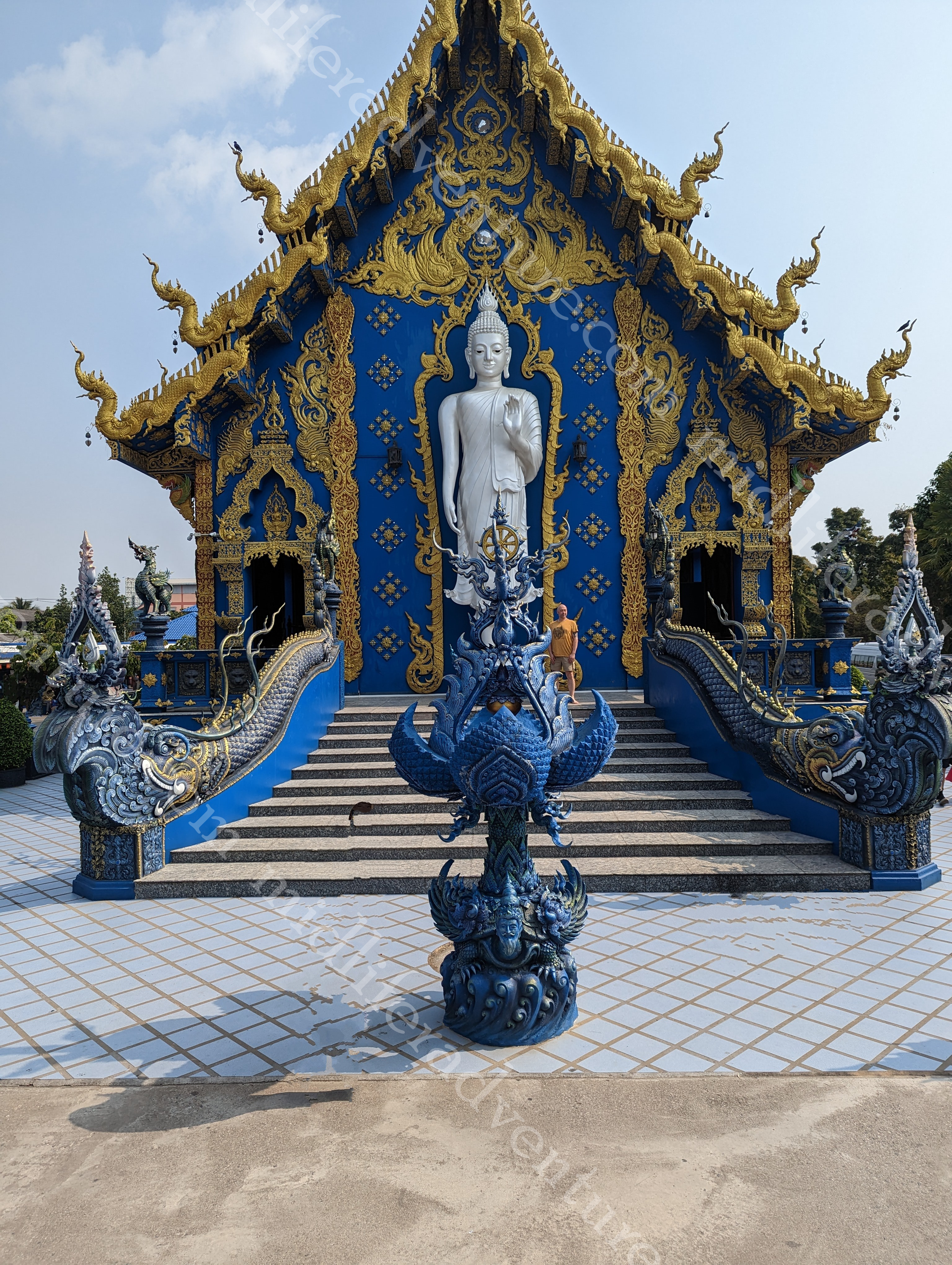
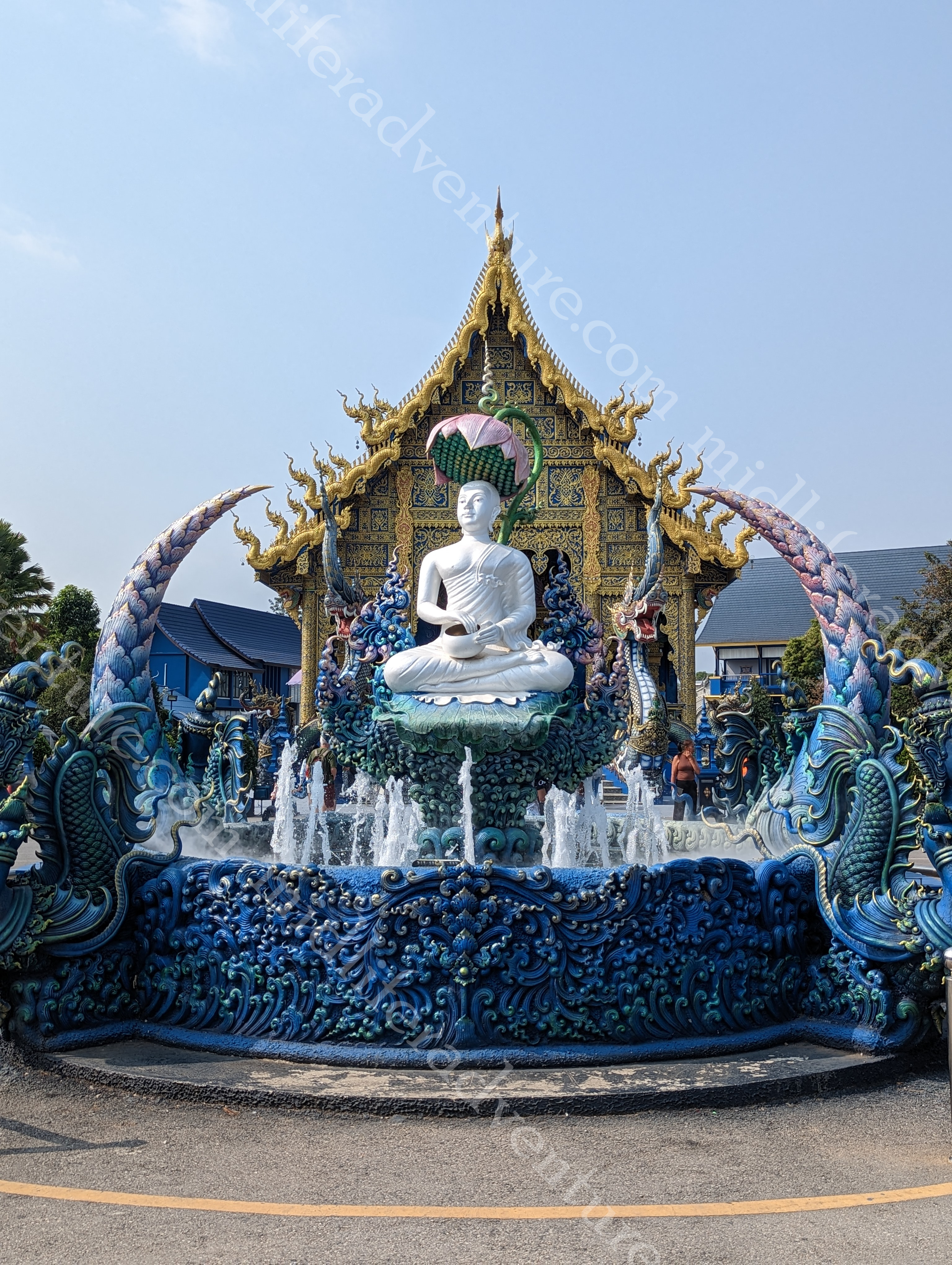
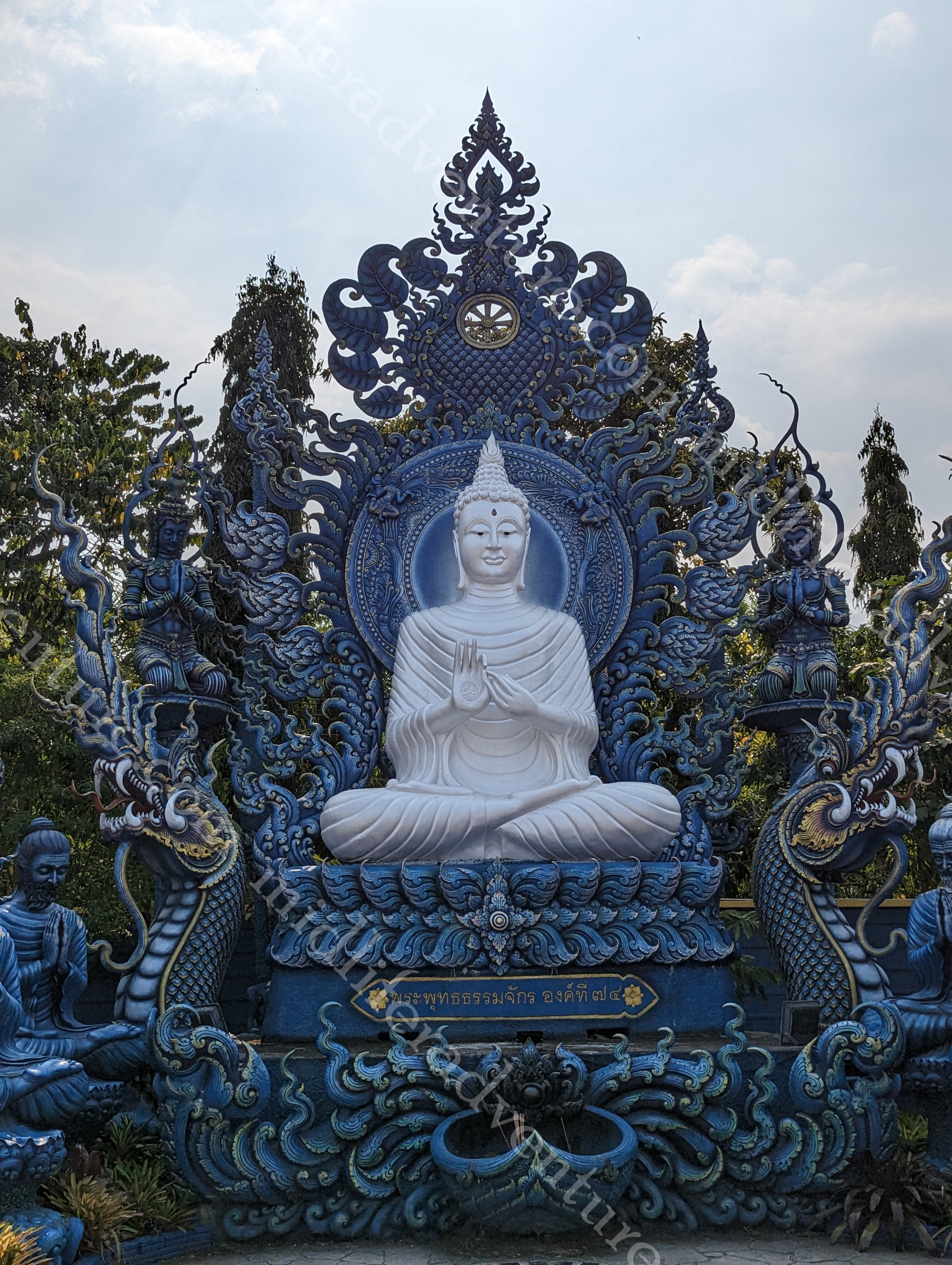
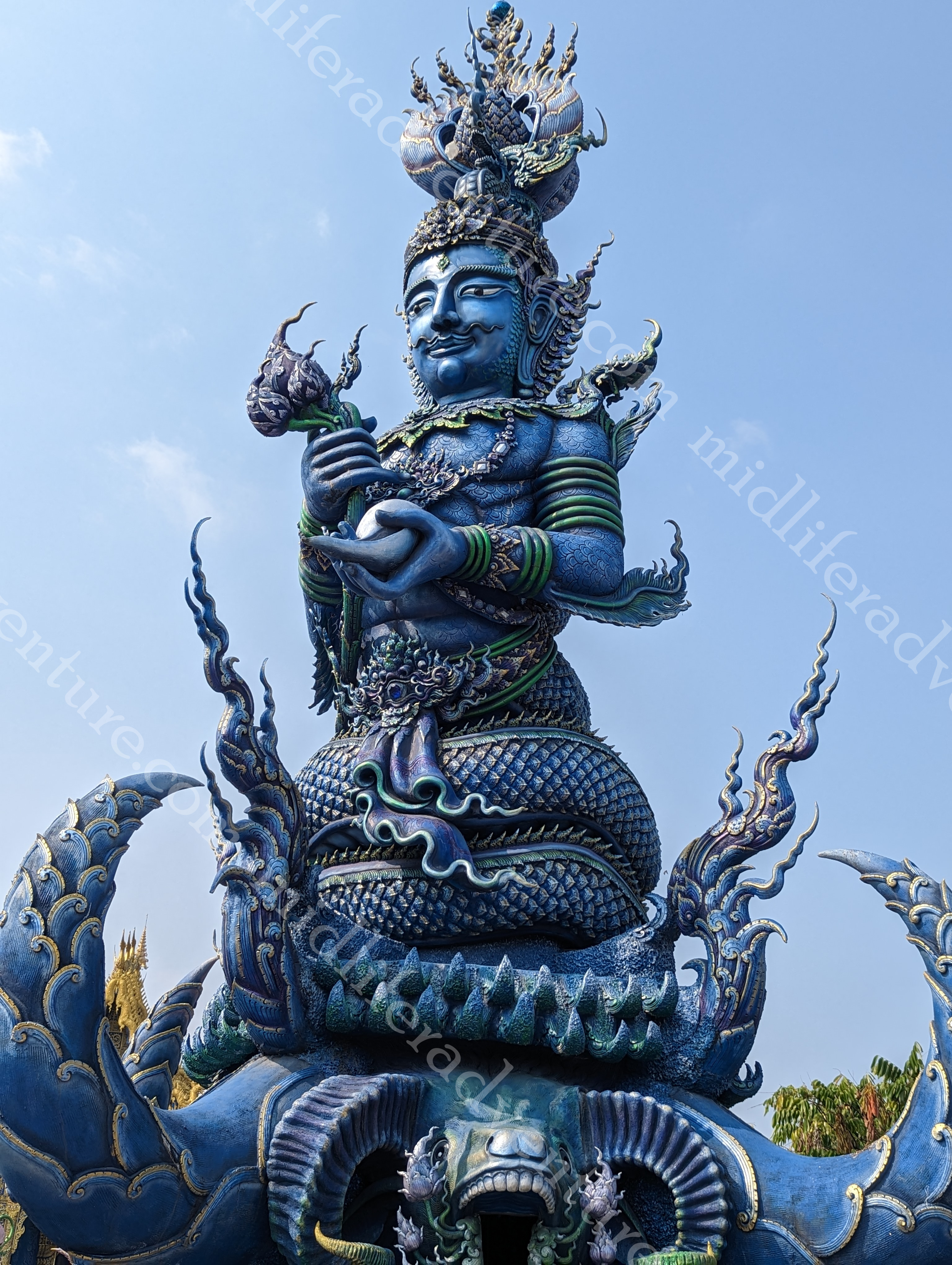

It is truly stunning this place. We have been in and out of Thai temples and they are all very lovely, intricately carved incredibly ornate and all very much similar. But even though you know it will be different this place takes it to another level. An absolute must see.
The Black House Museum – Baan Dam
The museum covers an area of about 40 acres and has over 40 different structures scattered around the site. The artist who designed and created the Baan Dam Museum (Thawan Duchanee) wants to turn this into a national arts and cultural learning centre. A bit like the white temple the place is covered in art and installations.

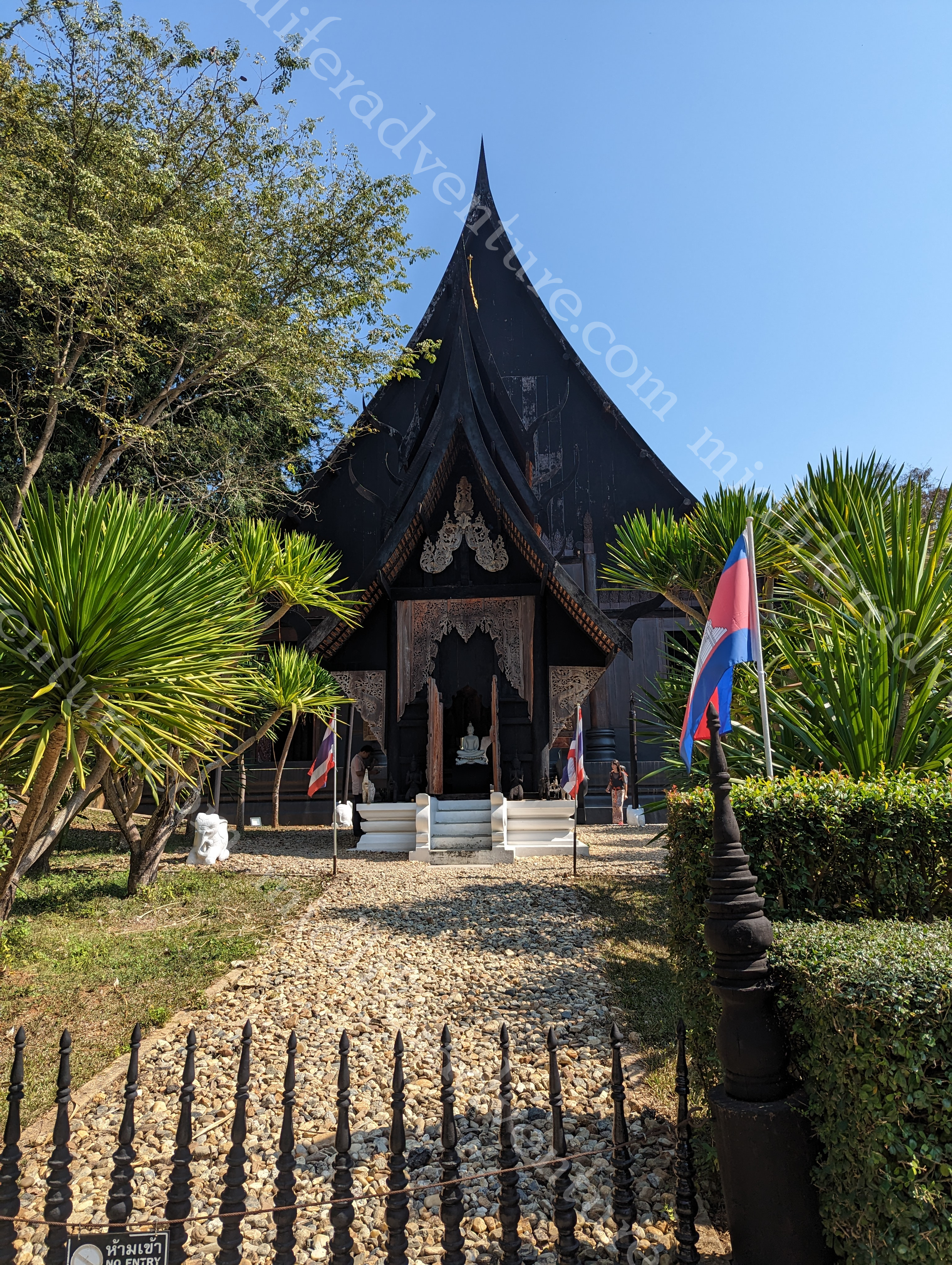


It gave me more of a sense of an old-school furniture shop more than a museum. Except that the furniture had been made from dead animals (notably water buffalo horns and skulls) and taxidermied animals such as crocs, snakes and even a wolf were used as table runners.

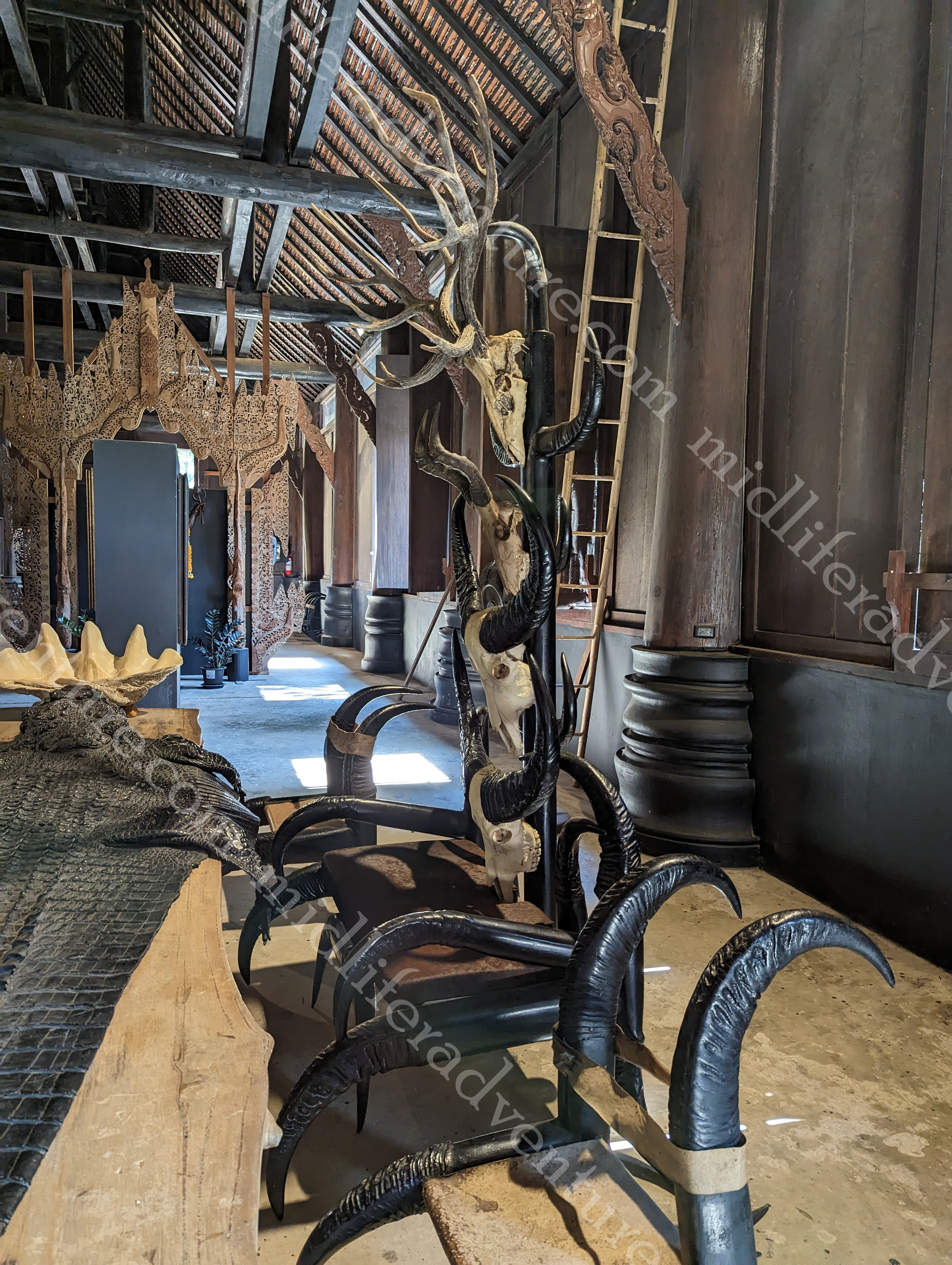
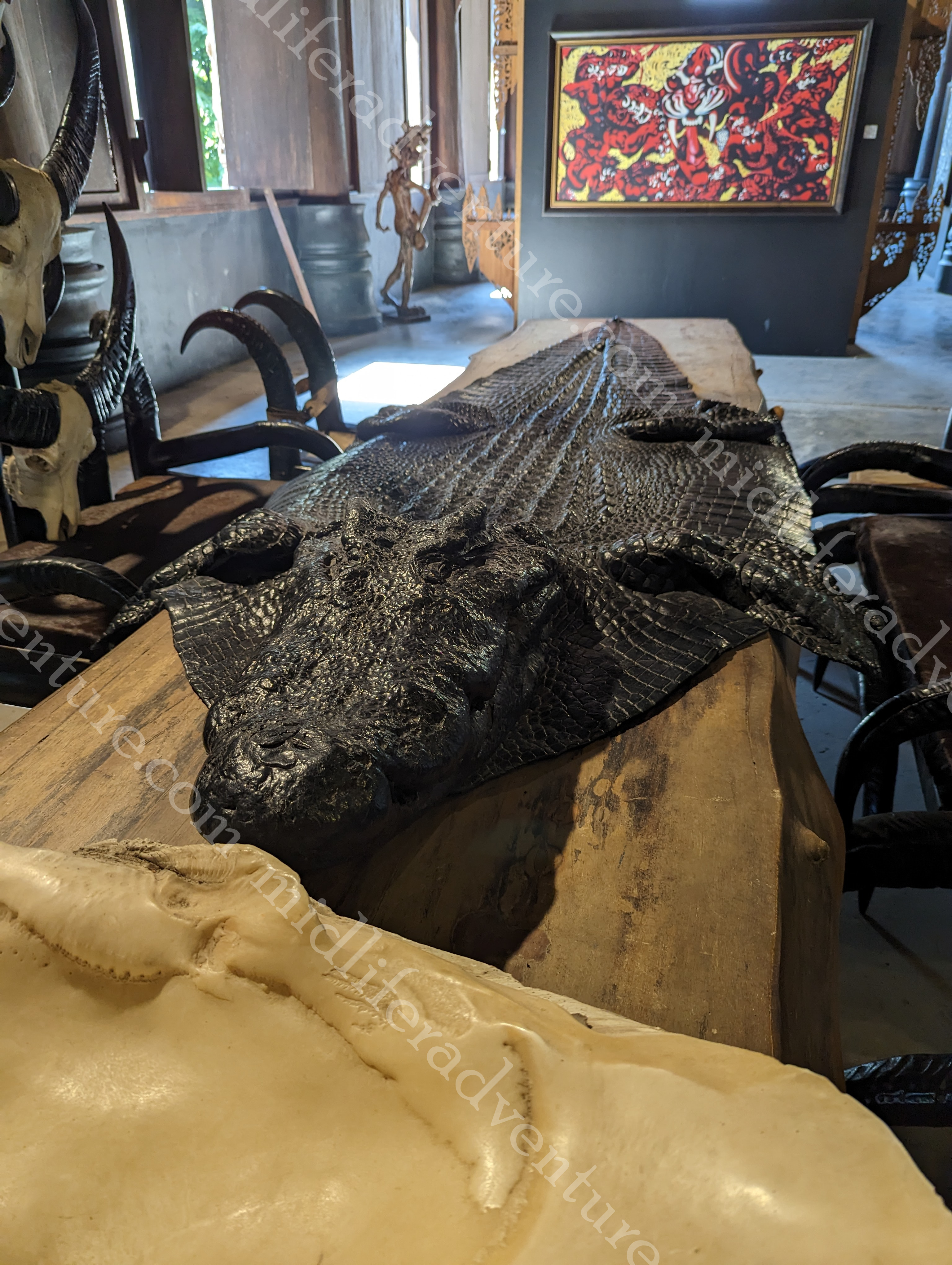
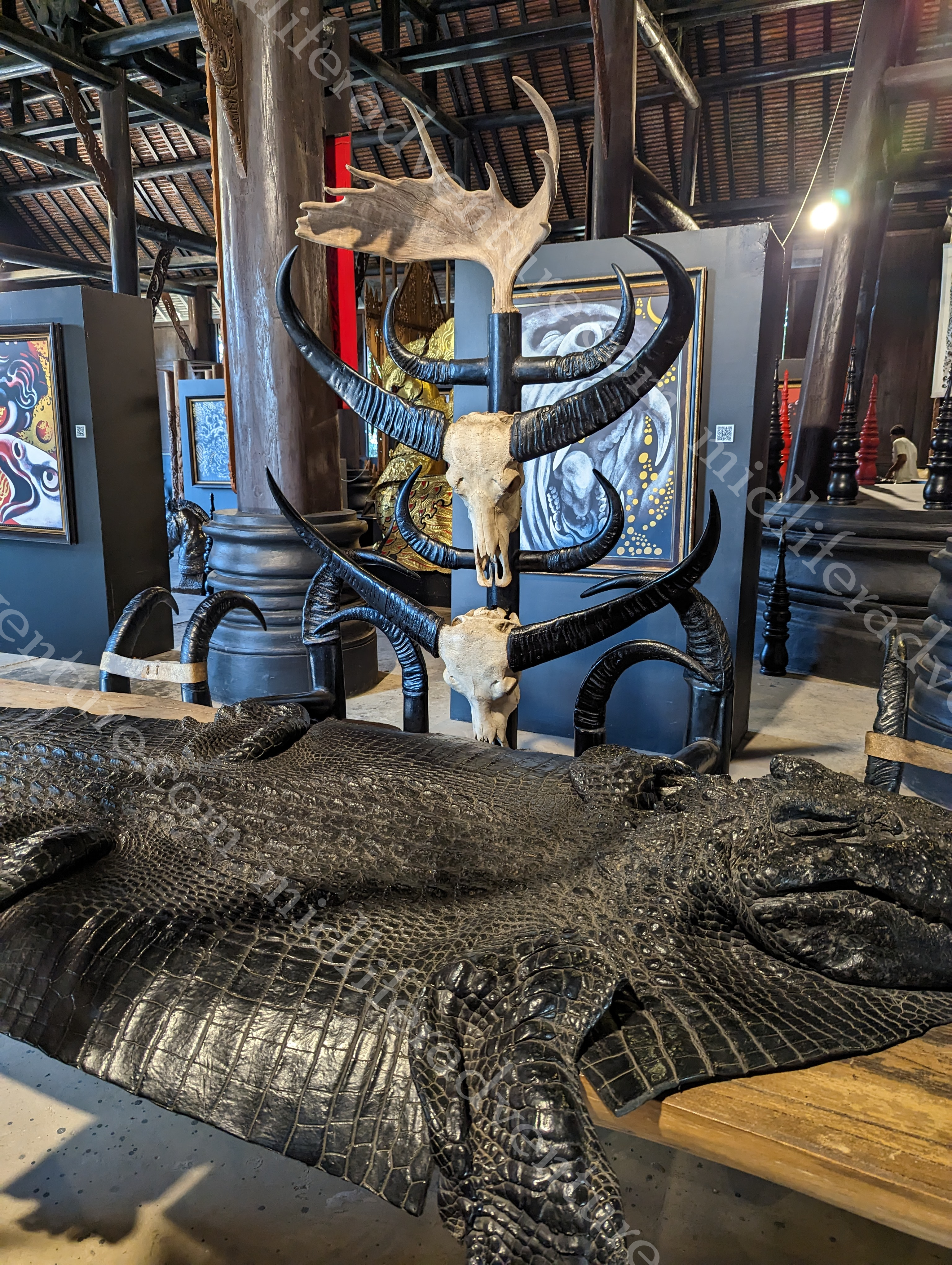
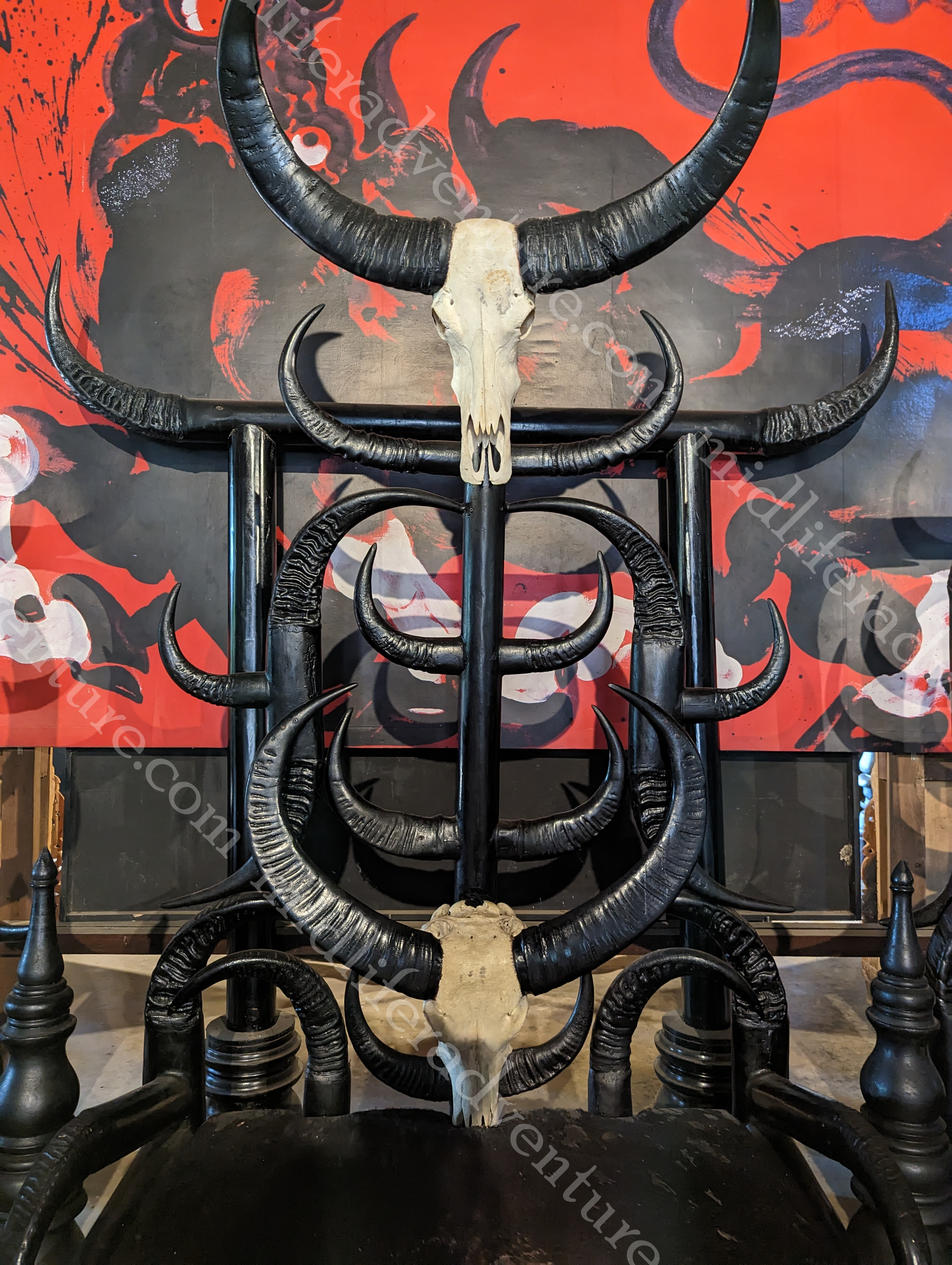


Everything is painted black and deep brown with big, intimidating-looking doors. The walls, floors, and even ceilings of the buildings are covered with paintings, sculptures, installations. But mostly there was just a lot of furniture made from animal skins, bones, and horns.
The big buddha – Wat Huay Pla Kang
While everyone calls it the big buddha it is not a buddha but actually a 23-storey high white Guan Yin or the Goddess of Mercy. In addition, there is a 9-tier pagoda (temple) guarded by golden and green nagas and of course… there is a ridiculously long staircase to get to it. And Hello Kitty busses to ferry the tourists who don’t want to walk.
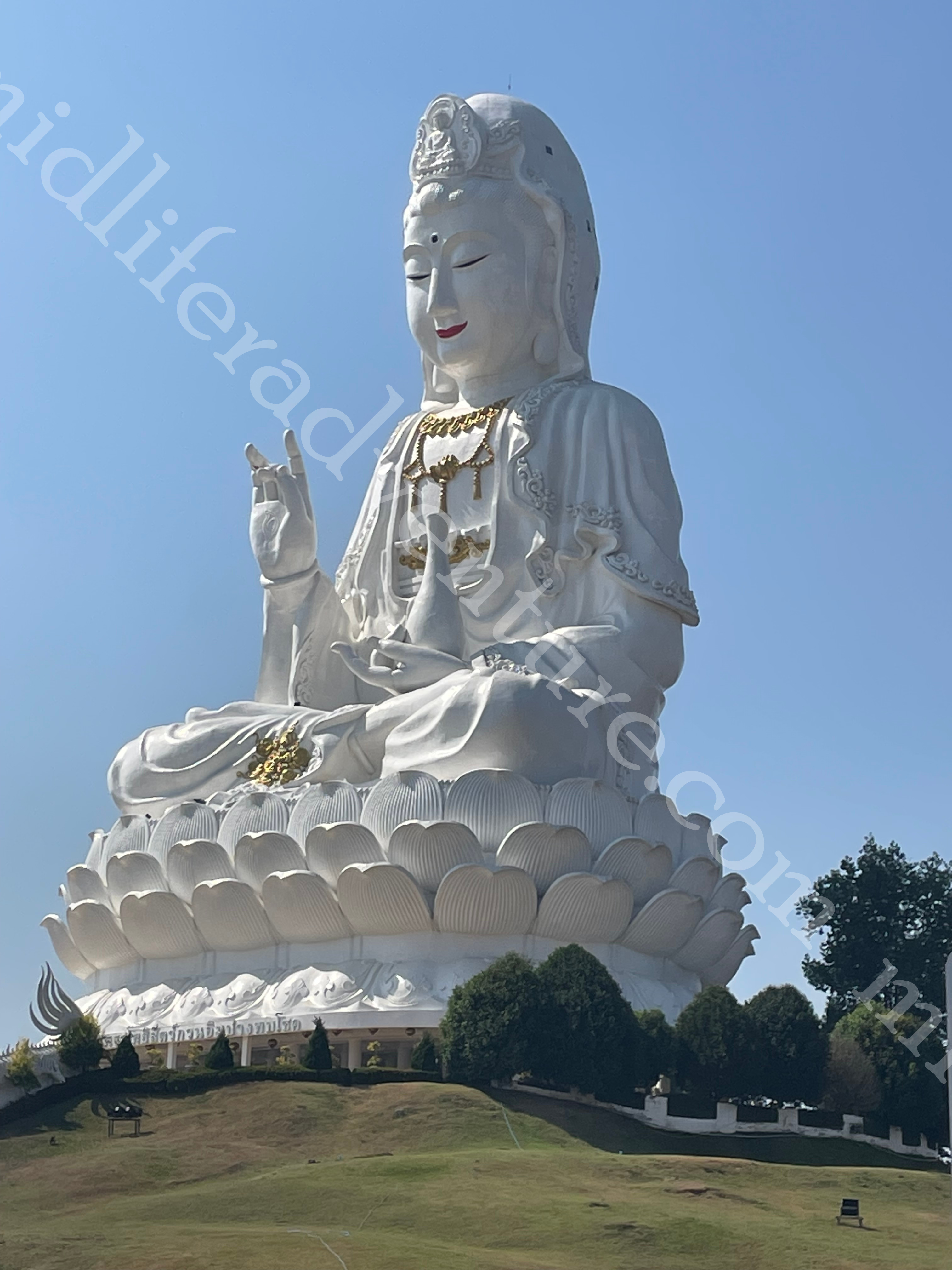
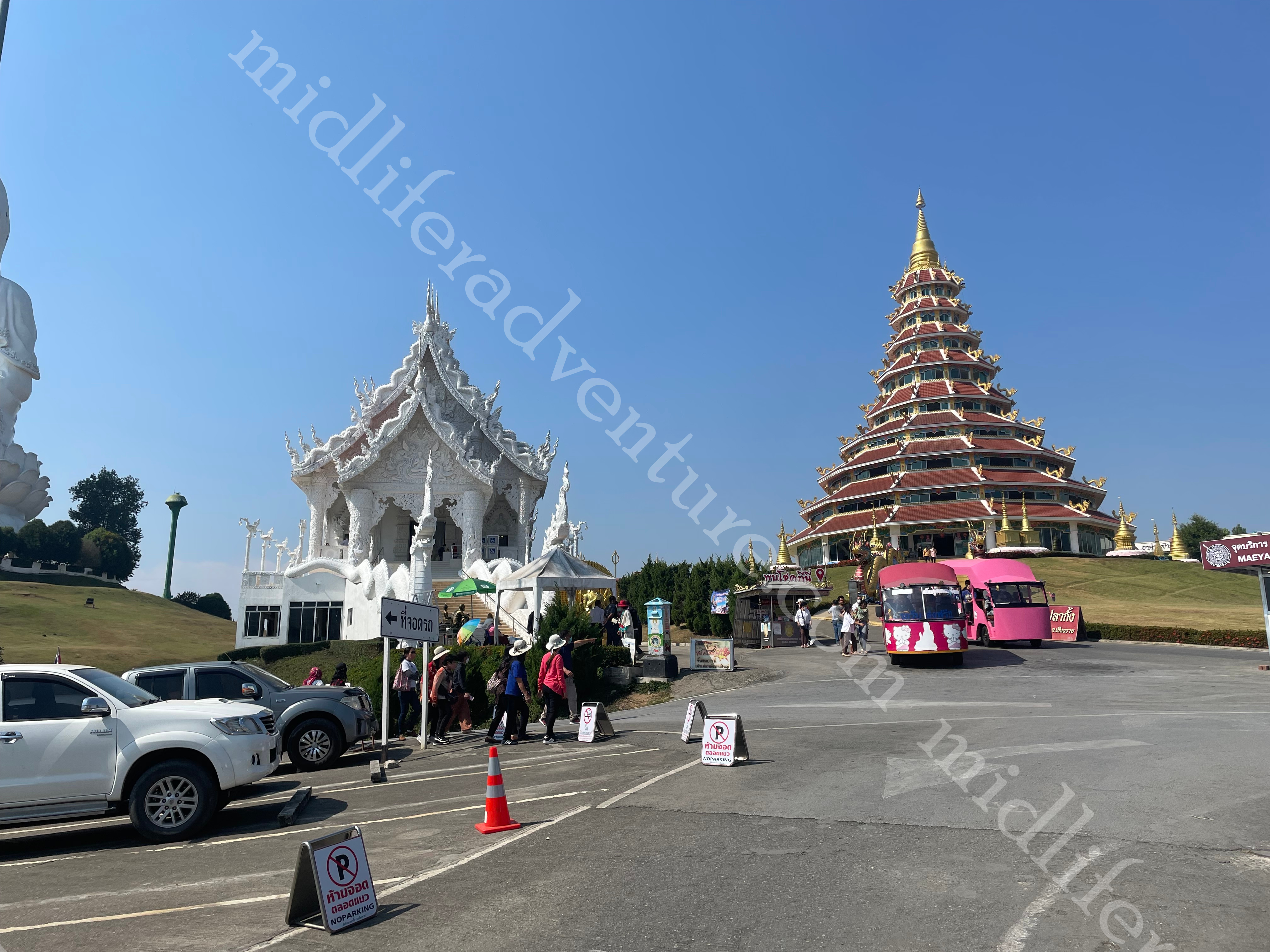

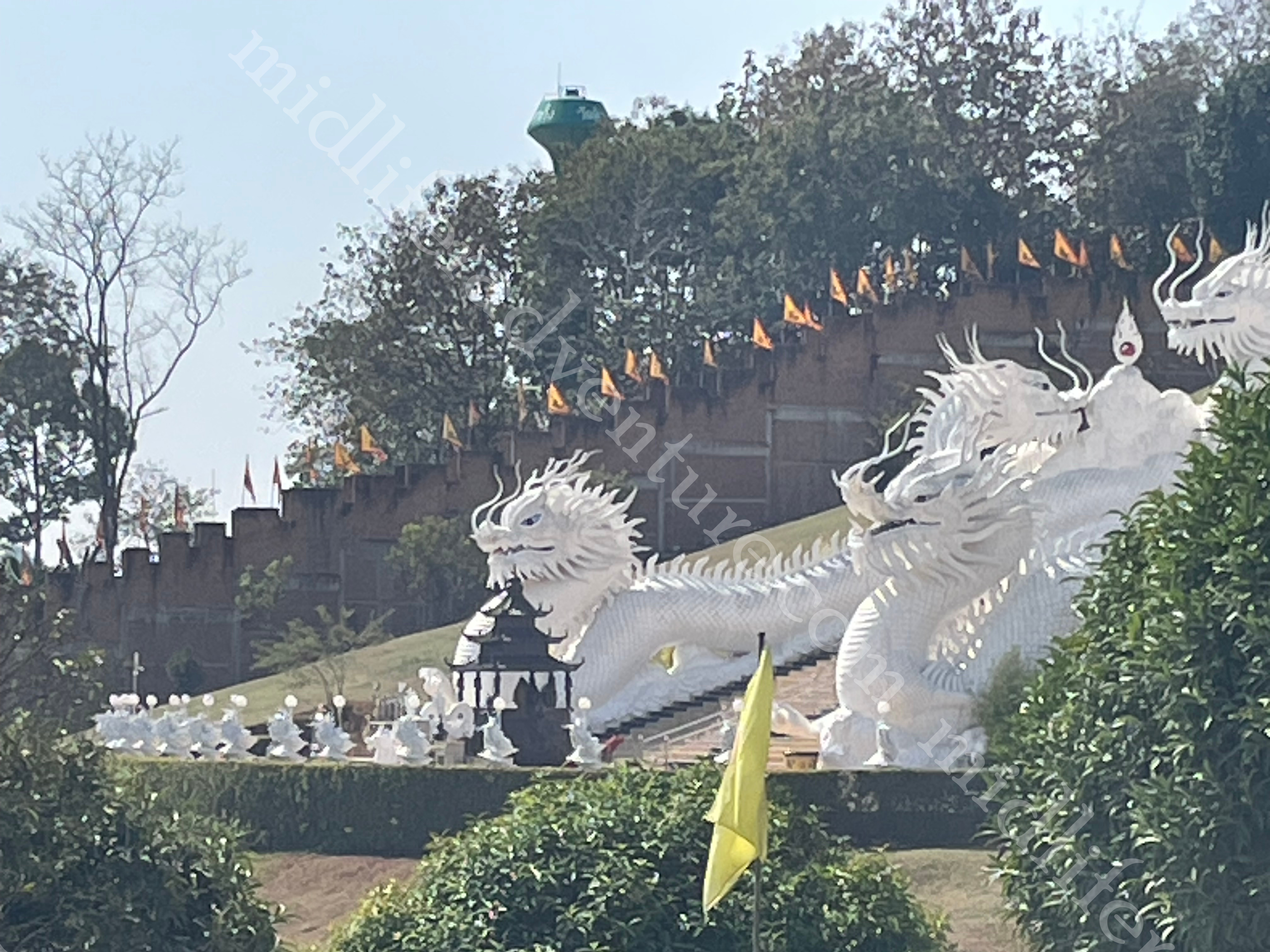
Chiang Rai Flower Festival
Ok, so this was sheer dumb luck. It just so happened that our journey coincided with the Chiang Rai flower festival. We were headed to the 75th anniversary flag and lamp park (built for the king’s 75th birthday) when we found that the park was in the midst of the flower festival. Orchids, tulips and many more perfectly sculptured flower displays were sprawled out all over the park. Add to that some strategically placed dry ice in water to make an eerie mist and it was lovely. As I am not really a flower guy, I will just shut up and show you what we stumbled upon.
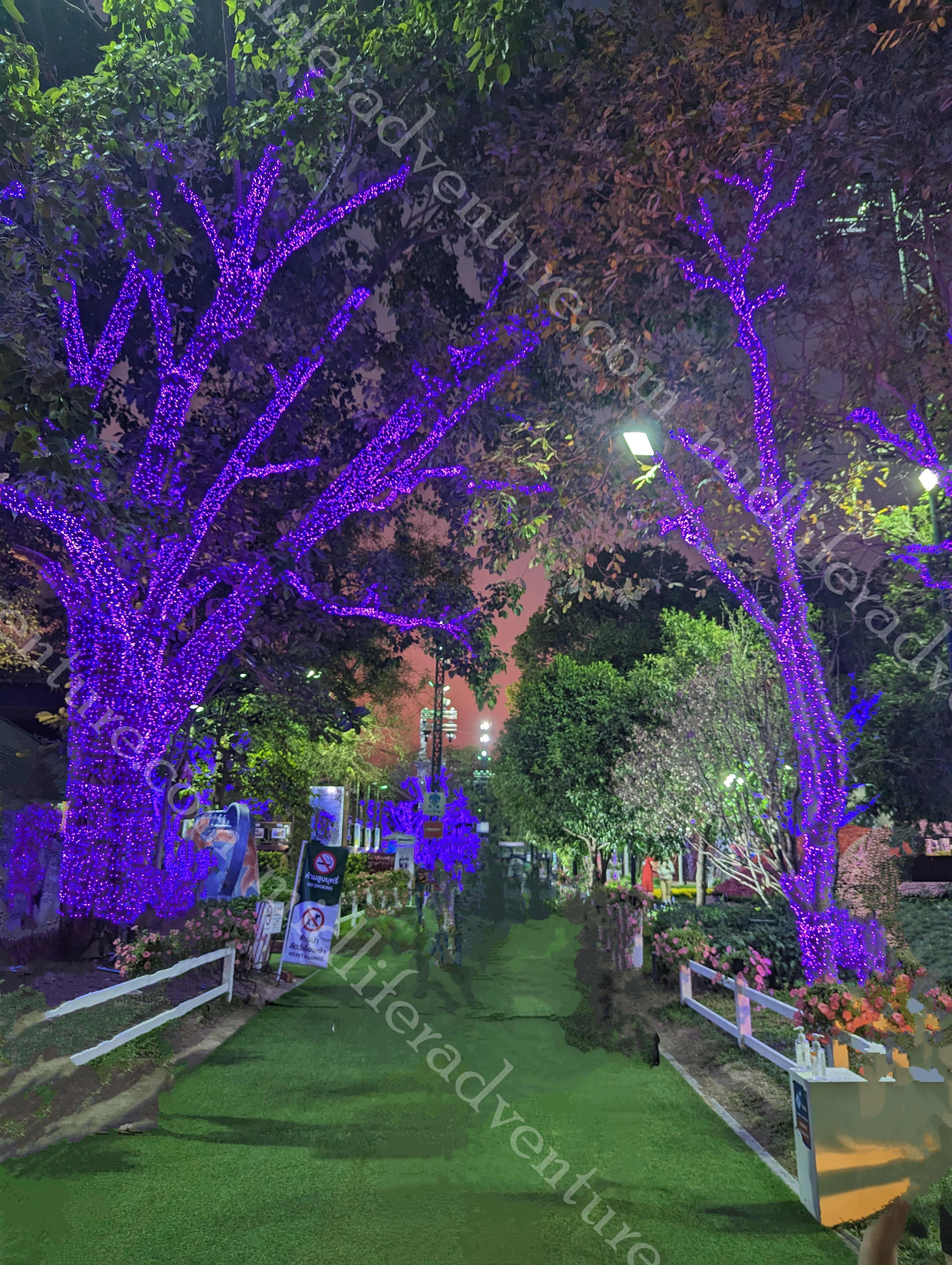
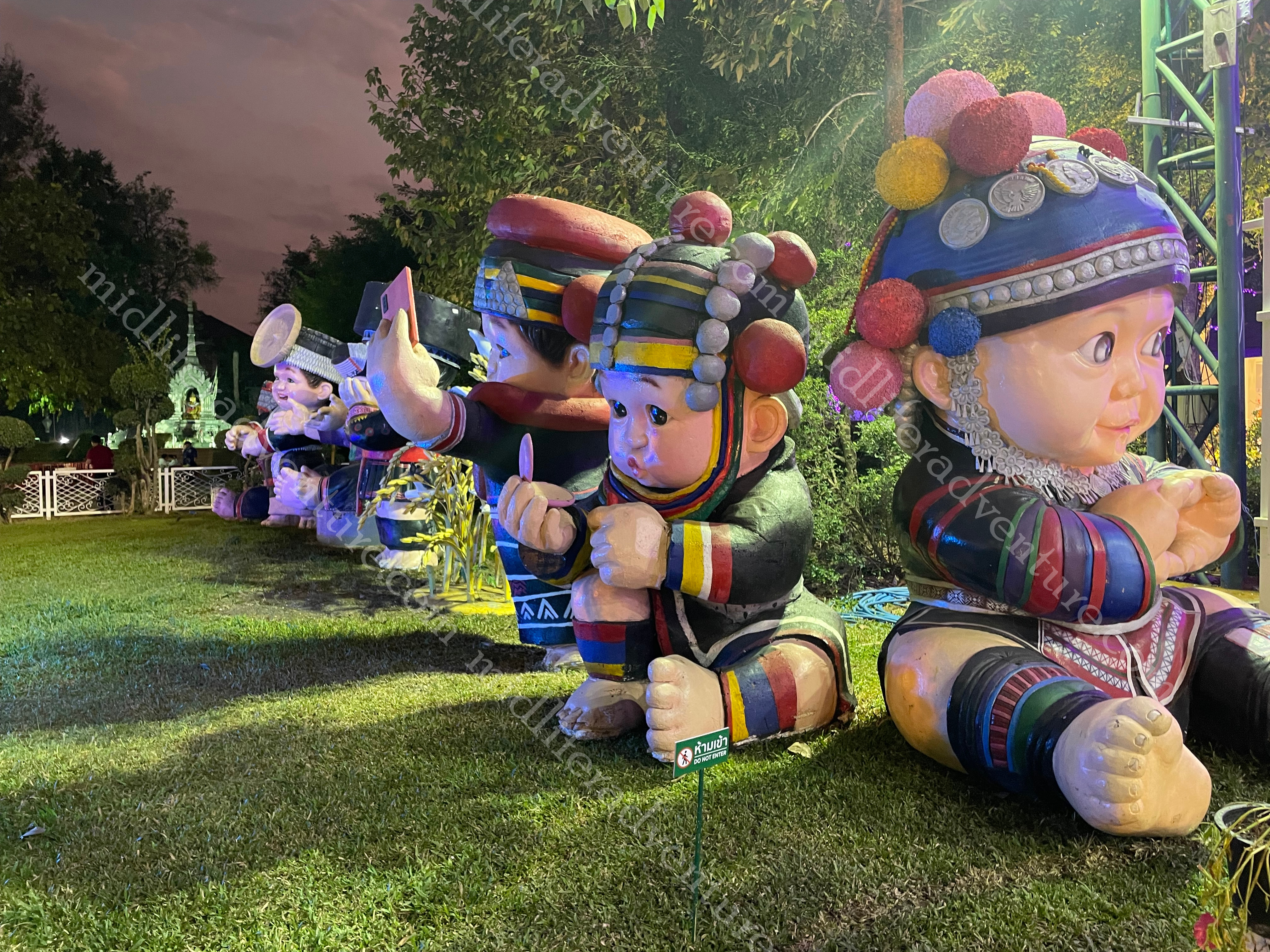

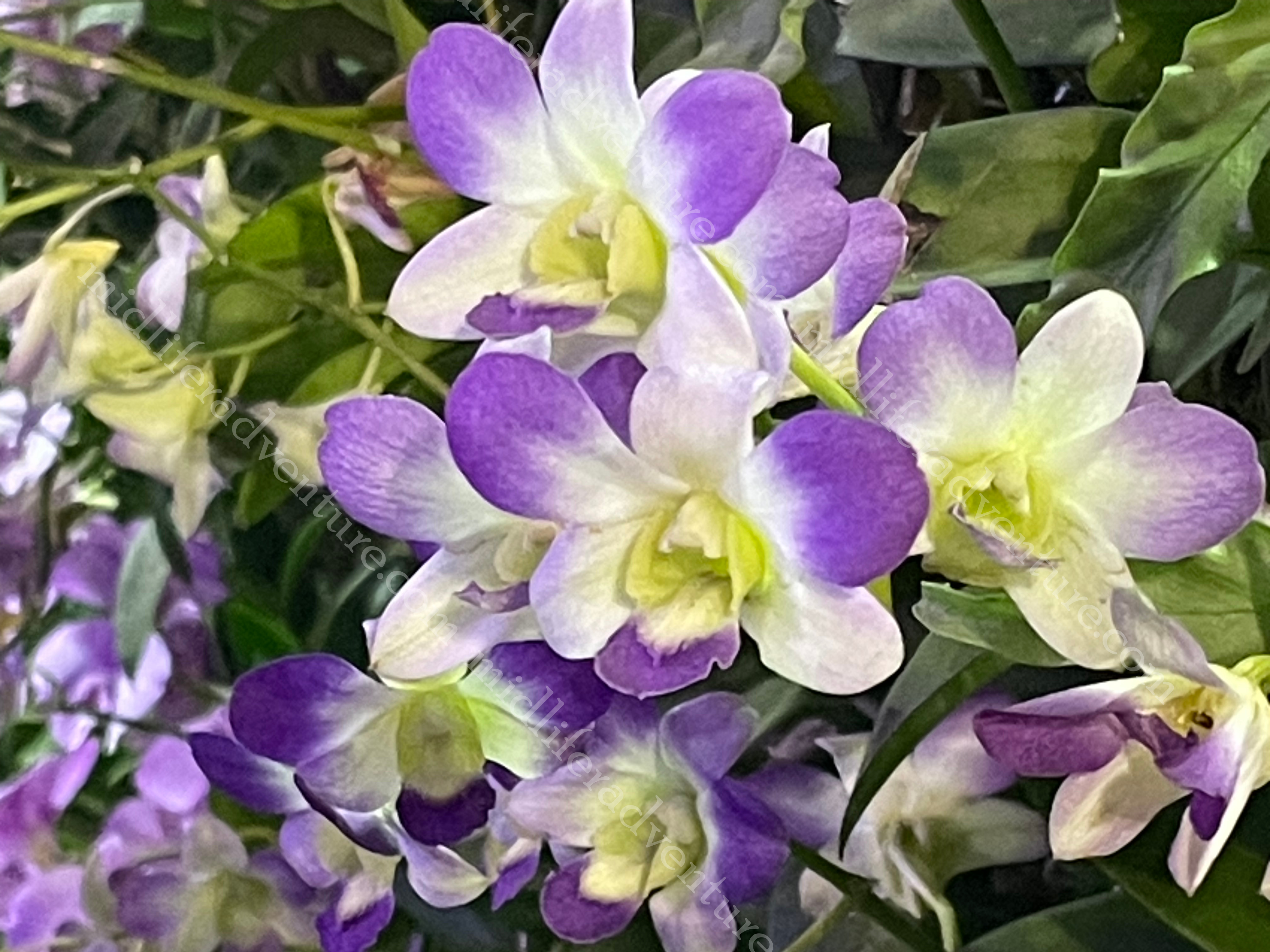

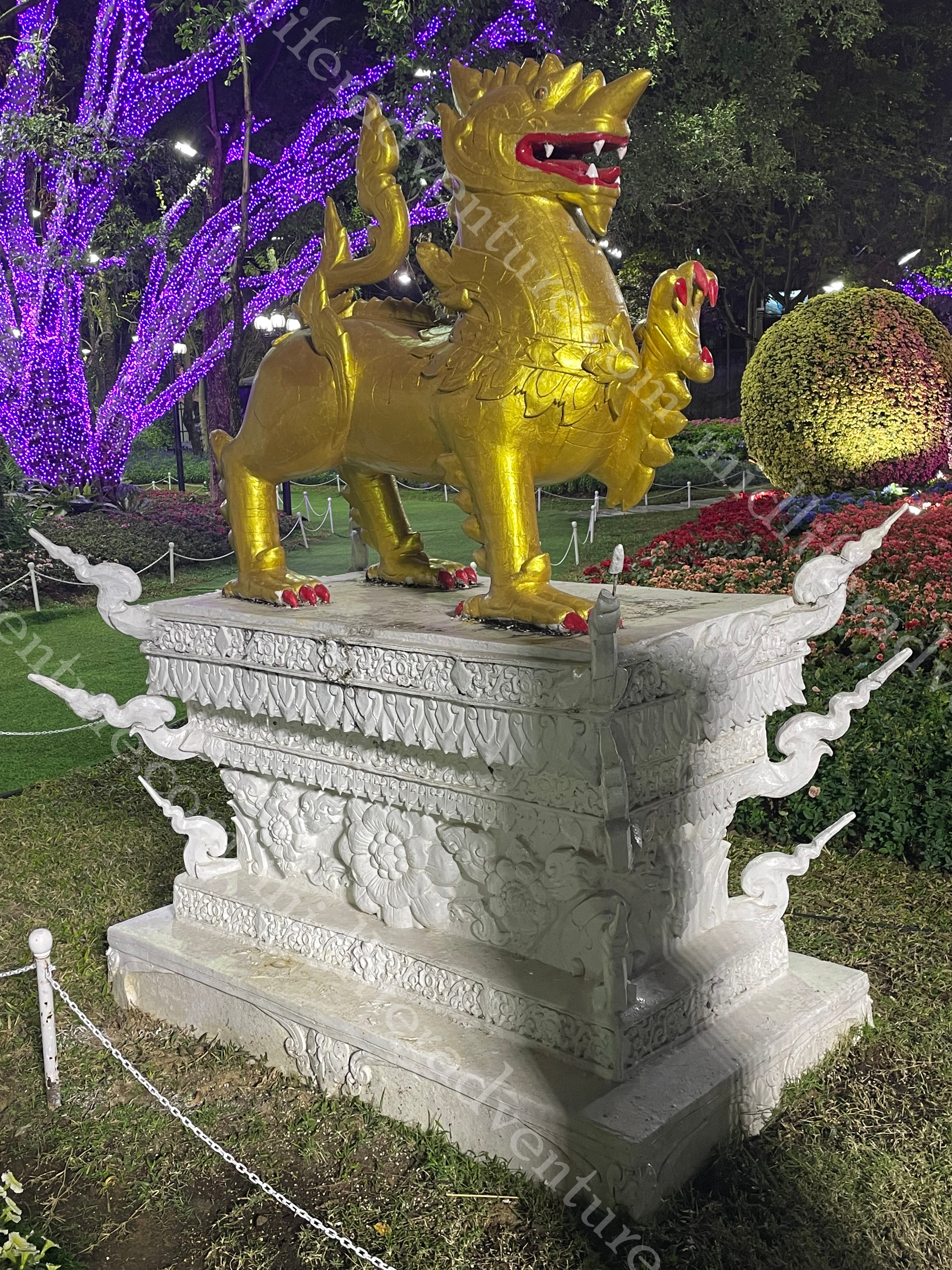
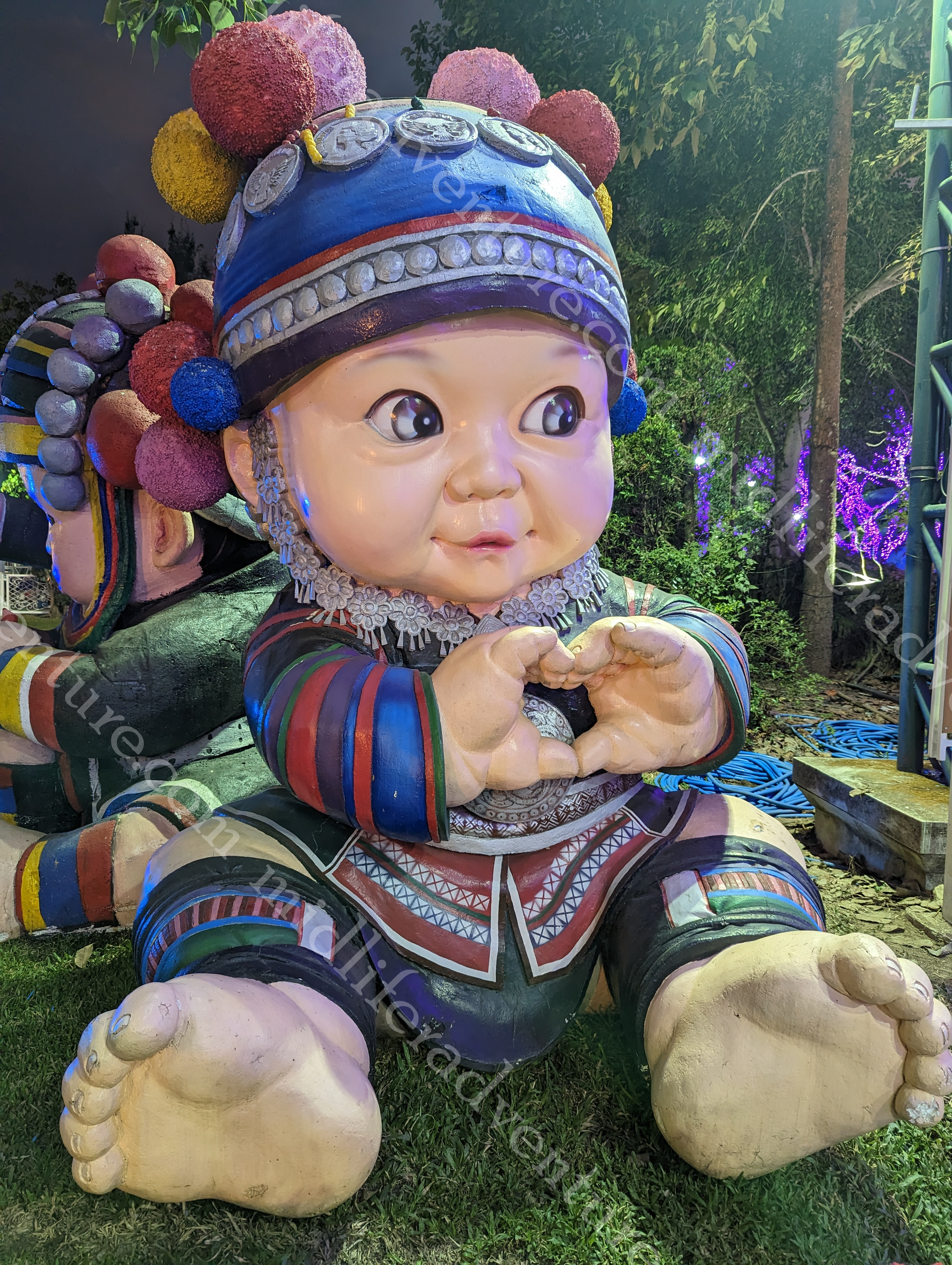
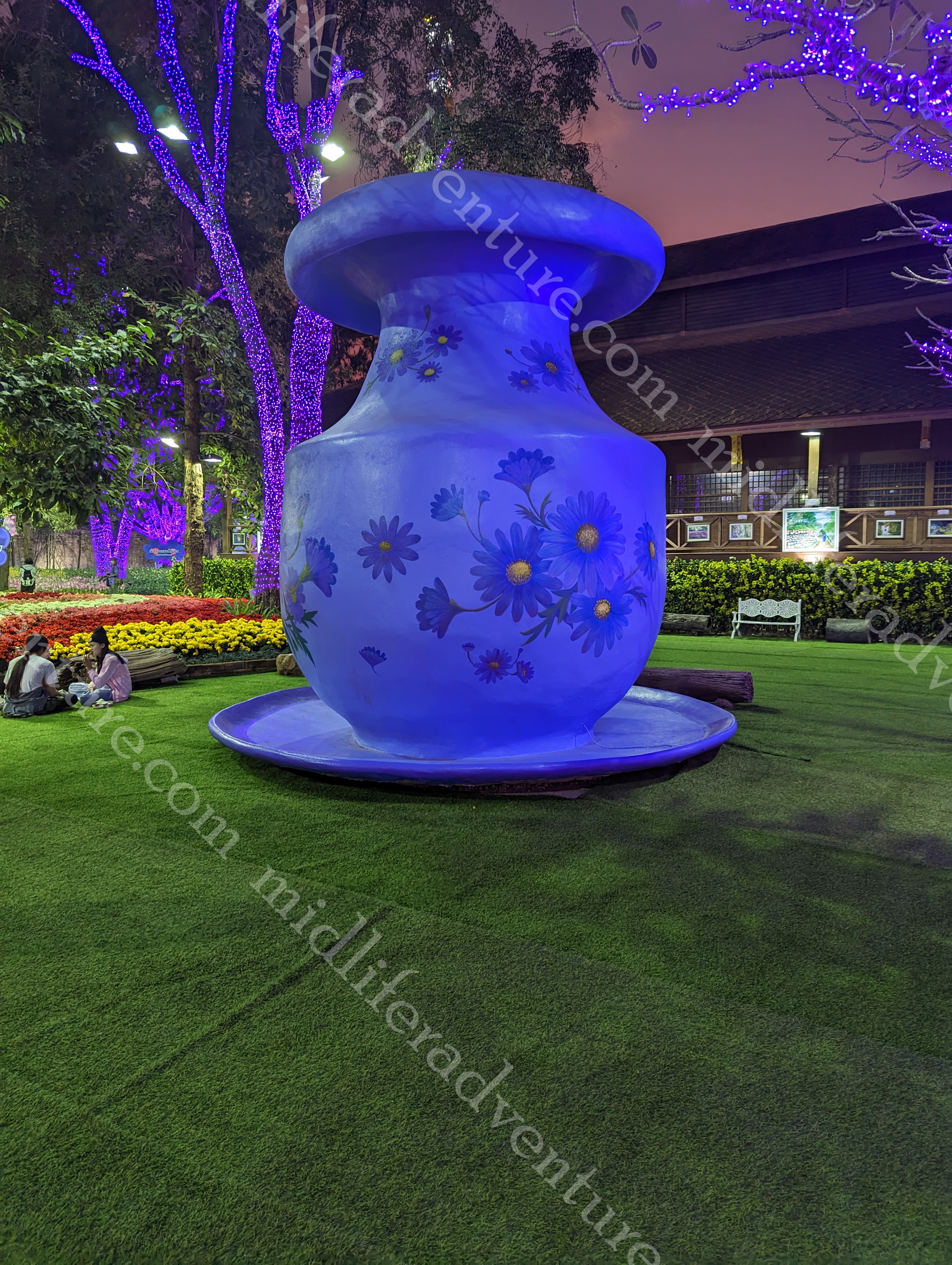
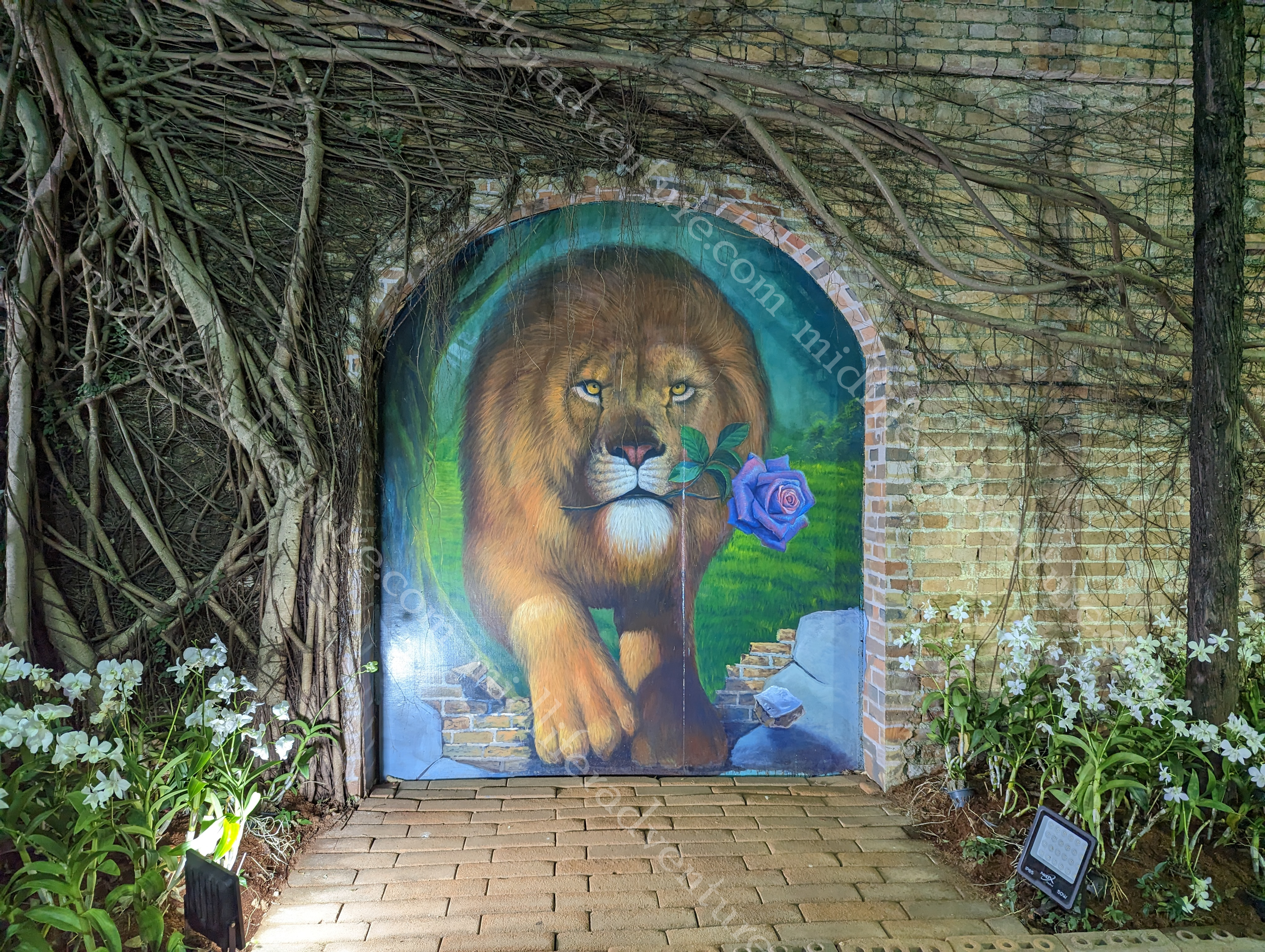
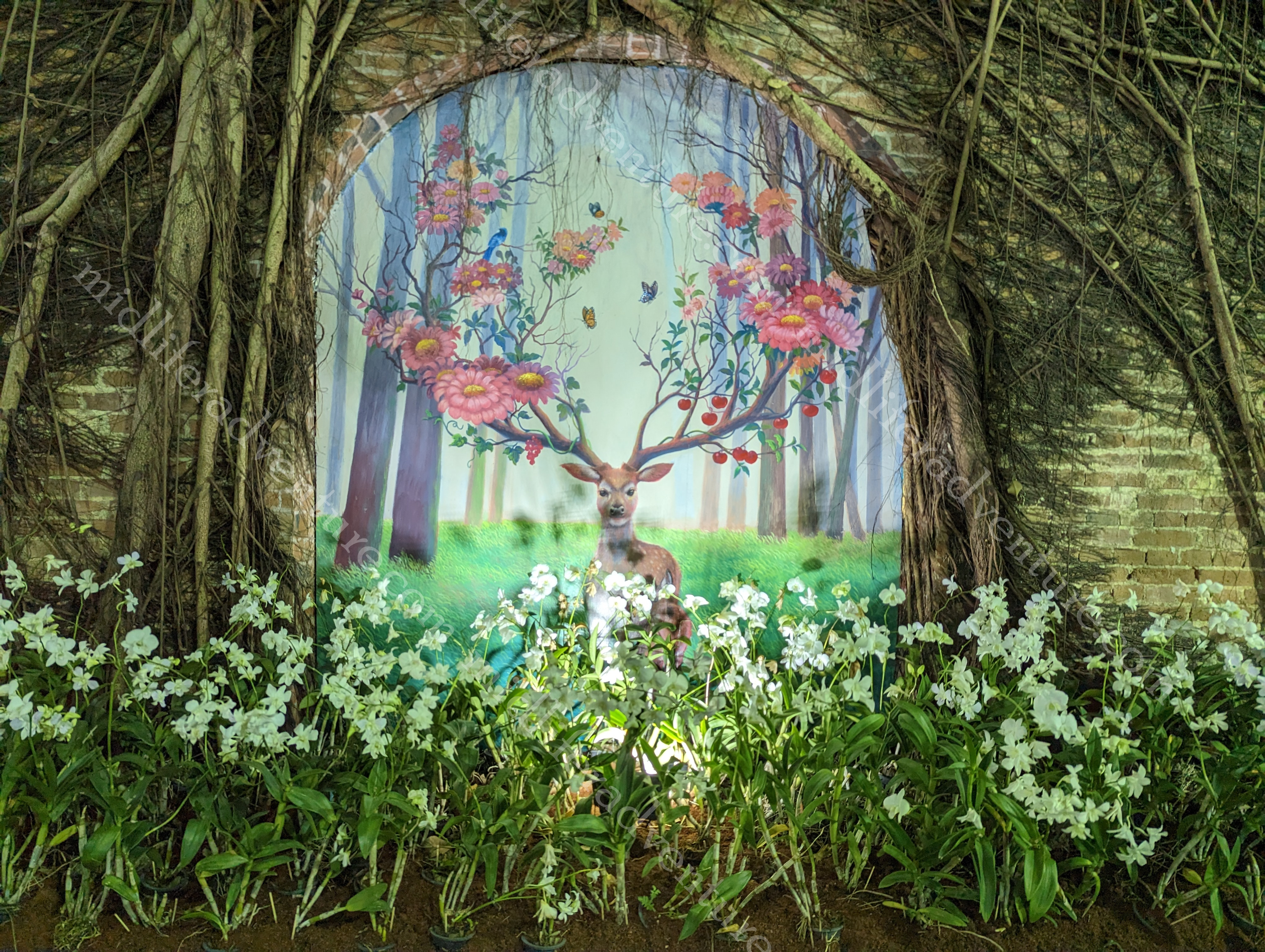
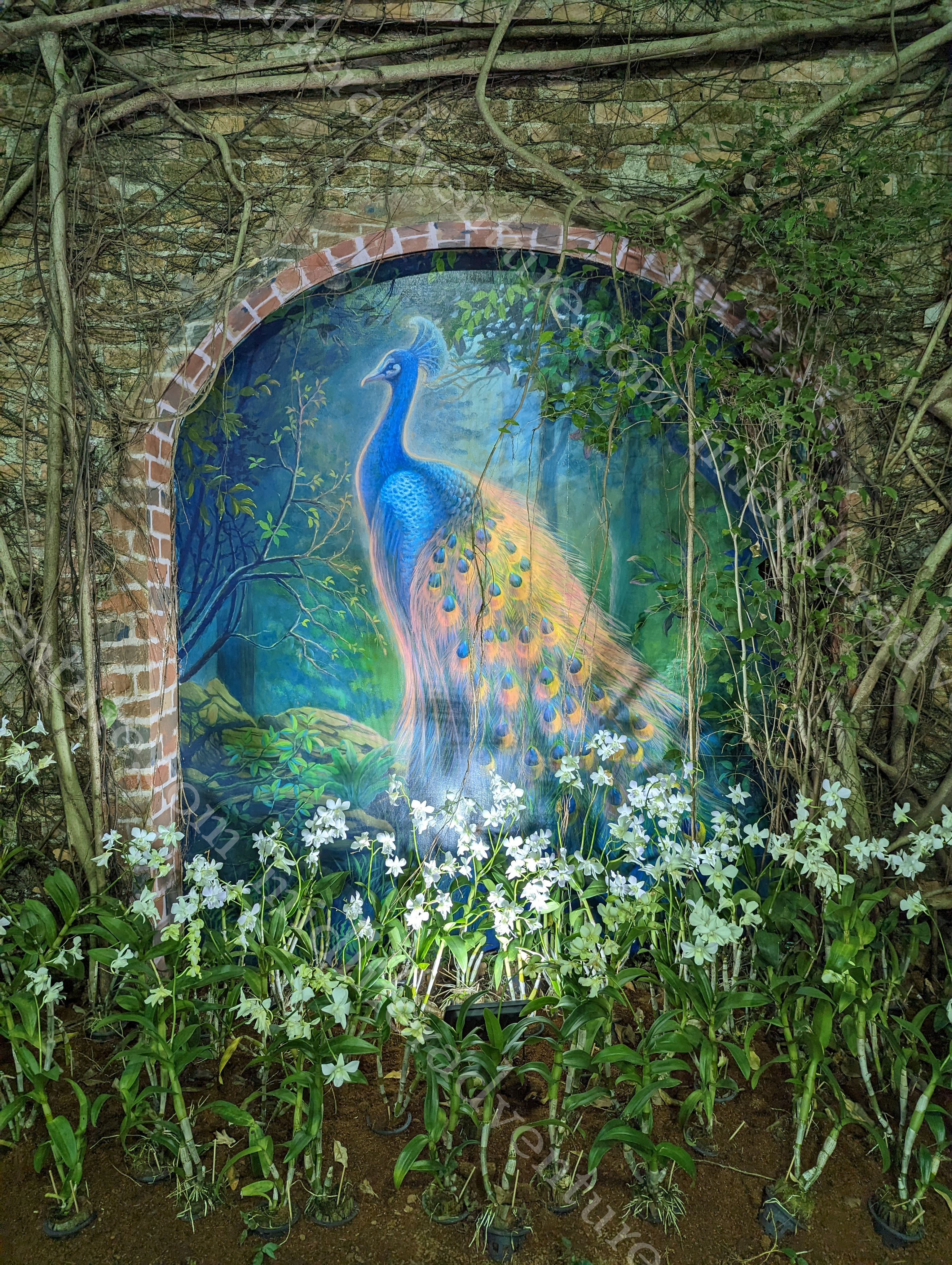
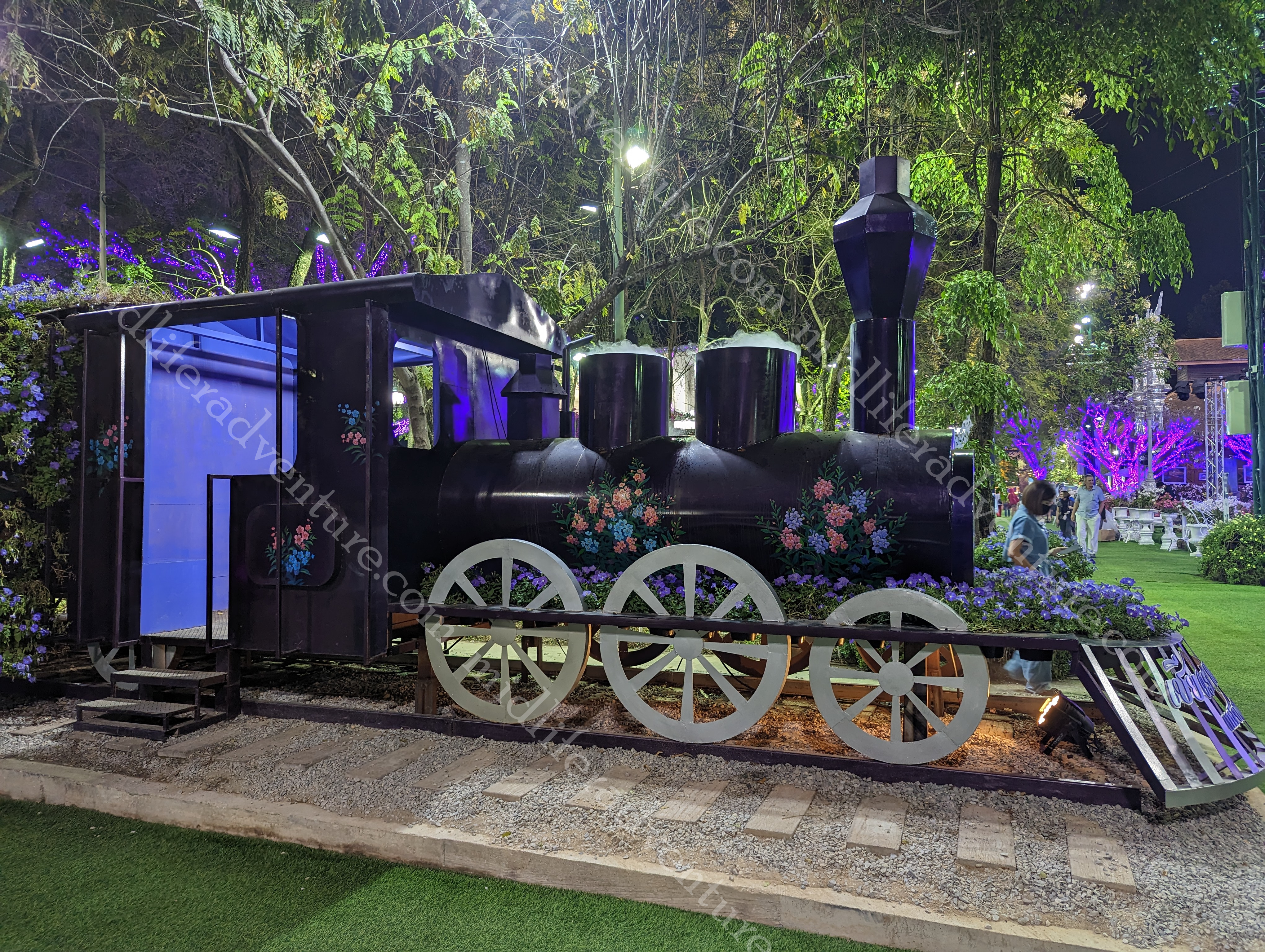
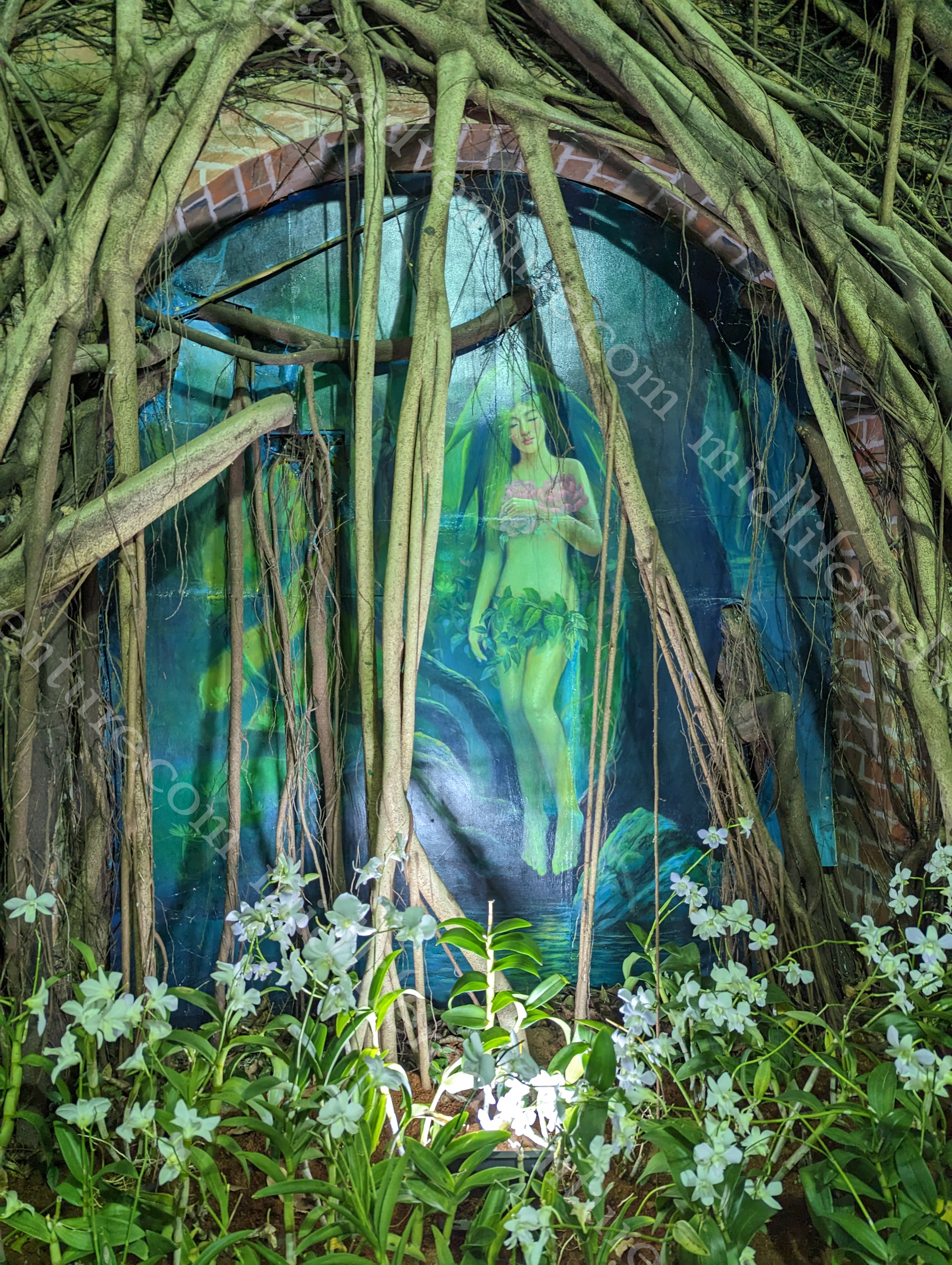
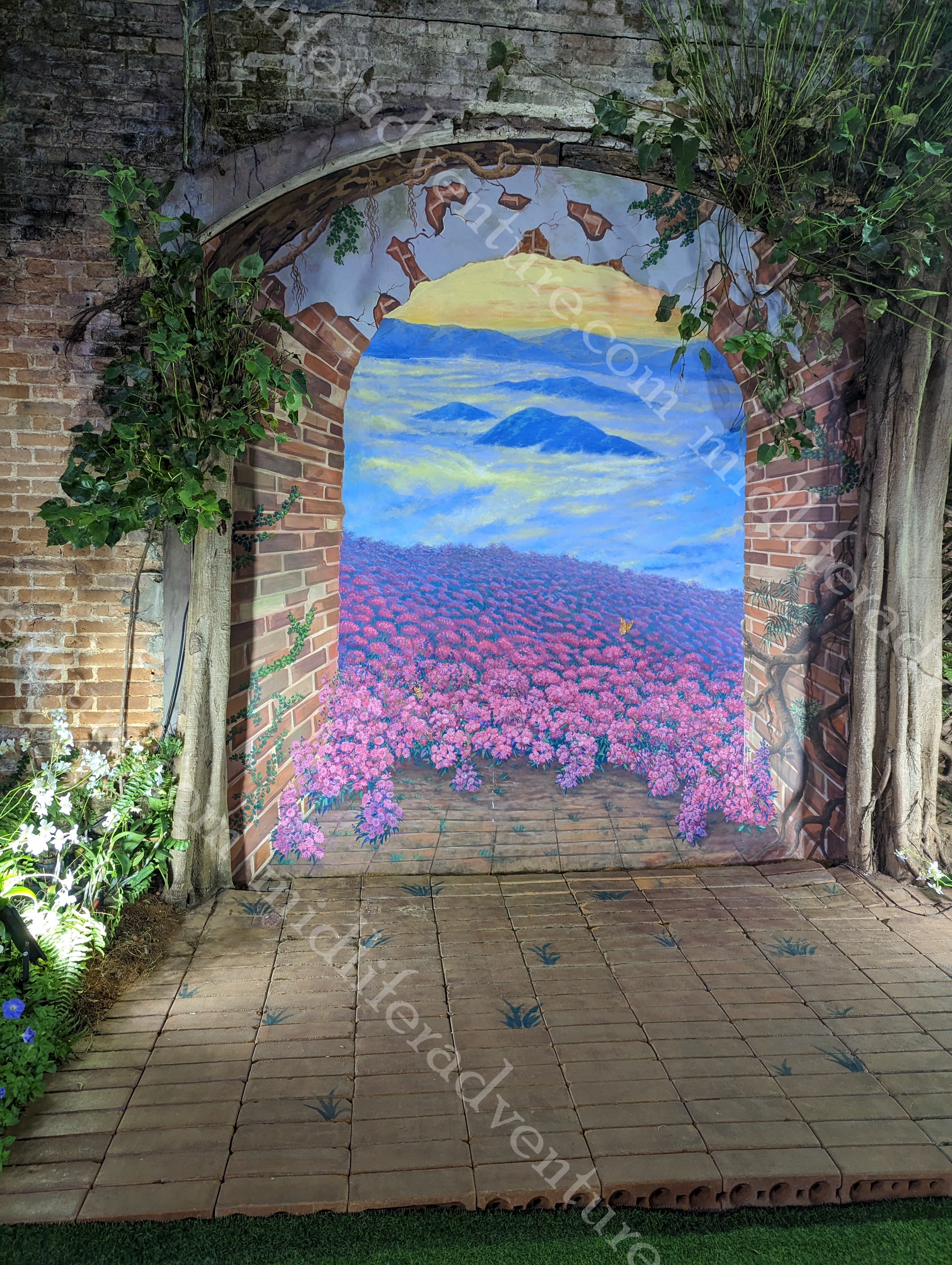
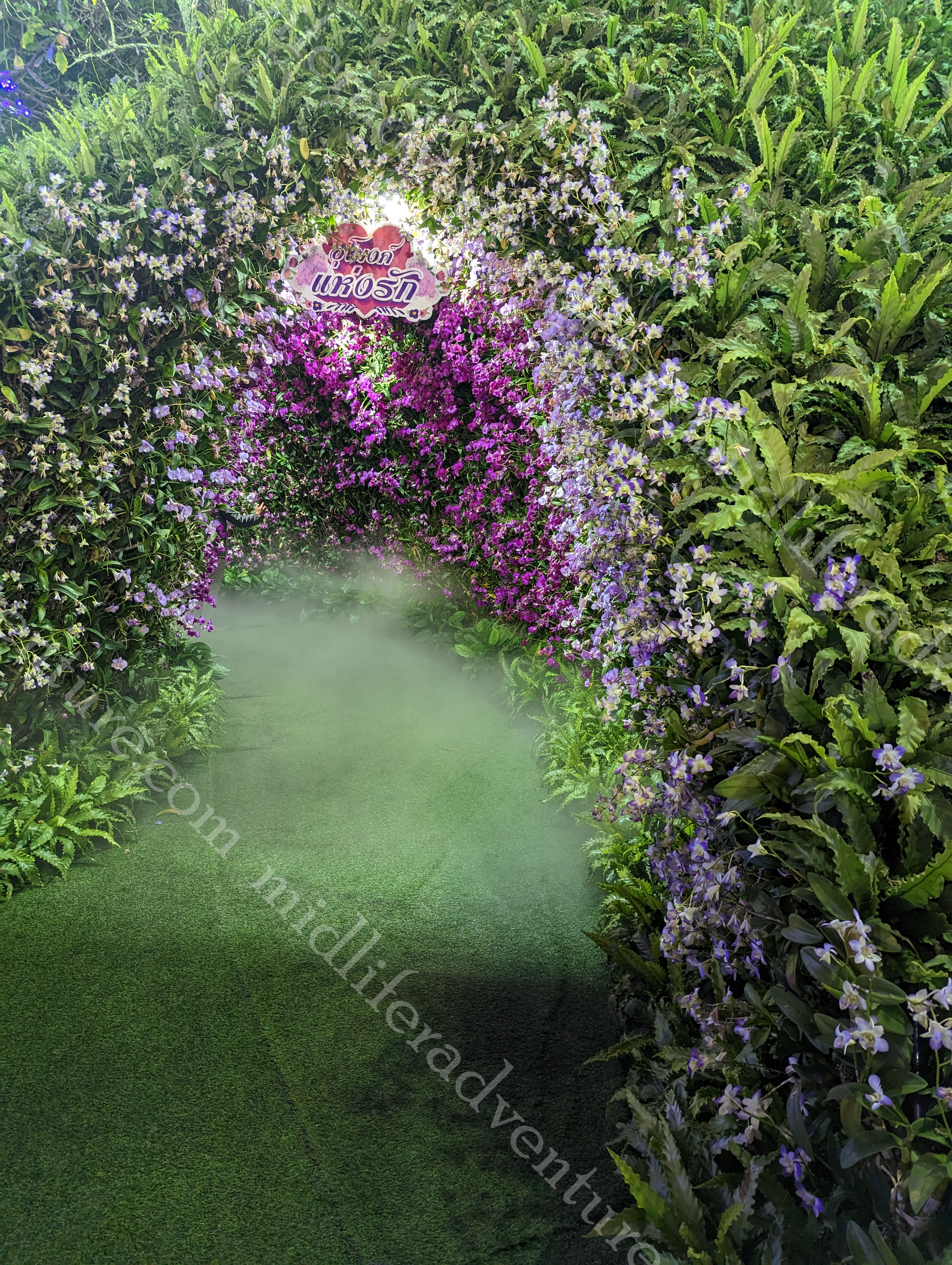

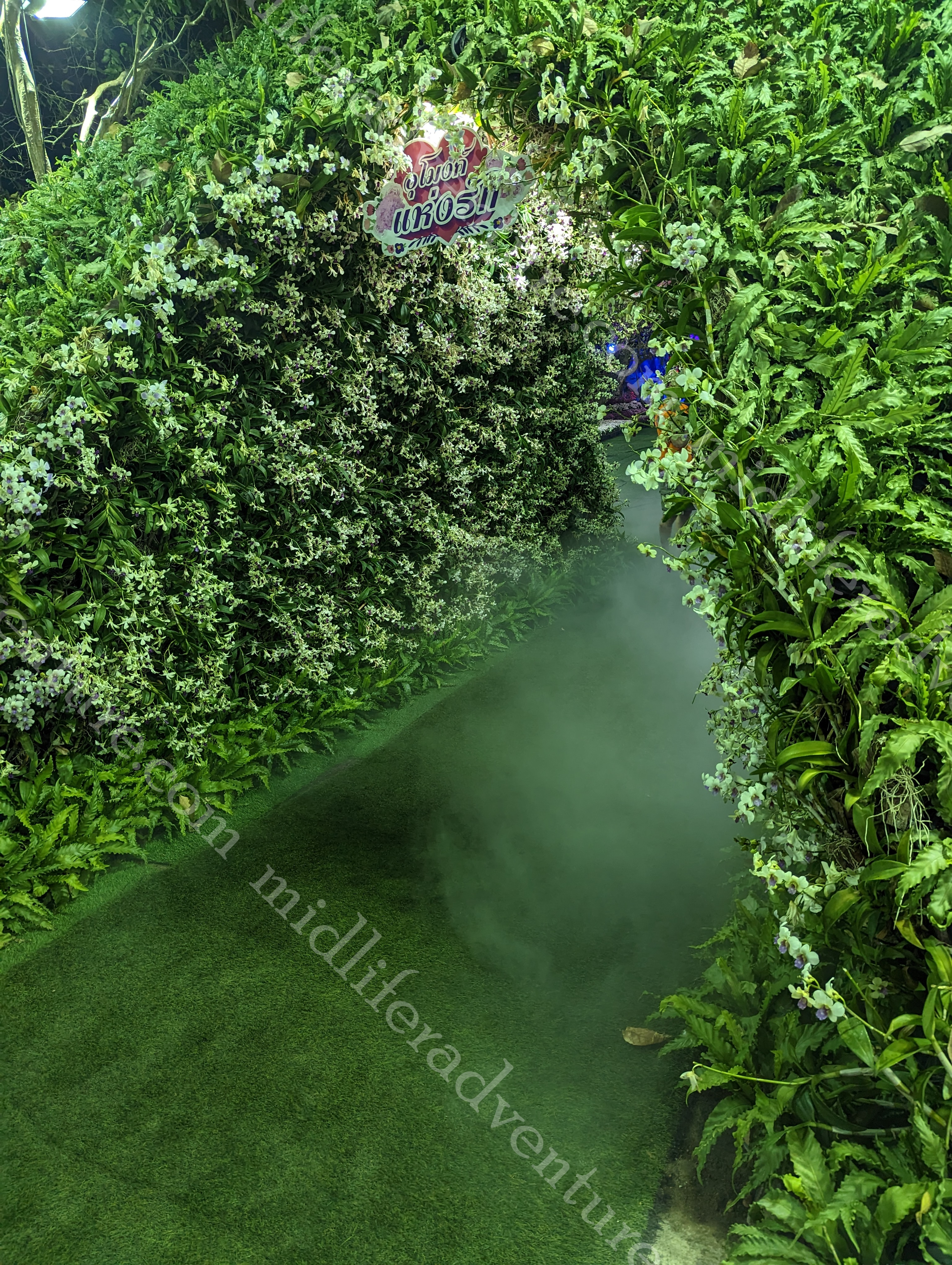
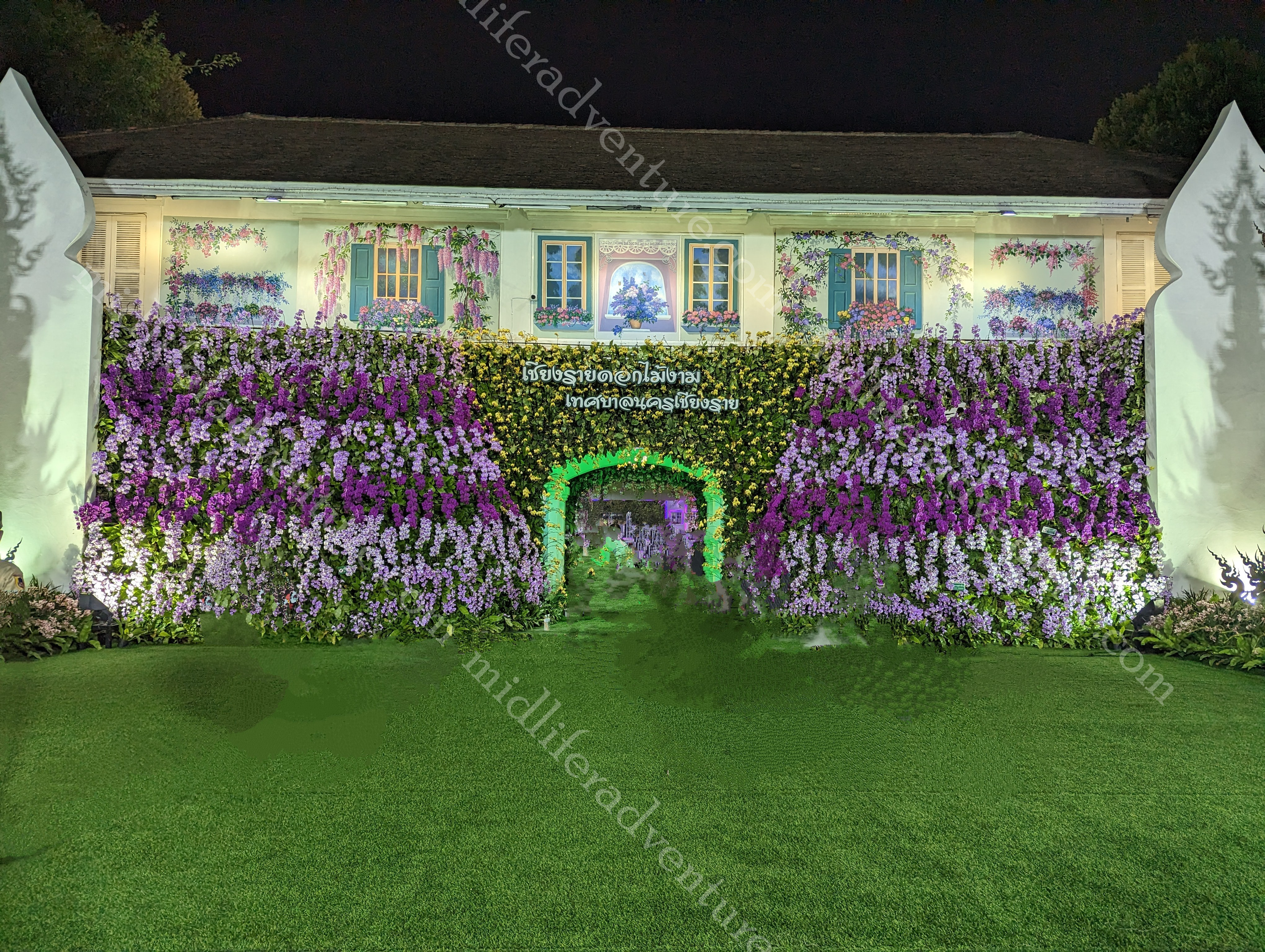

Much more interestingly for someone like me is that they had turned the nearby walking street (an occasional market) into a huge nightly market (with seating) with a massive selection of food that was so cheap that it almost rivalled Cambodian prices (bearing in mind that everything in Thailand is about 2.5x more expensive).
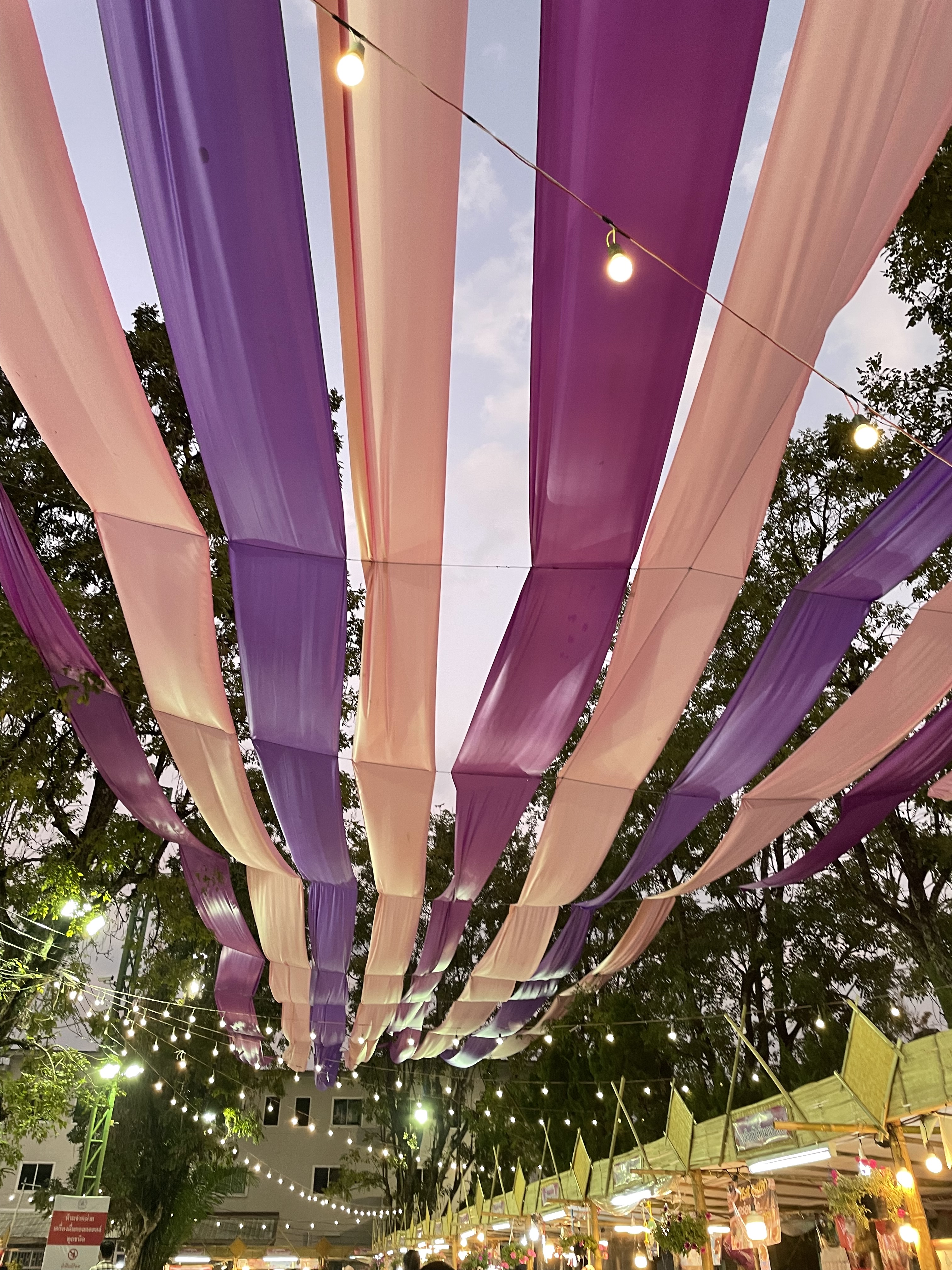
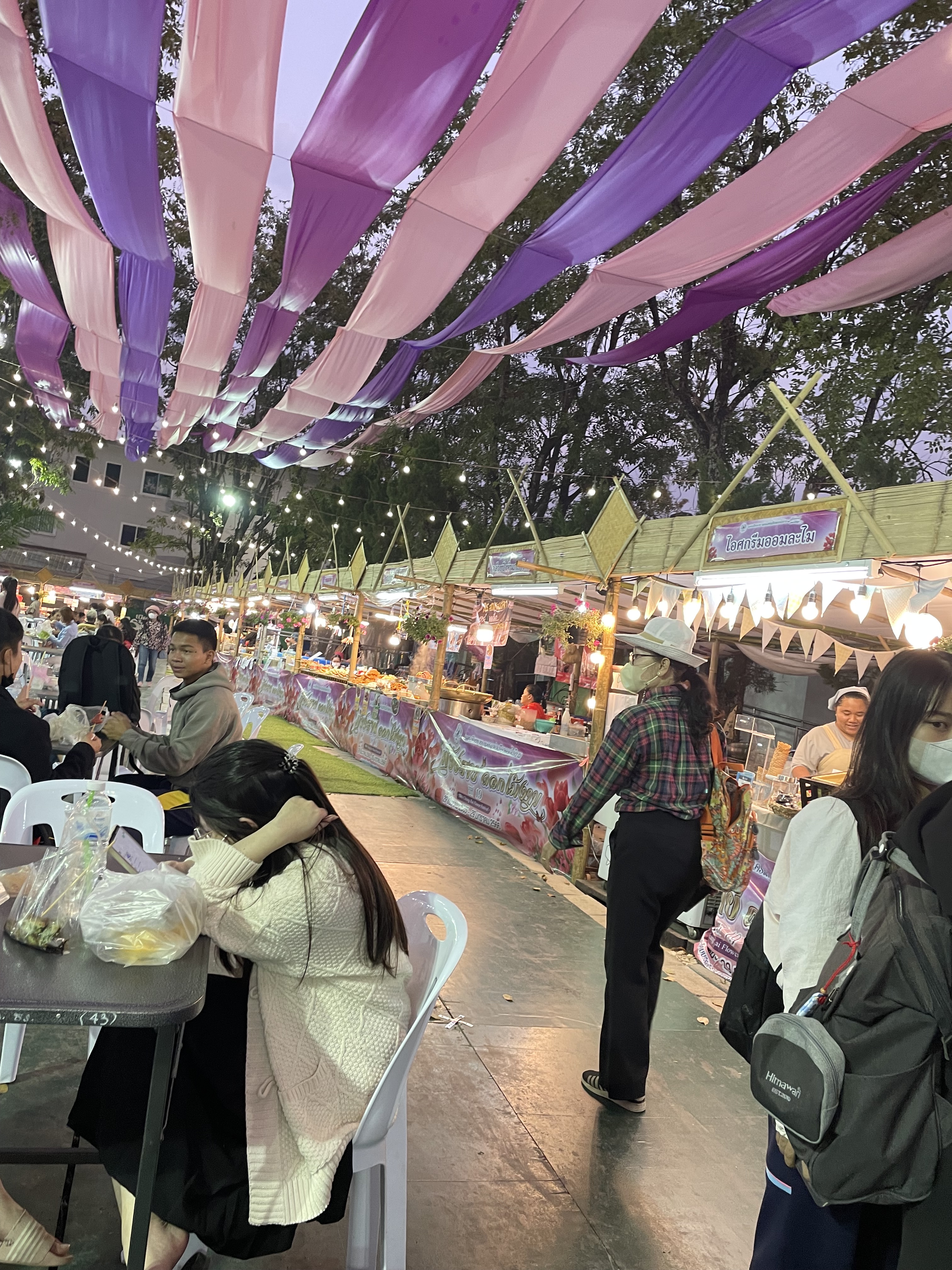
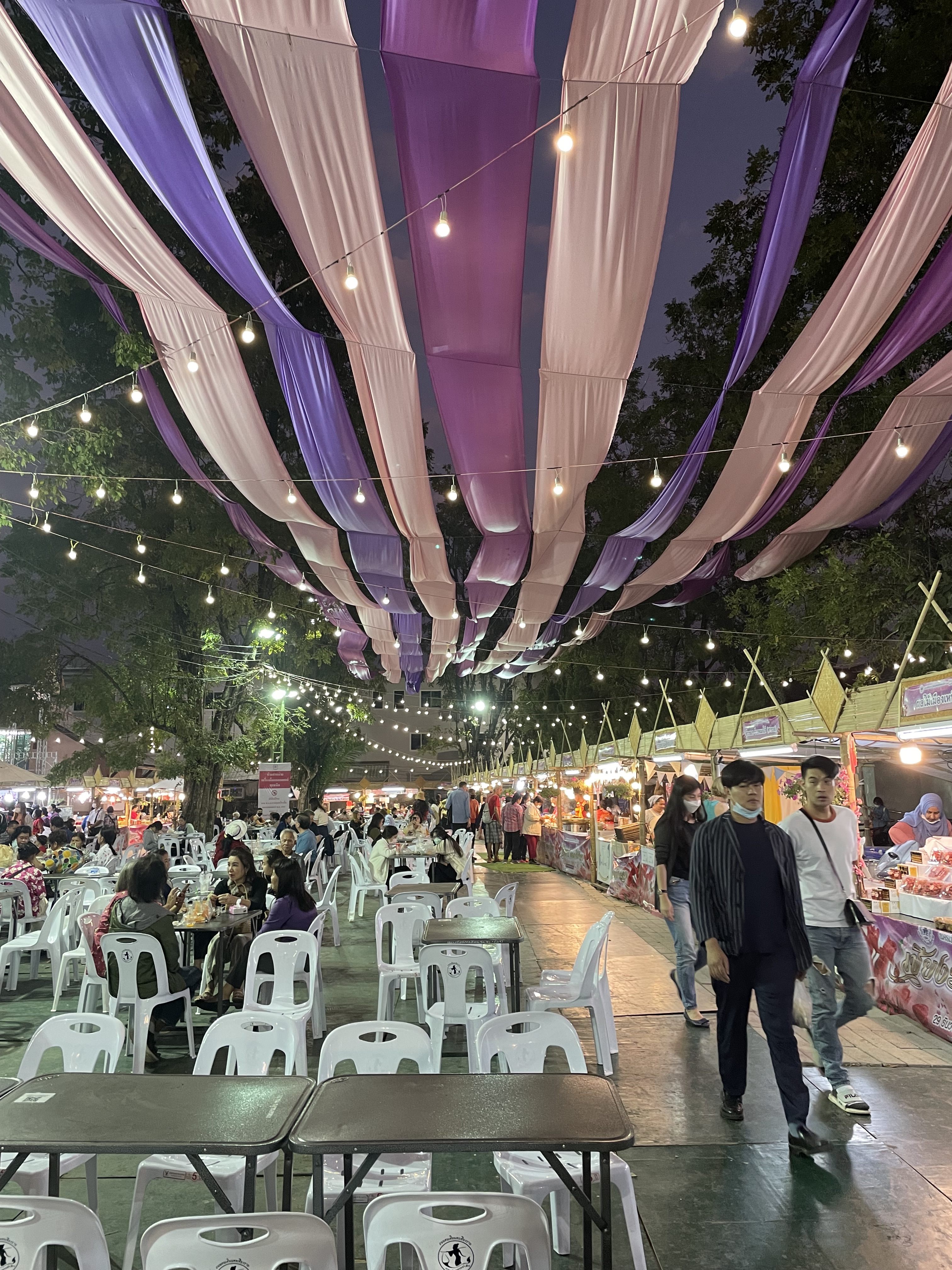
Chiang Mai was much better than I expected. Most people come and do an overnight here but as you can see from above there is much more to see and do here than that. We were here for 7 days which gave us plenty of time to see what we wanted without busting a gut.
Things around that we didn’t do
Wat Tham Pla- the Fish Cave Temple or Monkey Temple
I will state upfront we did not go here and the couple of photos are not ours. This is a Buddhist temple at the foot of the Doi Nang Non mountain range. This is the same mountain range where the soccer team had to be rescued from a cave a few years back. The entrance is guarded by a massive staircase 7-headed Nagas (mythical serpents) and the temple is basically the same as all others – but in a cave.


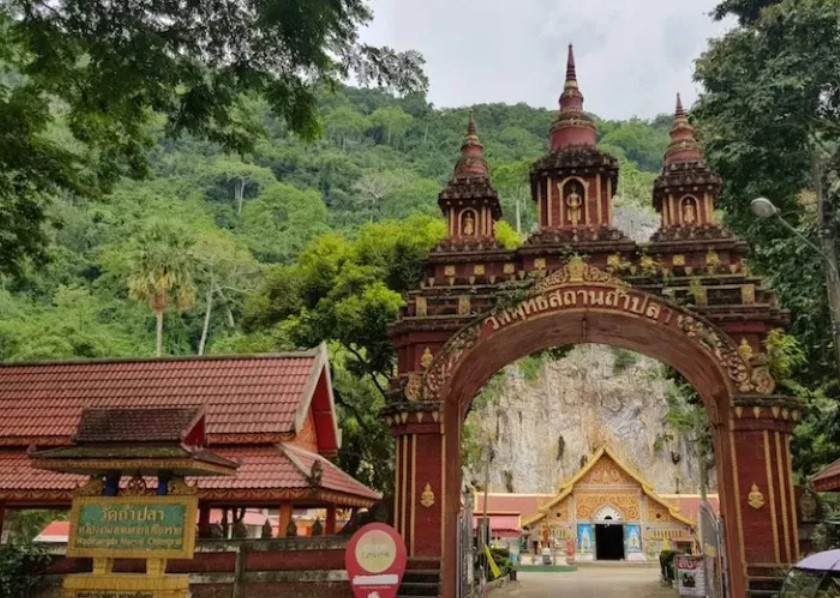
The main reason we did not go here is that it was 50km from town and the temple was infested with monkeys (northern pig-tailed macaques to be precise). Even the official websites tell you that the temple is overrun with monkeys and reviewers tell us that they are quite menacing and are known to jump on unsuspecting tourists and snatch their things – so visit at your own risk!
Visit the remote Karen Hilltribe Village

Karen hill tribe villages are scattered all across northern Thailand and can be found in just about every province. Many traditional villages can still be found in remote areas of Thailand. They tend to dress in traditional clothing and live in primitive bamboo stilt houses.
As we had seen and got photographed with them in Myanmar, we chose not to do the 50 km trek to see them again.
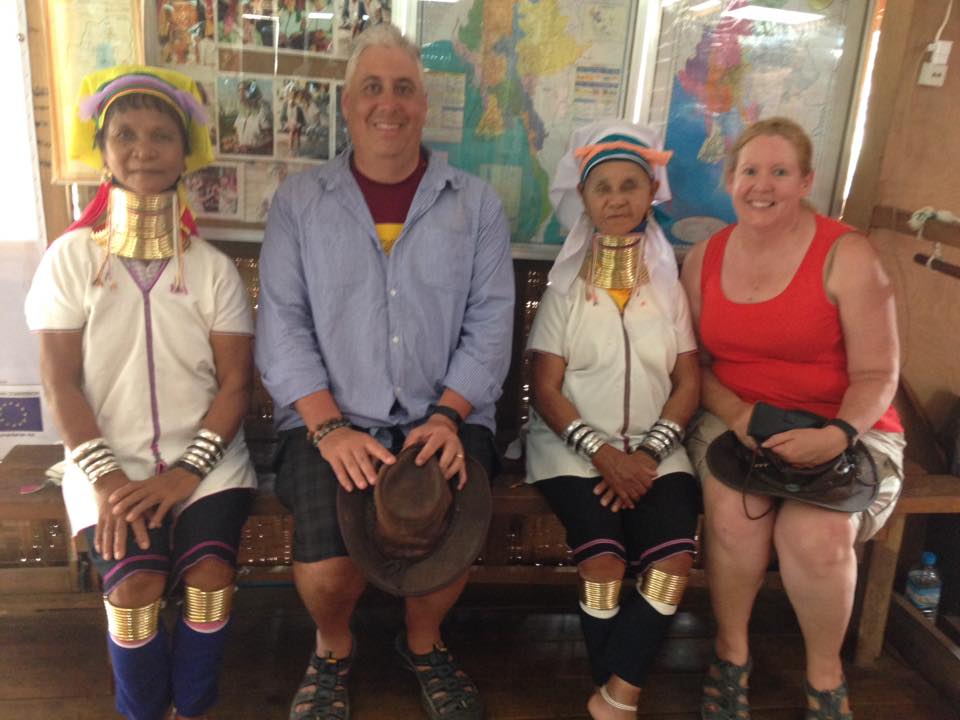
Visit the golden triangle
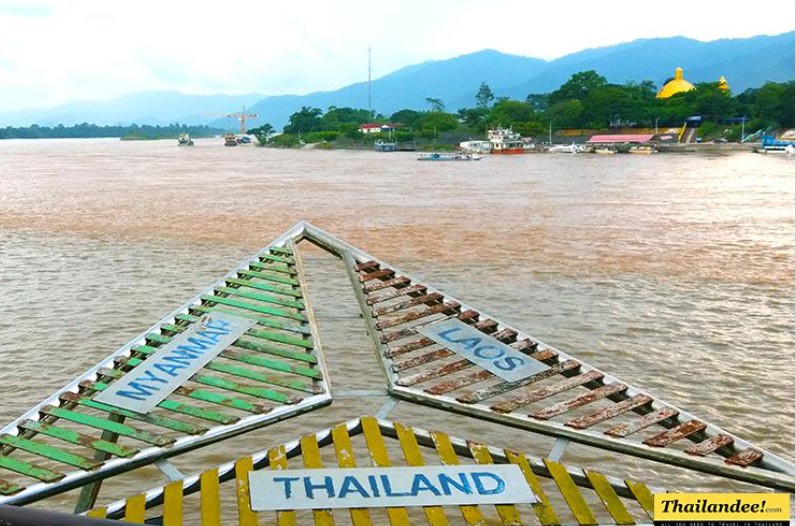
This is the tri-border area of Thailand, Laos and Myanmar once renowned for the opium and heroin trade. Having been to all three countries already we passed on seeing the sign.